Tanzania: Wildlife Spectacular Tour Report 2022
12 June 2022































































































































A rutting pair of Grants Gazelles in Ngorongoro (image by Inger Vandyke)
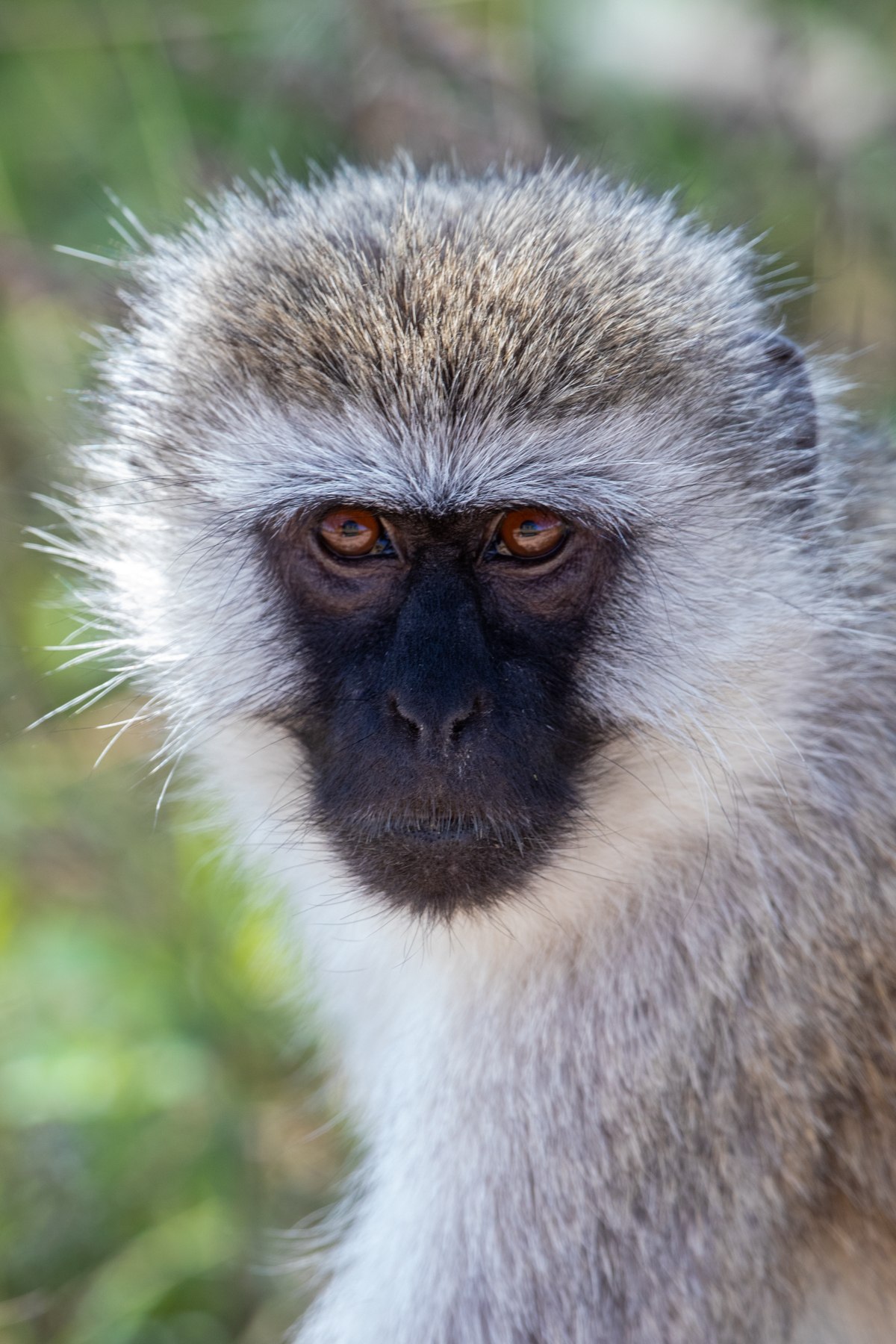
Portrait of a young Vervet Monkey at Lake Manyara (image by Inger Vandyke)

A Greater Flamingo preening its feathers in Lake Ndutu, Tanzania (image by Inger Vandyke)
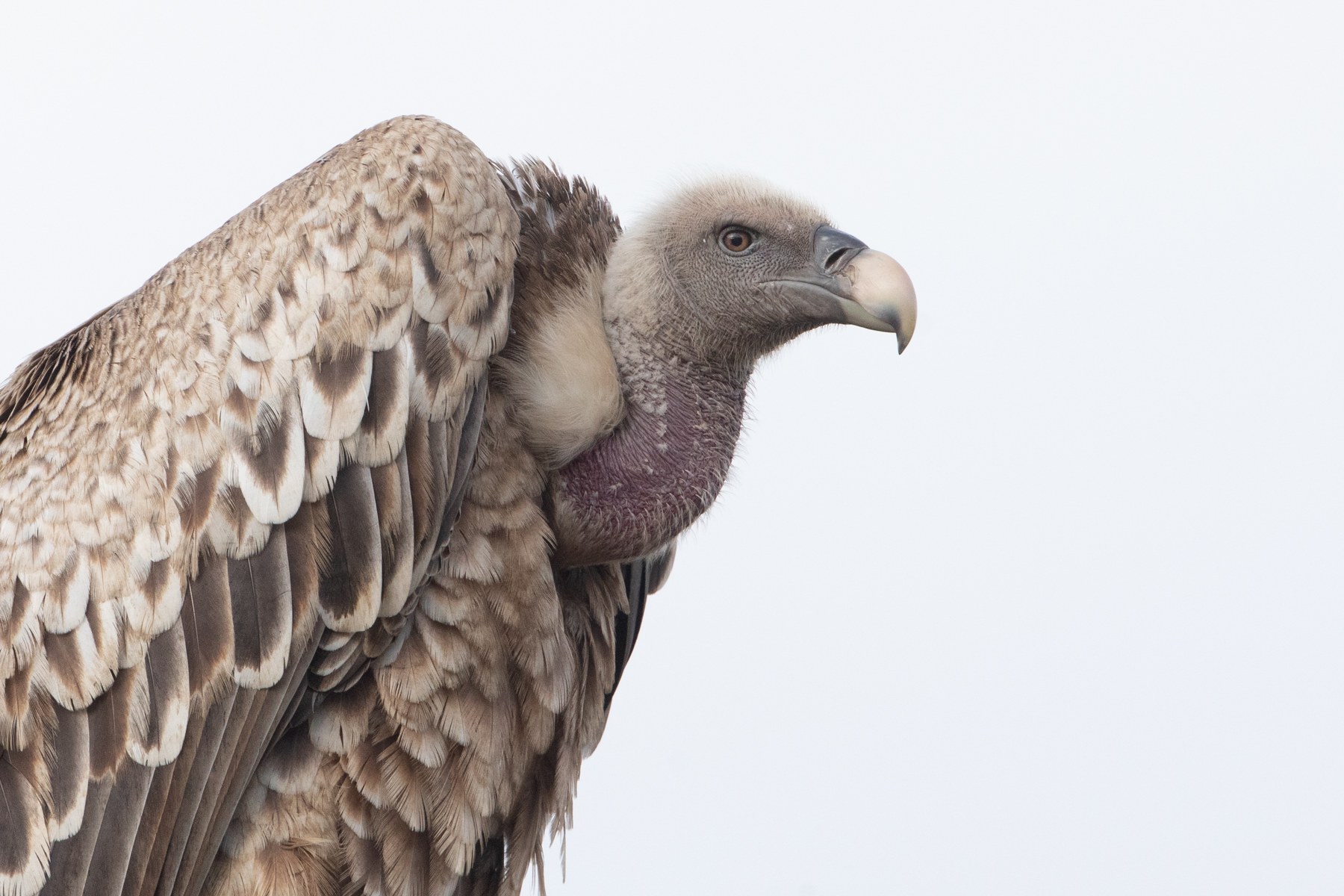
Portrait of a Ruppell's Vulture (image by Inger Vandyke)
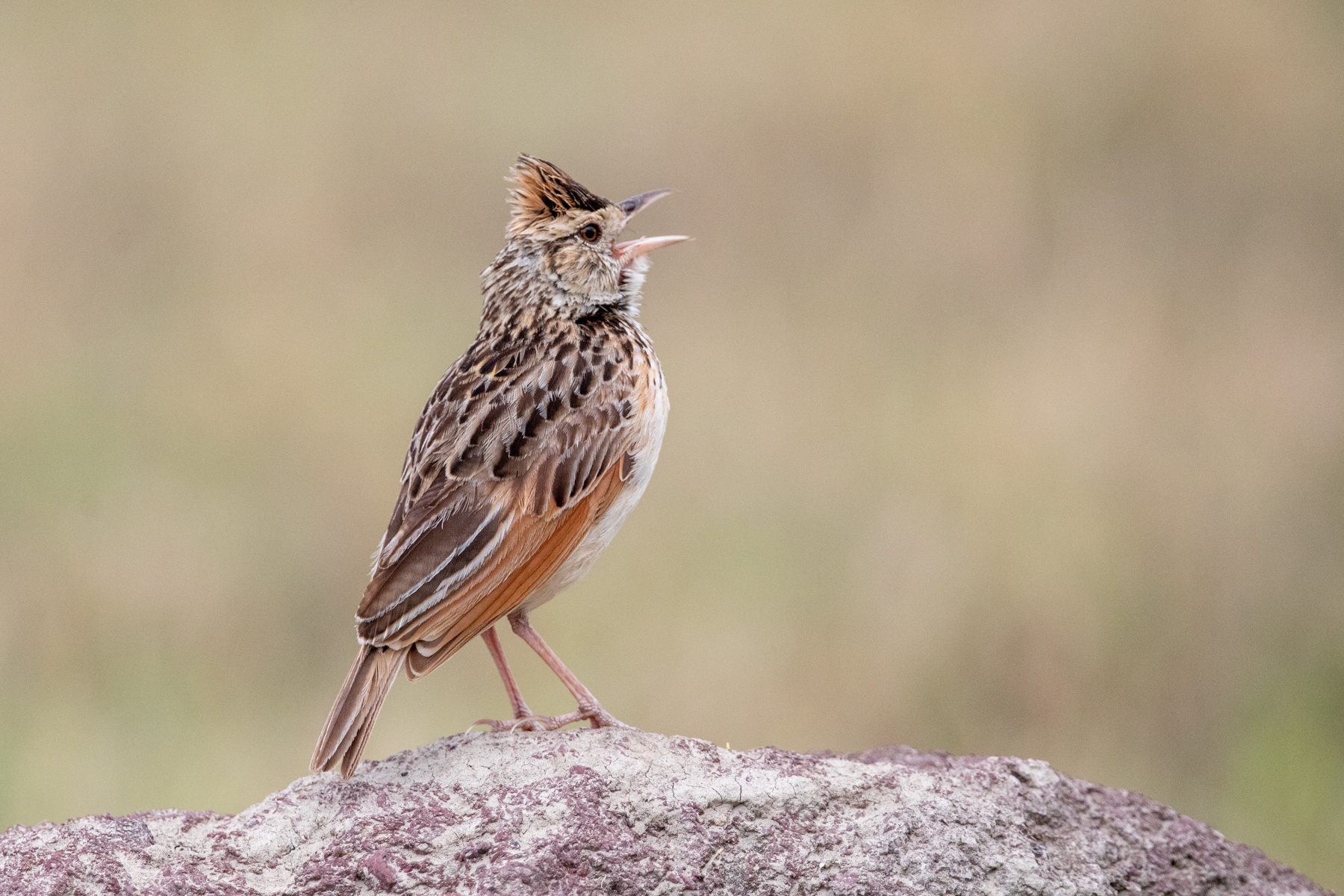
One of the funnier and regular features of our tour is the regular displays by Rufous-naped Larks (image by Inger Vandyke)
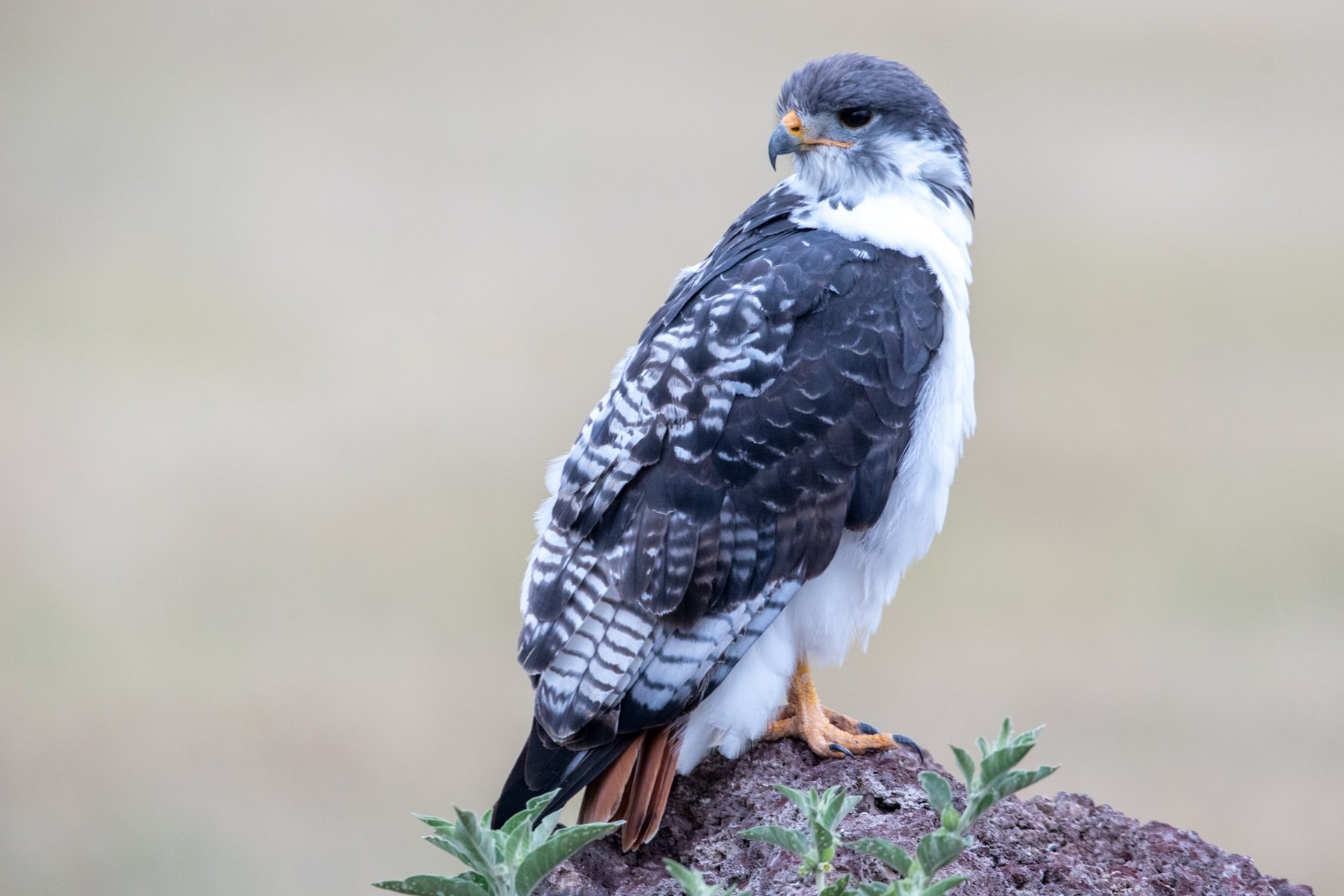
Beautiful Augur Buzzards are a common sight on safaris in Ngorongoro Crater (image by Inger Vandyke)
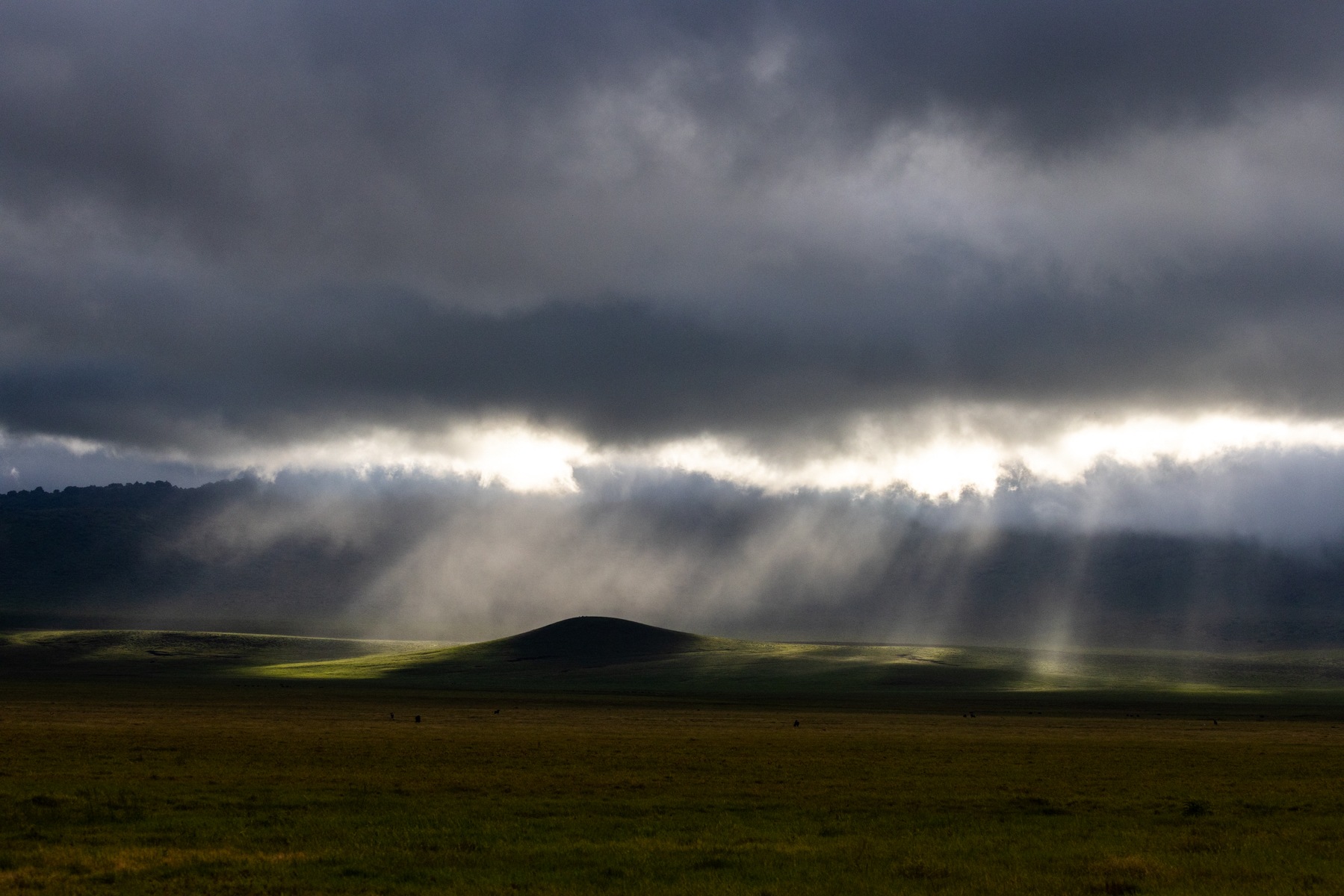
Rays of light illuminate the crater floor at Ngorongoro (image by Inger Vandyke)
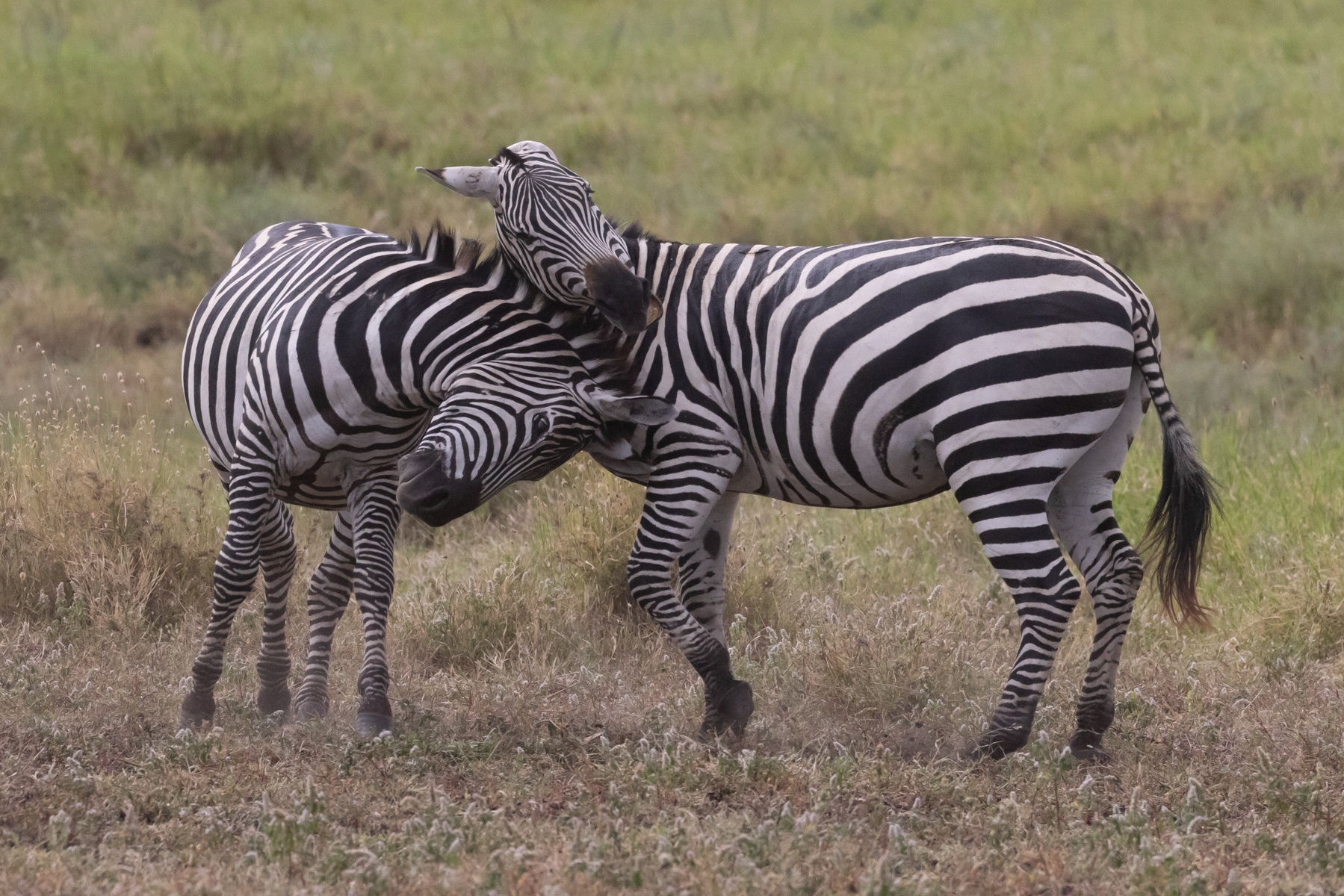
Zebras fighting in Ngorongoro (image by Inger Vandyke)
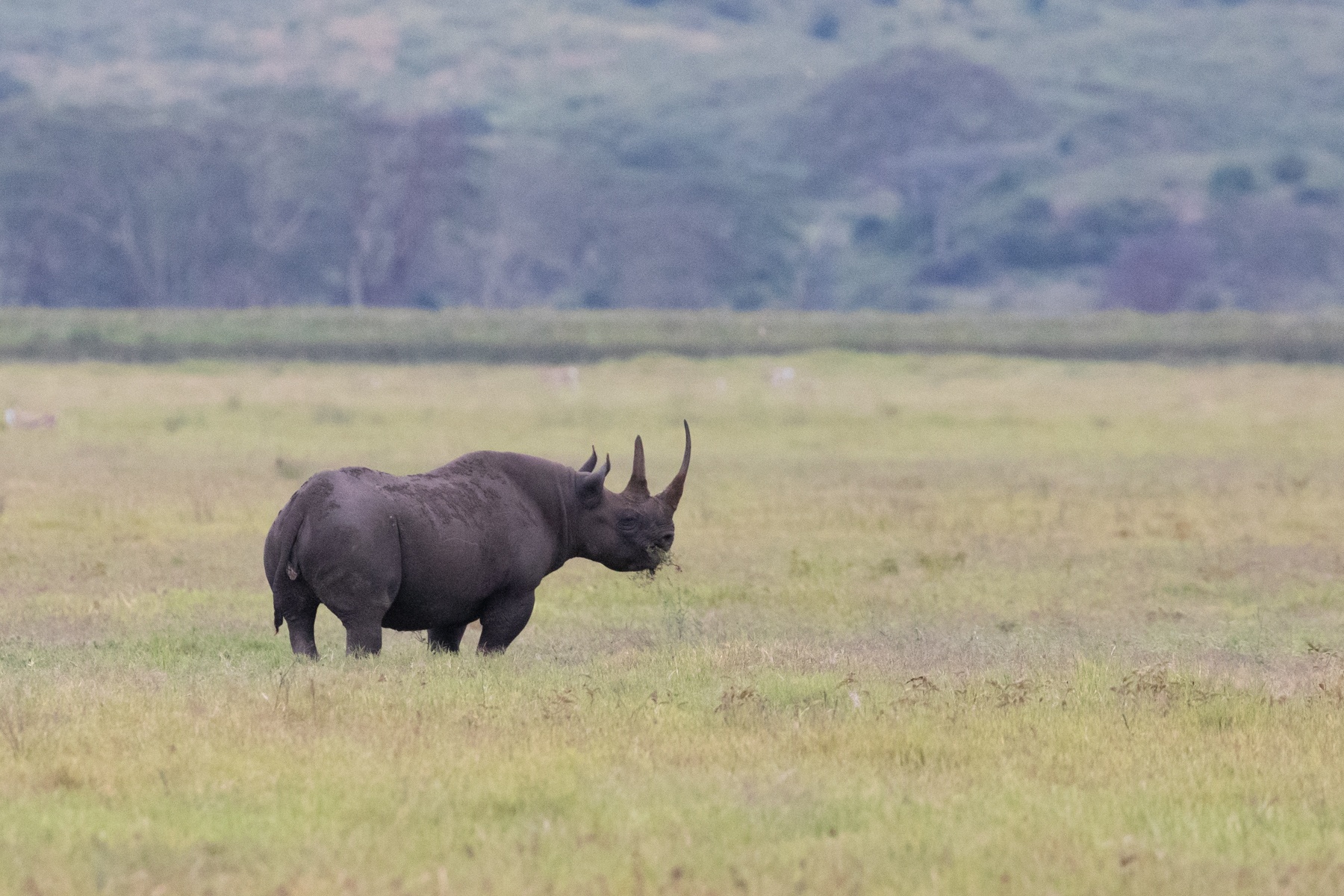
A distant black rhino in Ngorongoro, the first of two black rhinos we saw on our tour (image by Inger Vandyke)
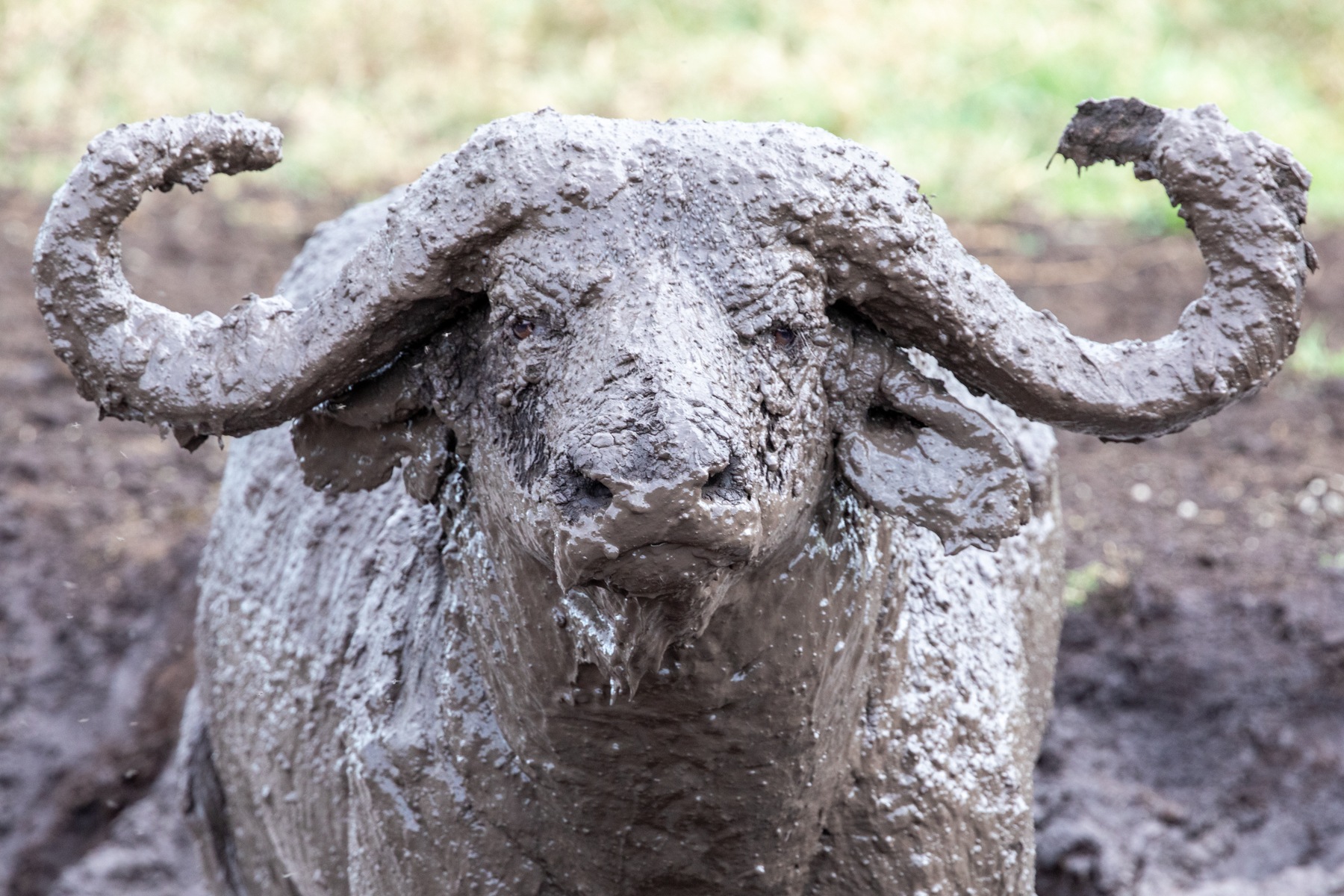
Covered in mud but with eyes wide open, an elderly African Buffalo gets up from his mud bath in Ngorongoro (image by Inger Vandyke)
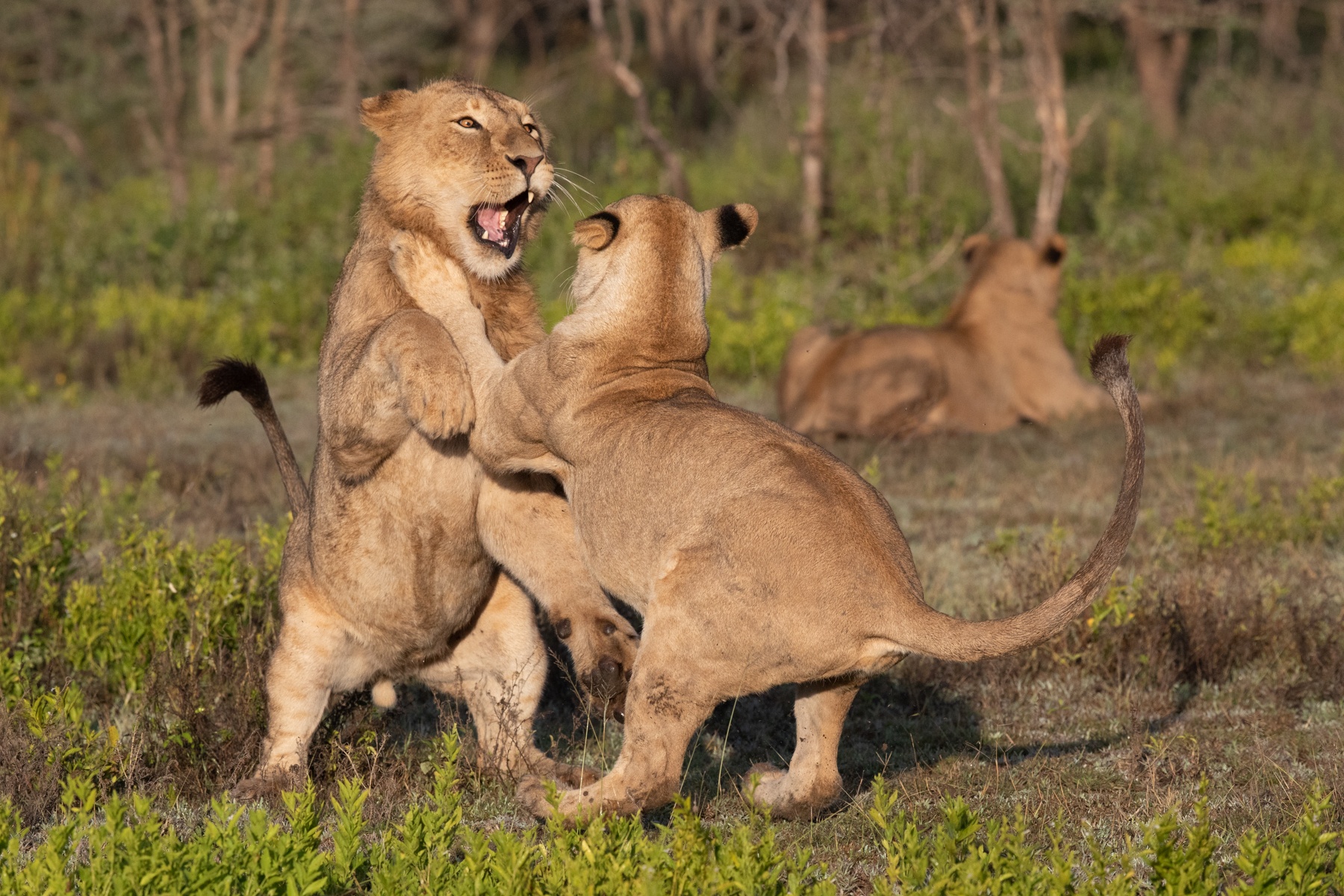
Fighting male lion cubs at Ndutu (image by Inger Vandyke)
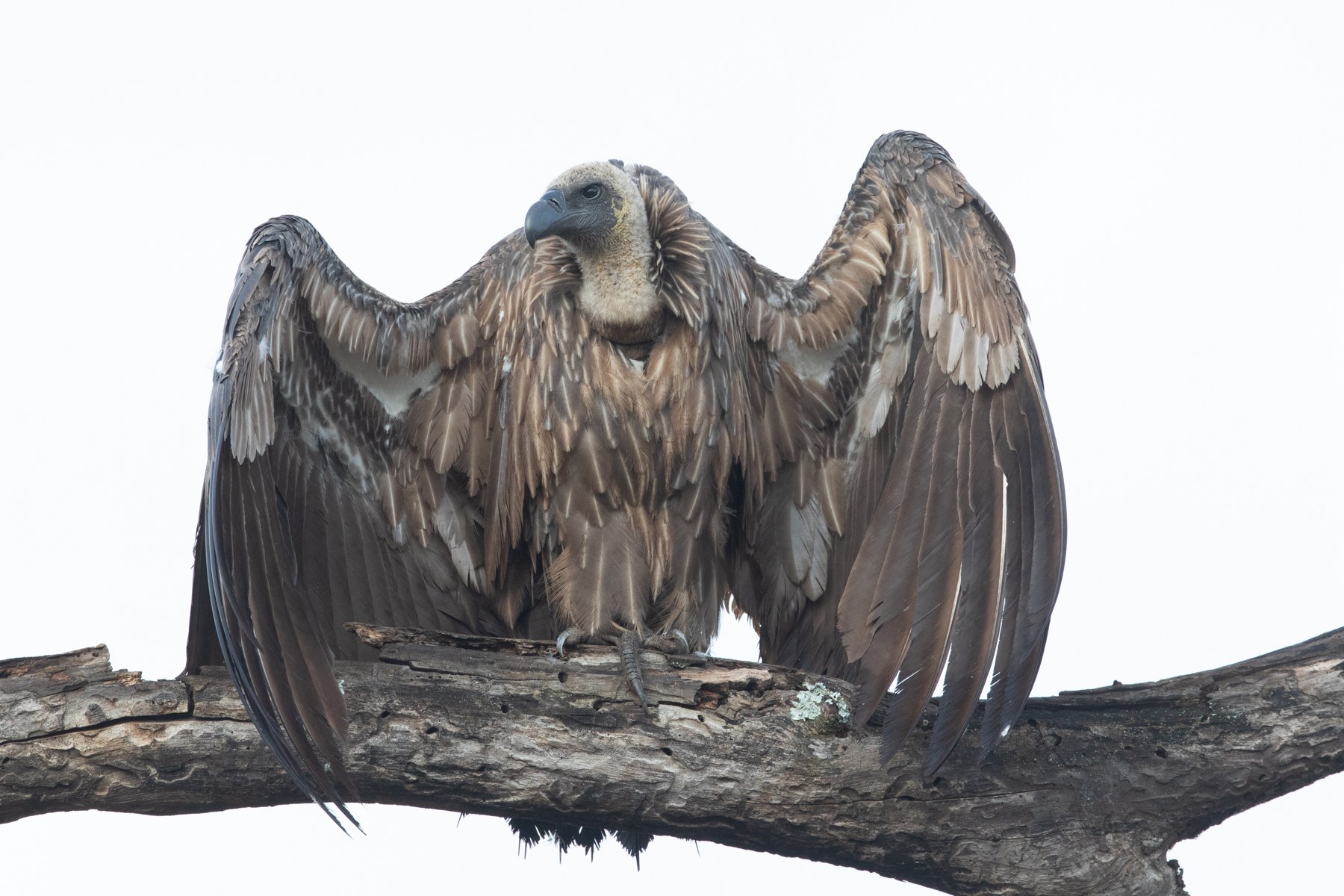
A White-backed Vulture suns itself in the early morning light of the Serengeti (image by Inger Vandyke)
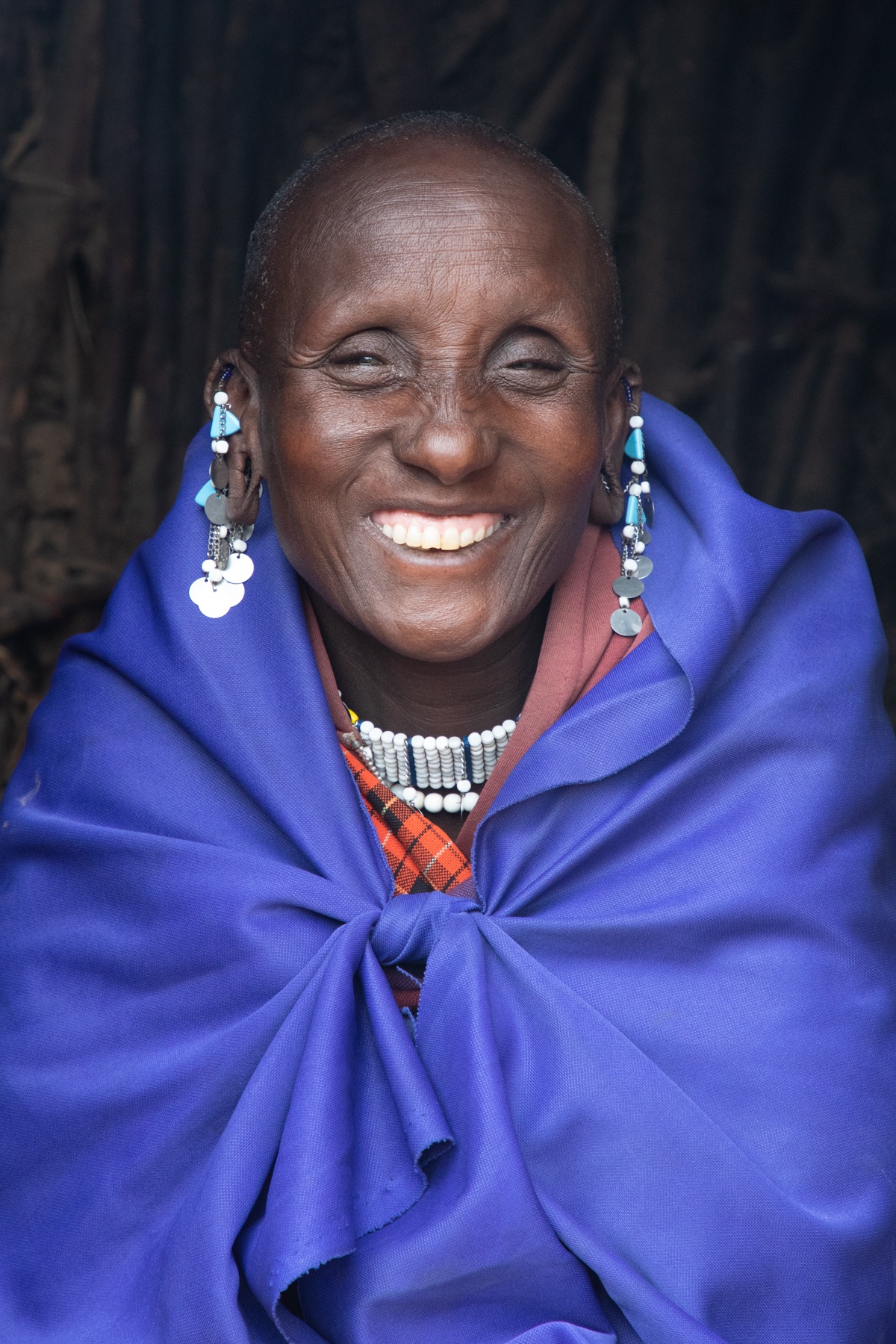
The warmest smile of an elderly Maasai woman at her boma near Ngorongoro (image by Inger Vandyke)

A pair of Kirks Dikdiks near the lodge at Ndutu (image by Inger Vandyke)
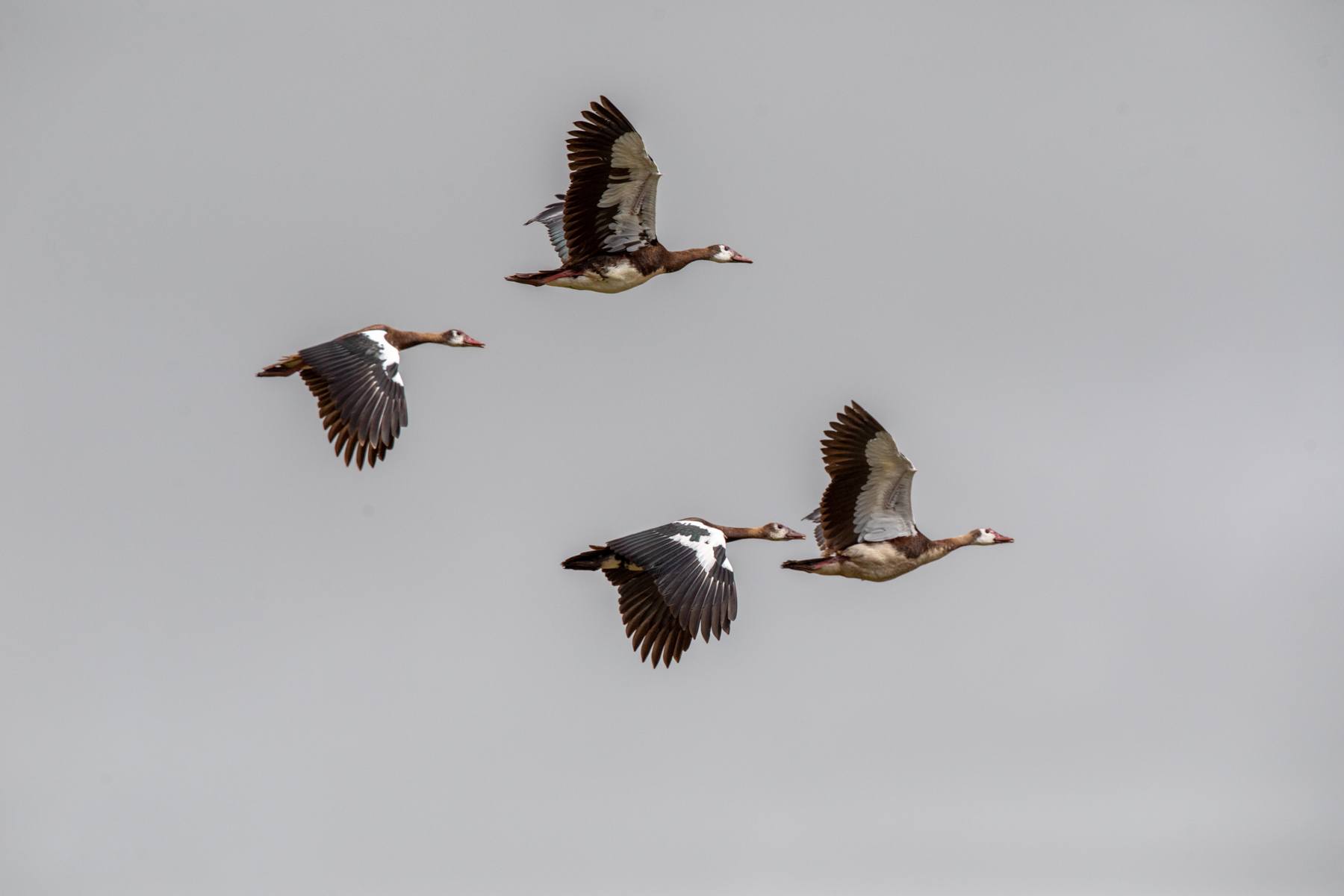
A flock of Spur-winged Geese in flight at Ngorongoro (image by Inger Vandyke)

A lioness puts up with her tiny cubs jumping all over her in Ngorongoro (image by Inger Vandyke)
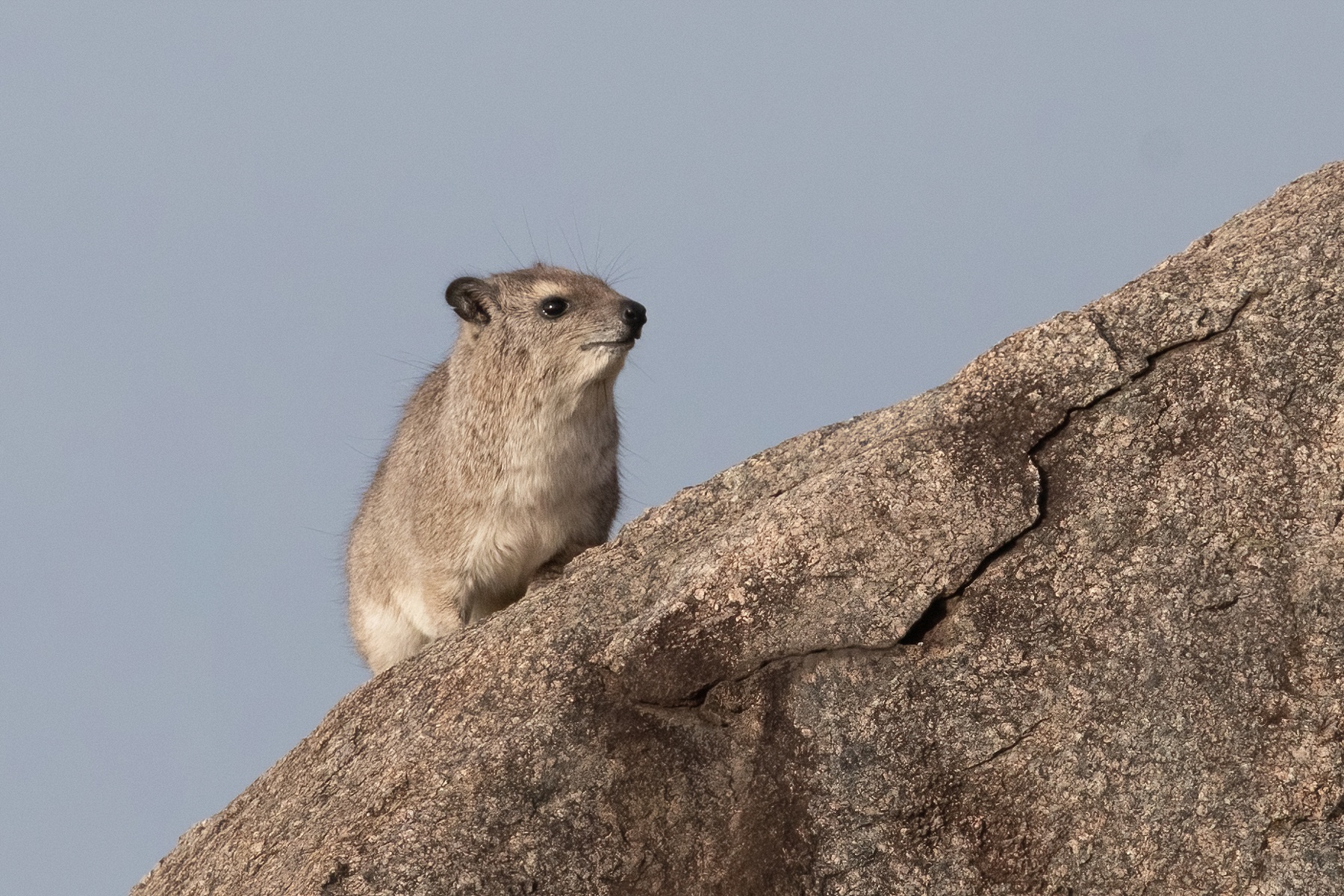
Cute Rock Hyraxes are always wonderful to see on the kopjes of the Serengeti (image by Inger Vandyke)
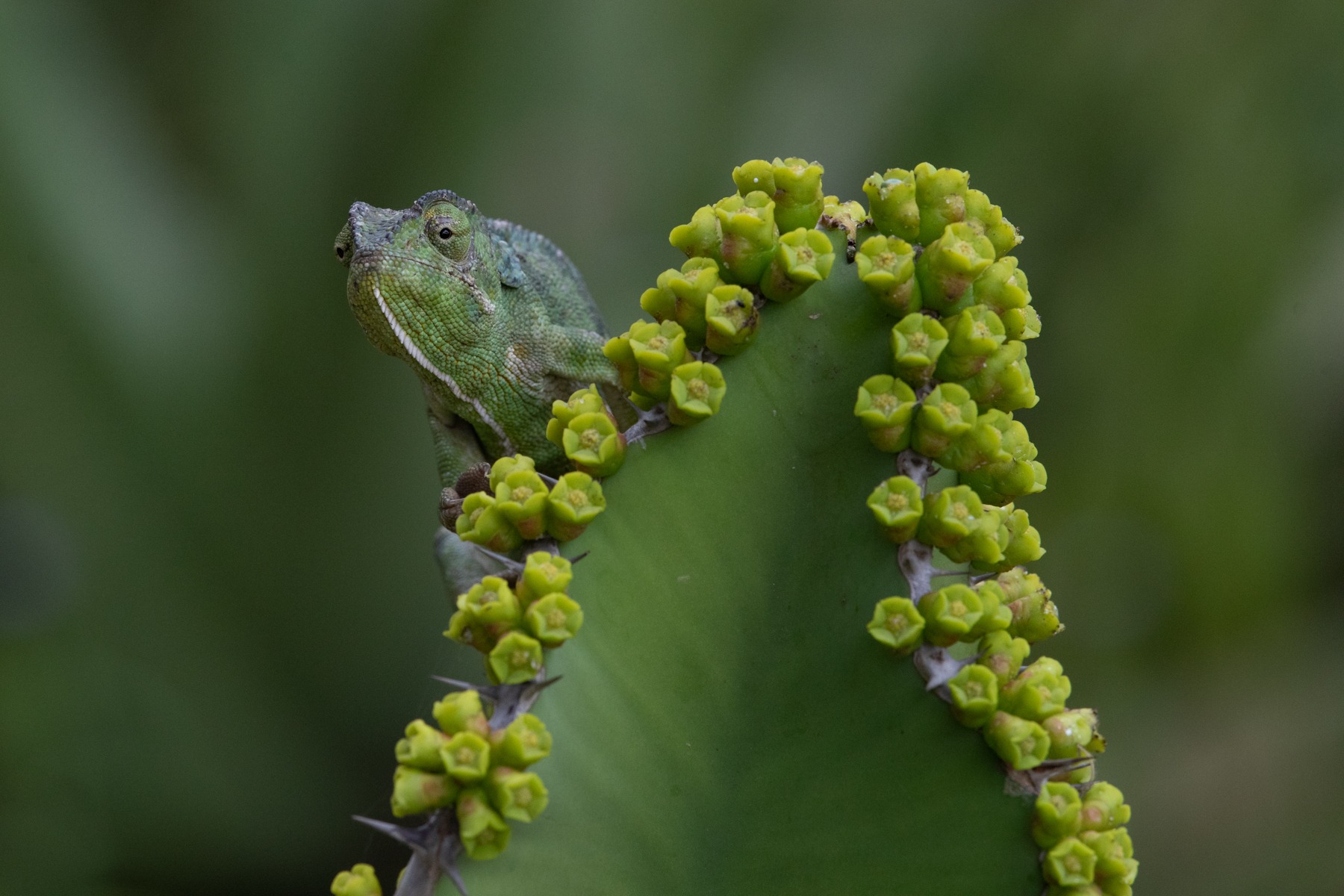
"Who are you looking at?" A shy Flap-necked Chameleon peers around the edge of a euphorbia in Ndutu (image by Inger Vandyke)

A Grey-breasted Francolin calling in the wilds of Ndutu (image by Inger Vandyke)

An unusual sighting of a Grey Heron riding on the back of a hippo at Lerai (image by Inger Vandyke)
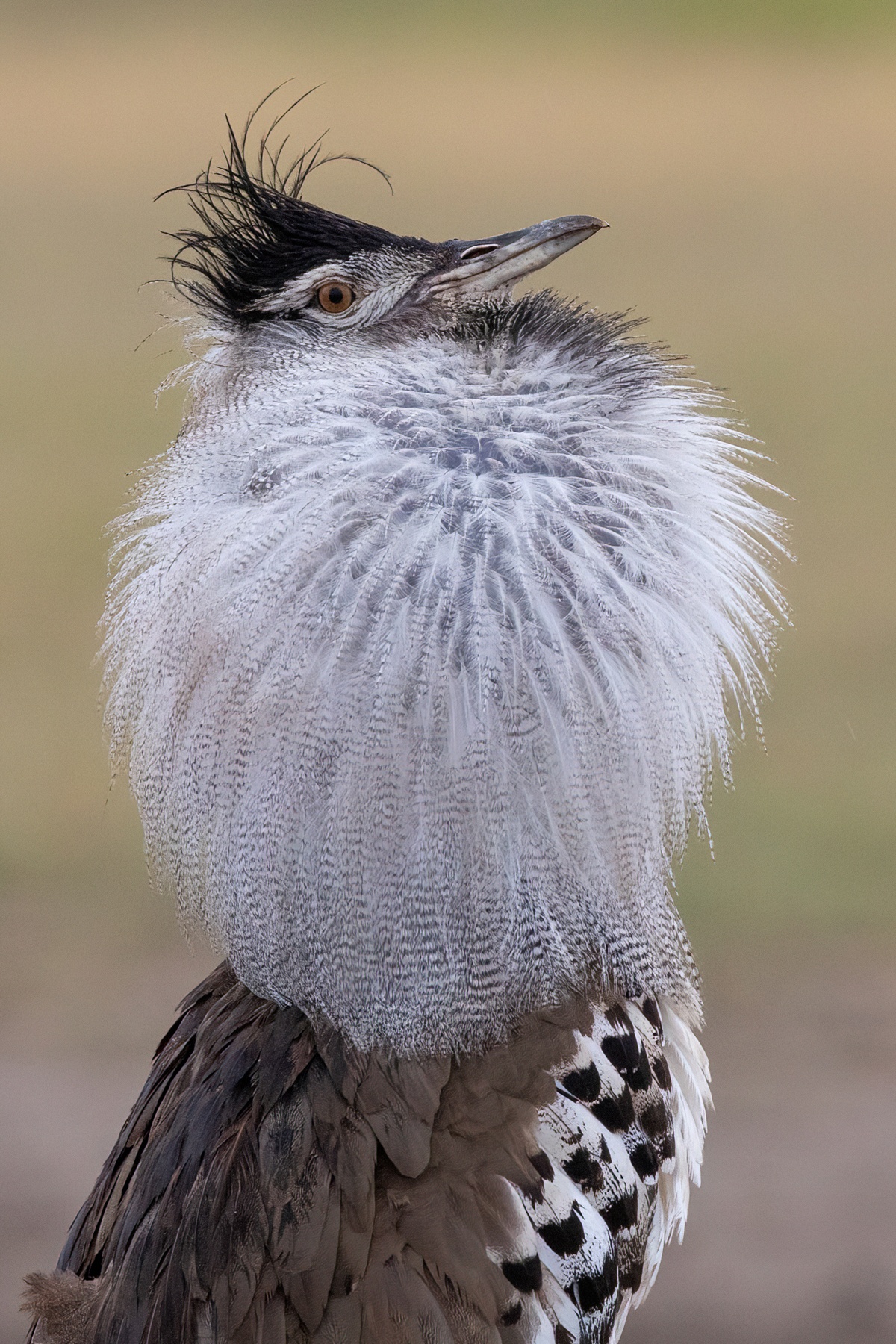
Portrait of a displaying male Kori Bustard in Ngorongoro (image by Inger Vandyke)
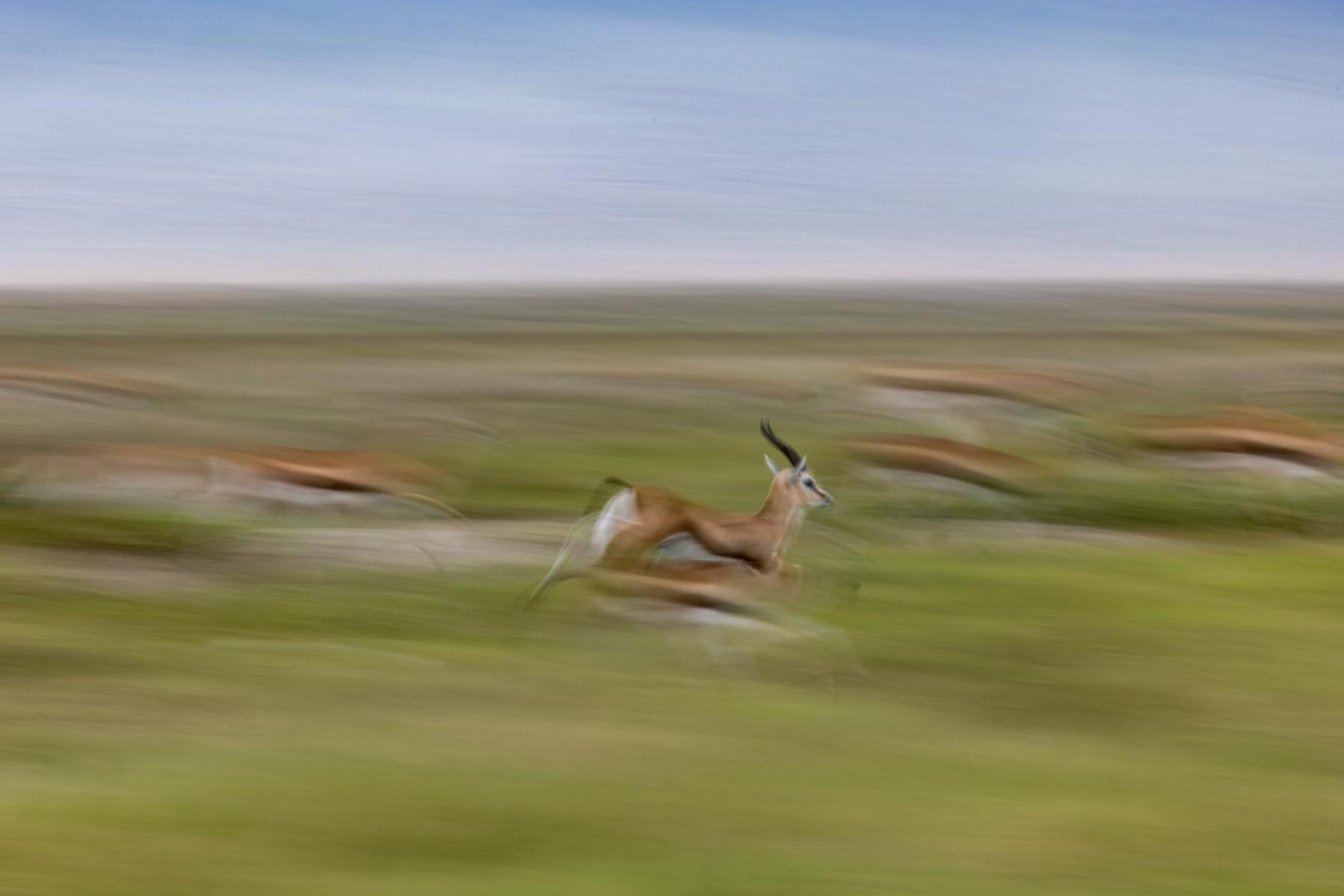
Thompson Gazelle motion blur in Ngorongoro Crater (image by Inger Vandyke)
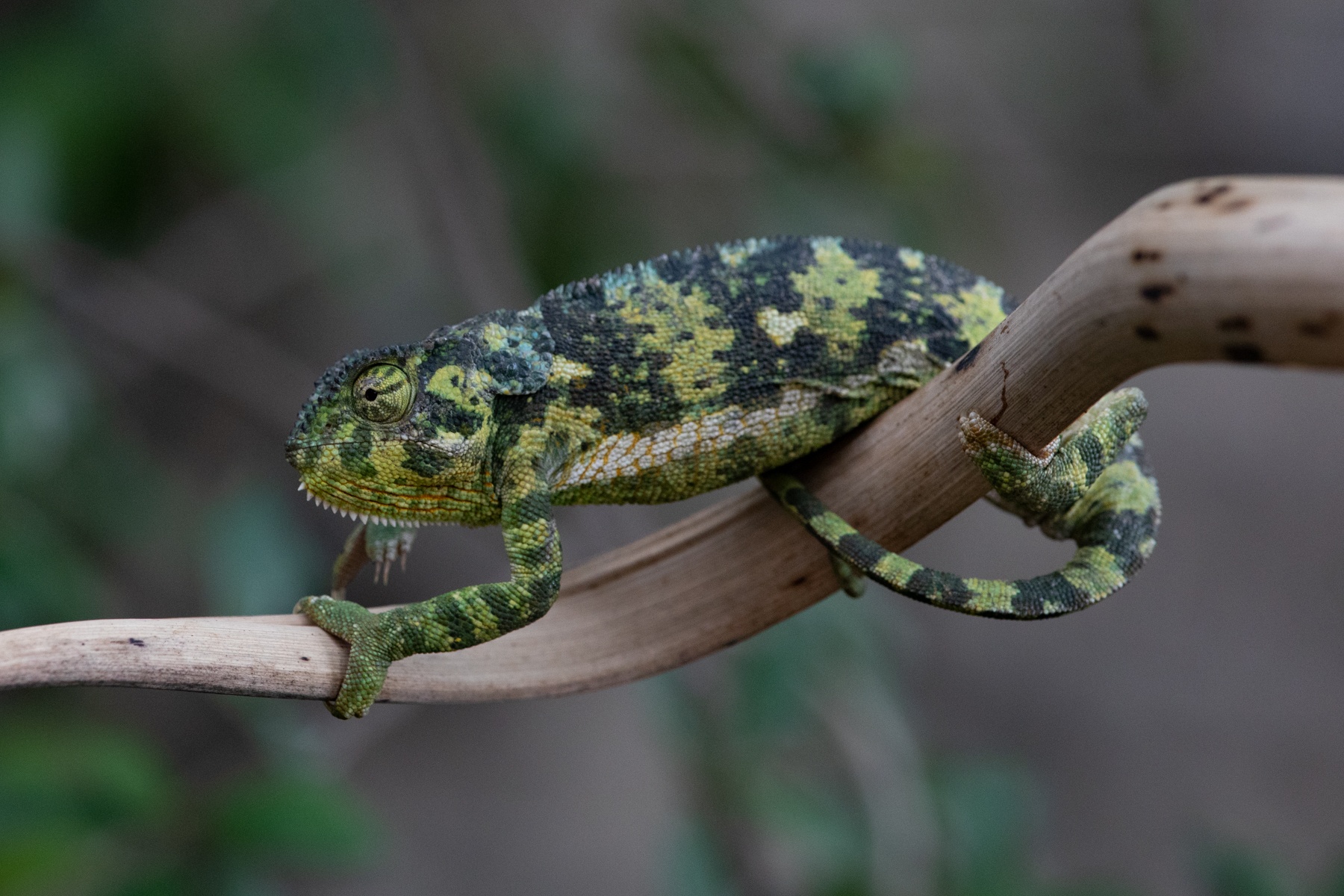
A beautiful young Flap-necked Chameleon negotiates a dry branch in Ndutu (image by Inger Vandyke)
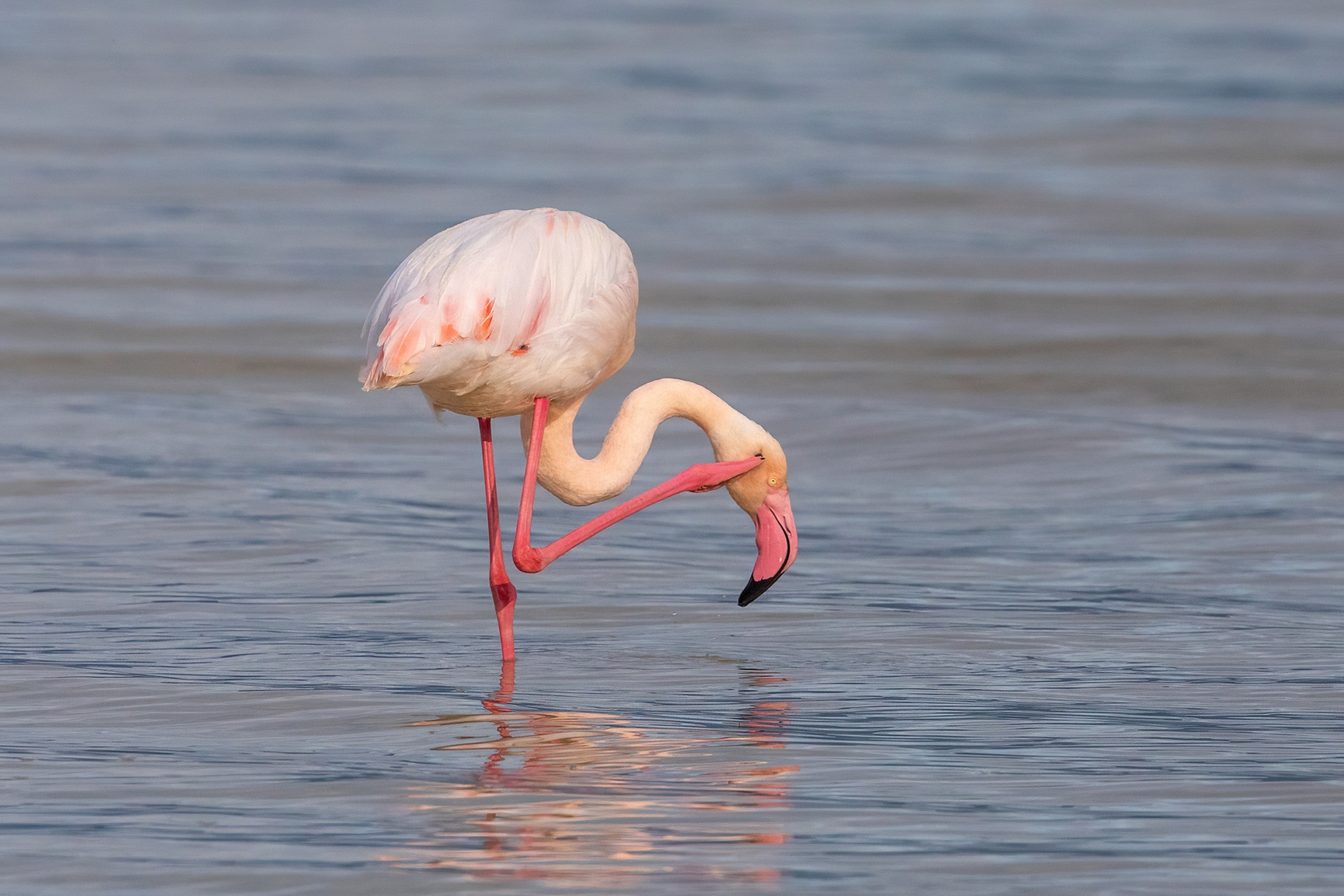
A flamingo takes a scratch in the lake at Ngorongoro (image by Inger Vandyke)

Beautiful Little Bee-eaters in the thorny acacias of Ndutu (image by Inger Vandyke)
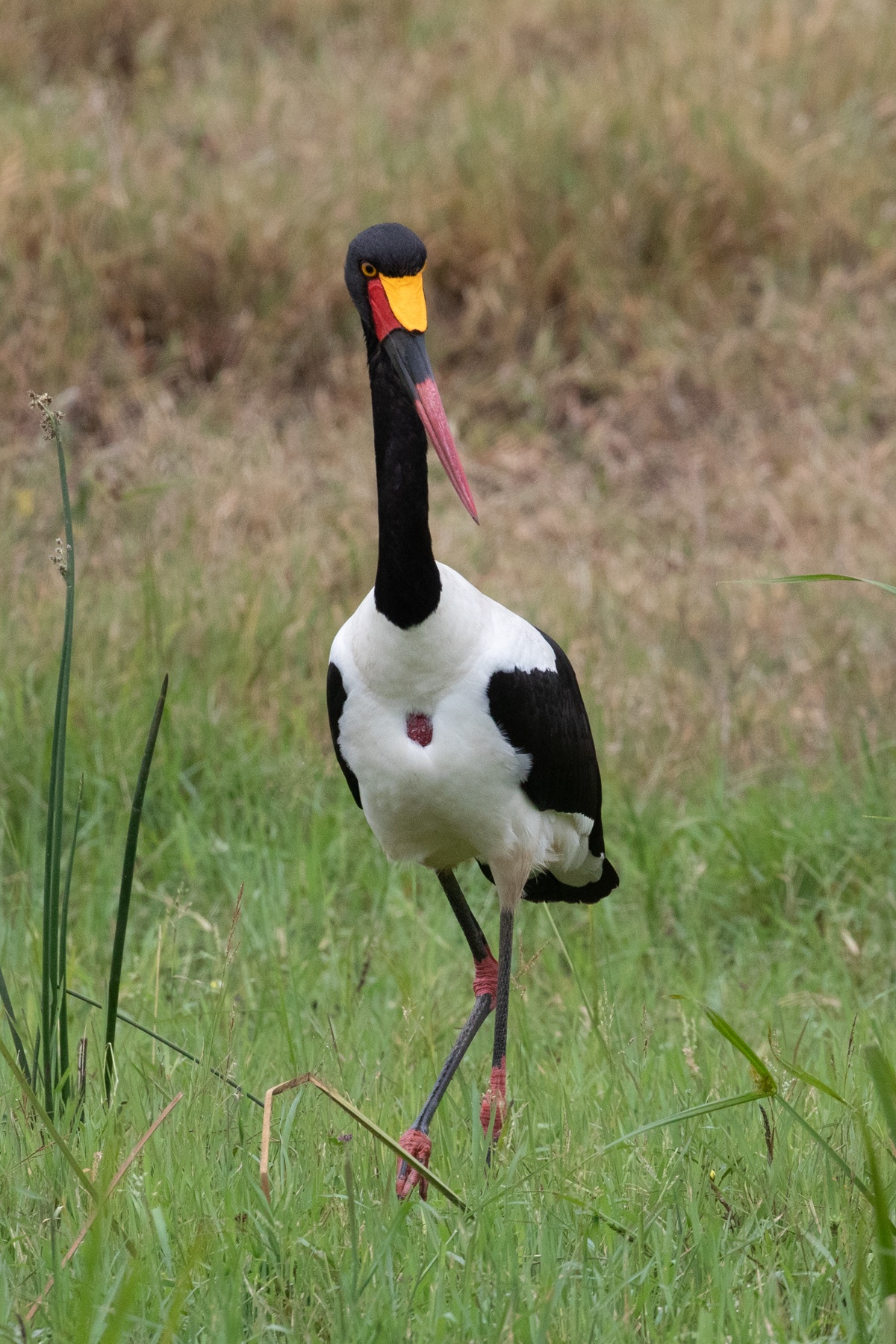
A statuesque Saddle-billed Stork looking for a breakfast of frogs (image by Inger Vandyke)

Portrait of an adult Grant's Gazelle (image by Inger Vandyke)
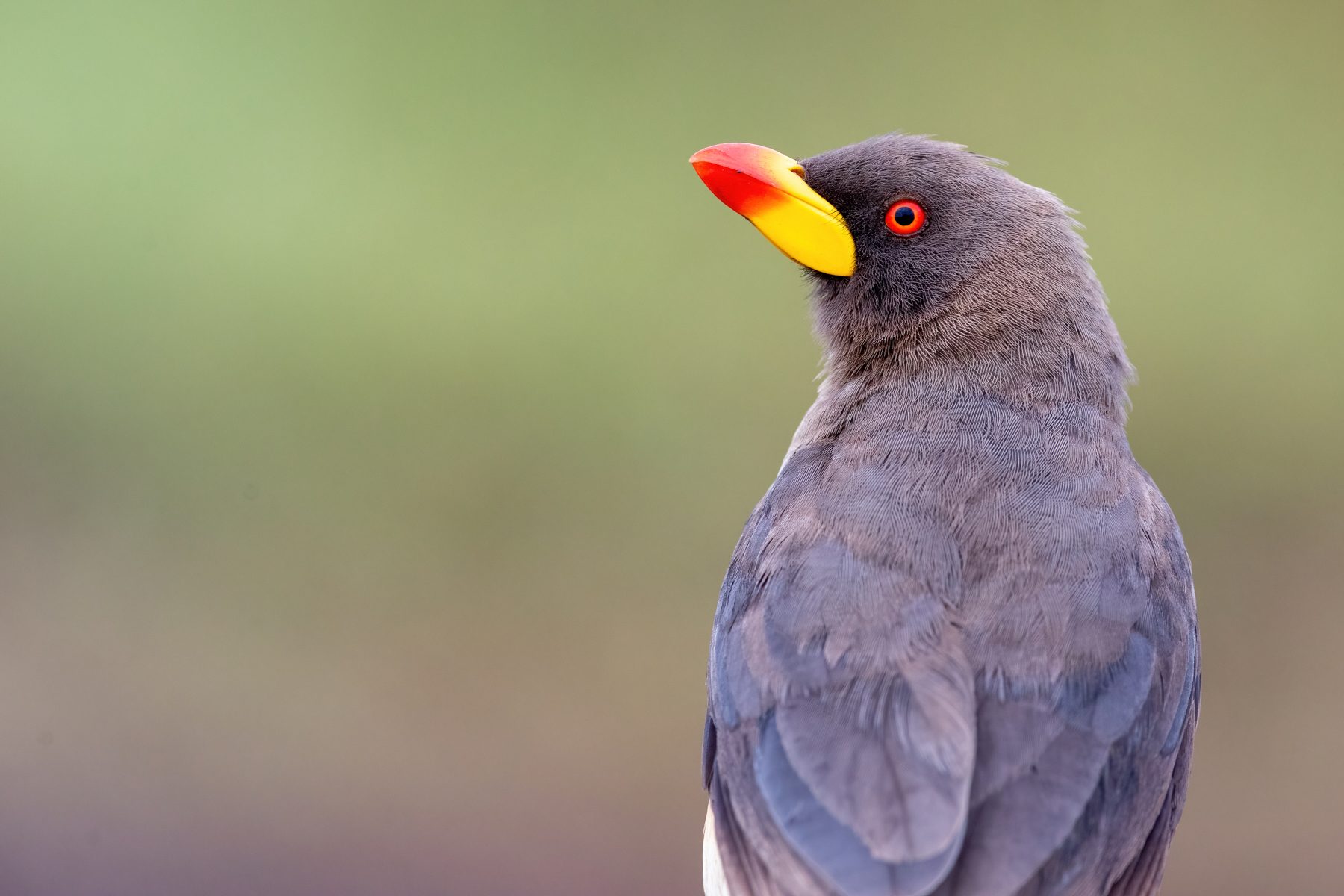
Portrait of a Yellow-billed Oxpecker in Ngorongoro (image by Inger Vandyke)

Yellow-billed Oxpeckers search the neck of an elderly giraffe for food (image by Inger Vandyke)
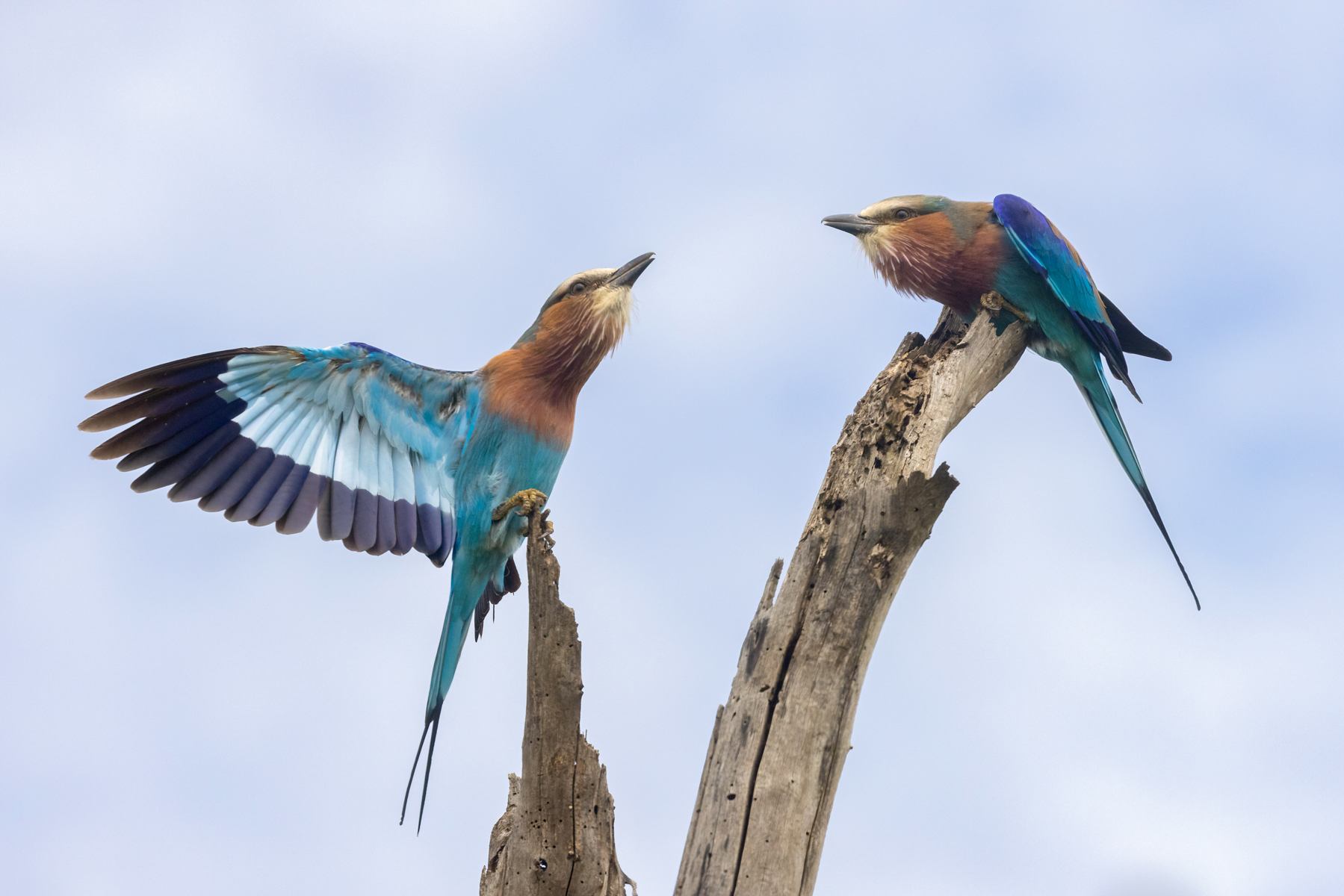
An incredible encounter with displaying Lilac-breasted Rollers in the Serengeti (image by Inger Vandyke)
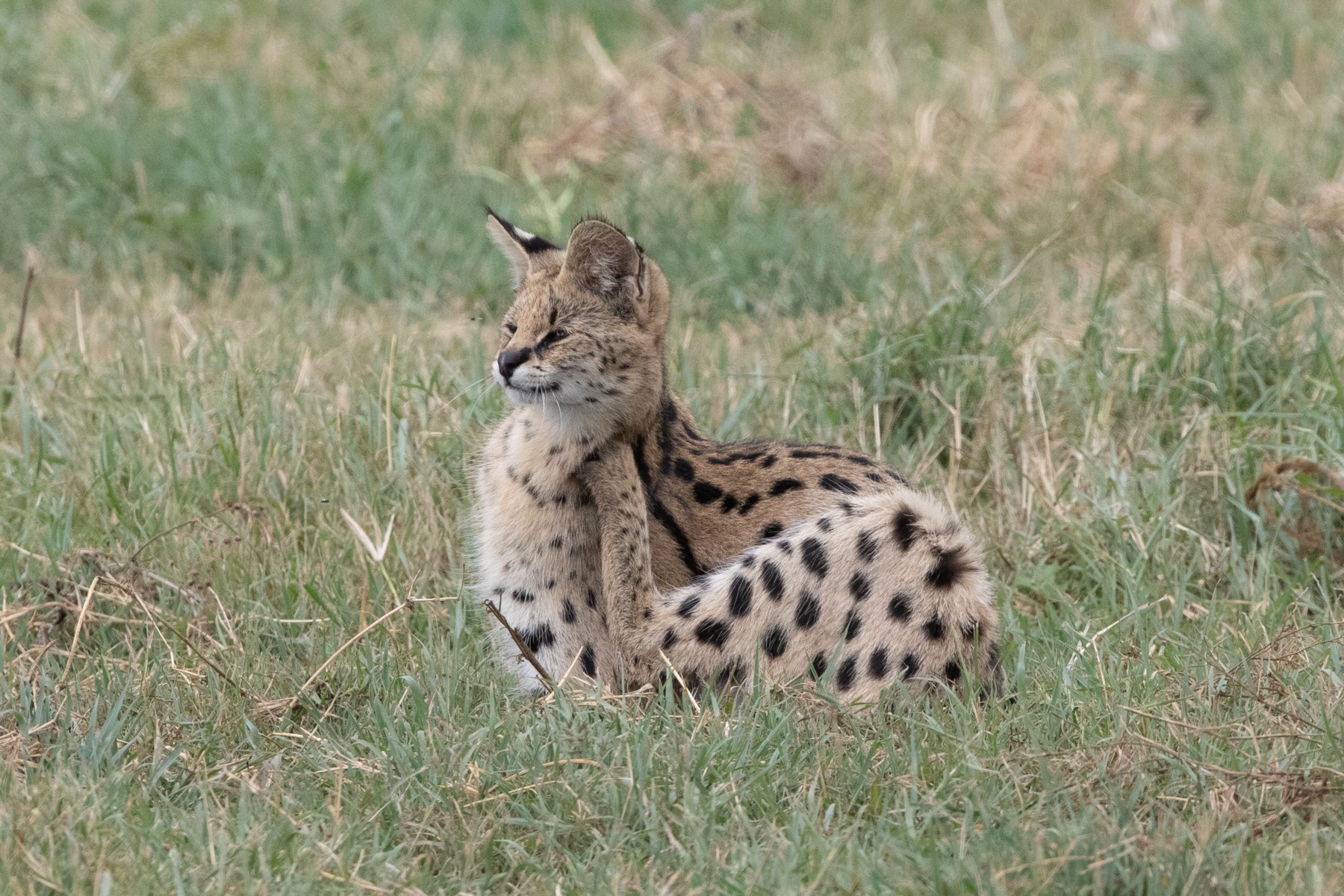
A beautiful Serval scratching an itch (image by Inger Vandyke)
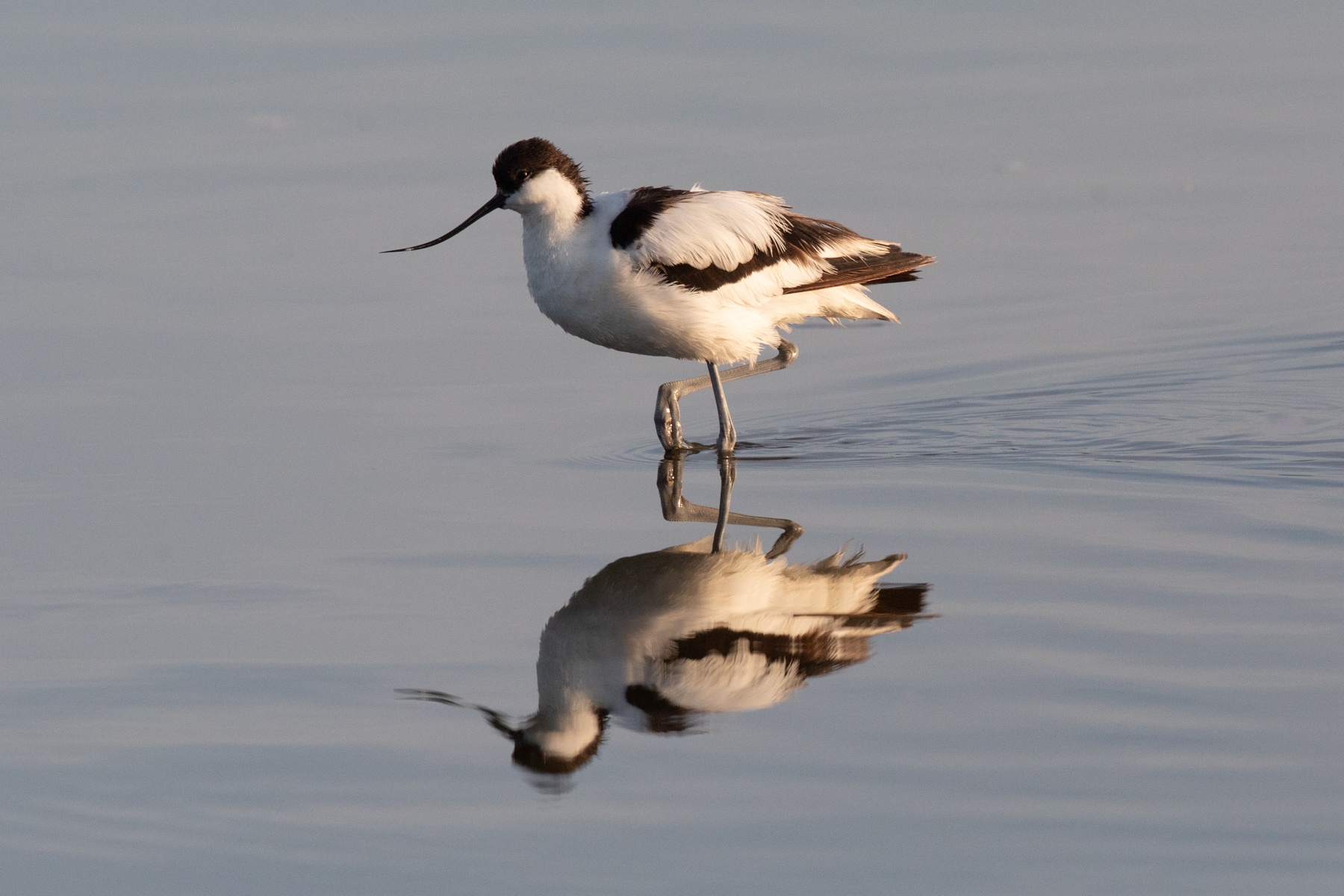
Reflections of an African Pied Avocet in Lake Ndutu (image by Inger Vandyke)
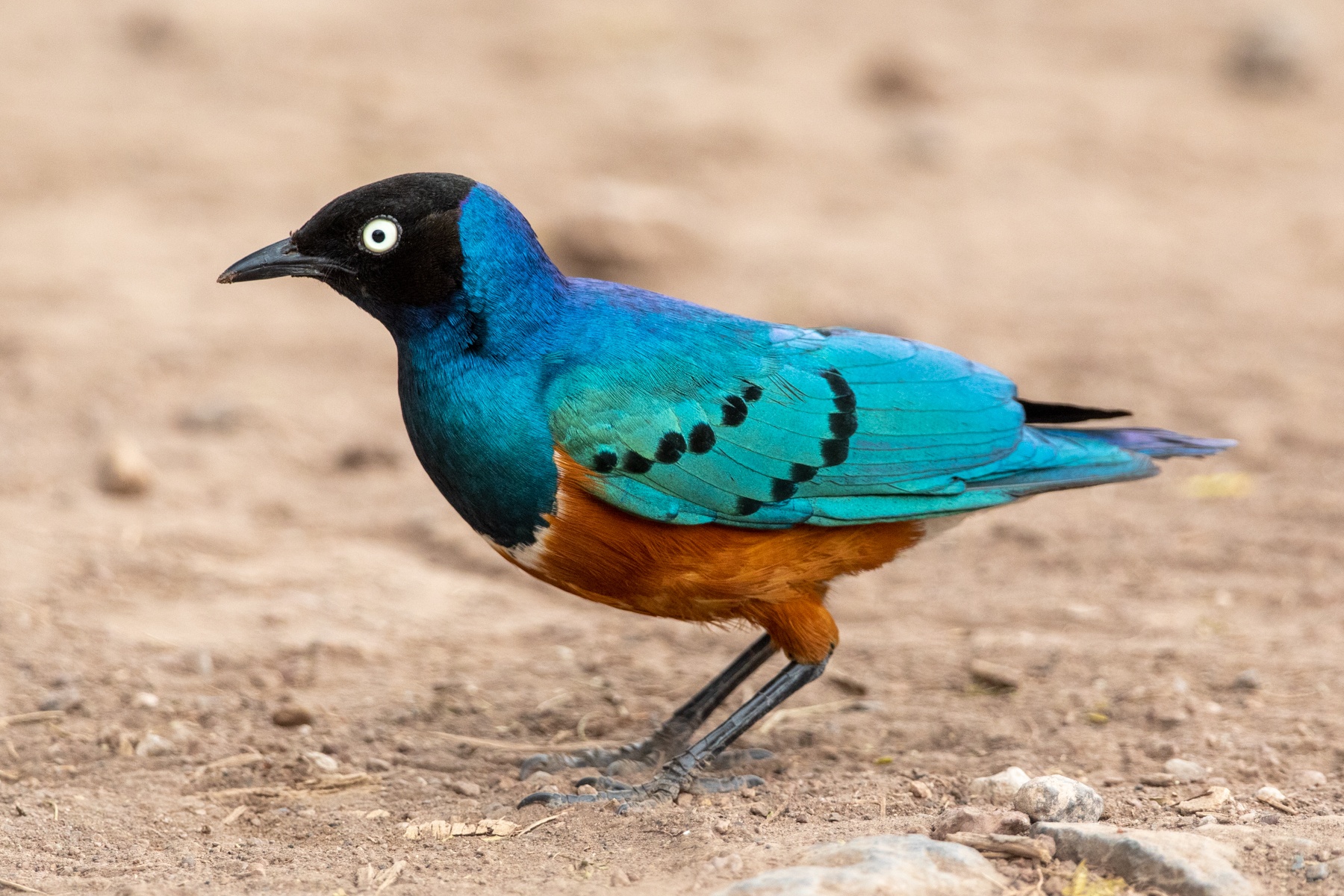
Beautiful Superb Starlings are very common to see on Tanzania safaris but can you ever see too many of them? (image by Inger Vandyke)
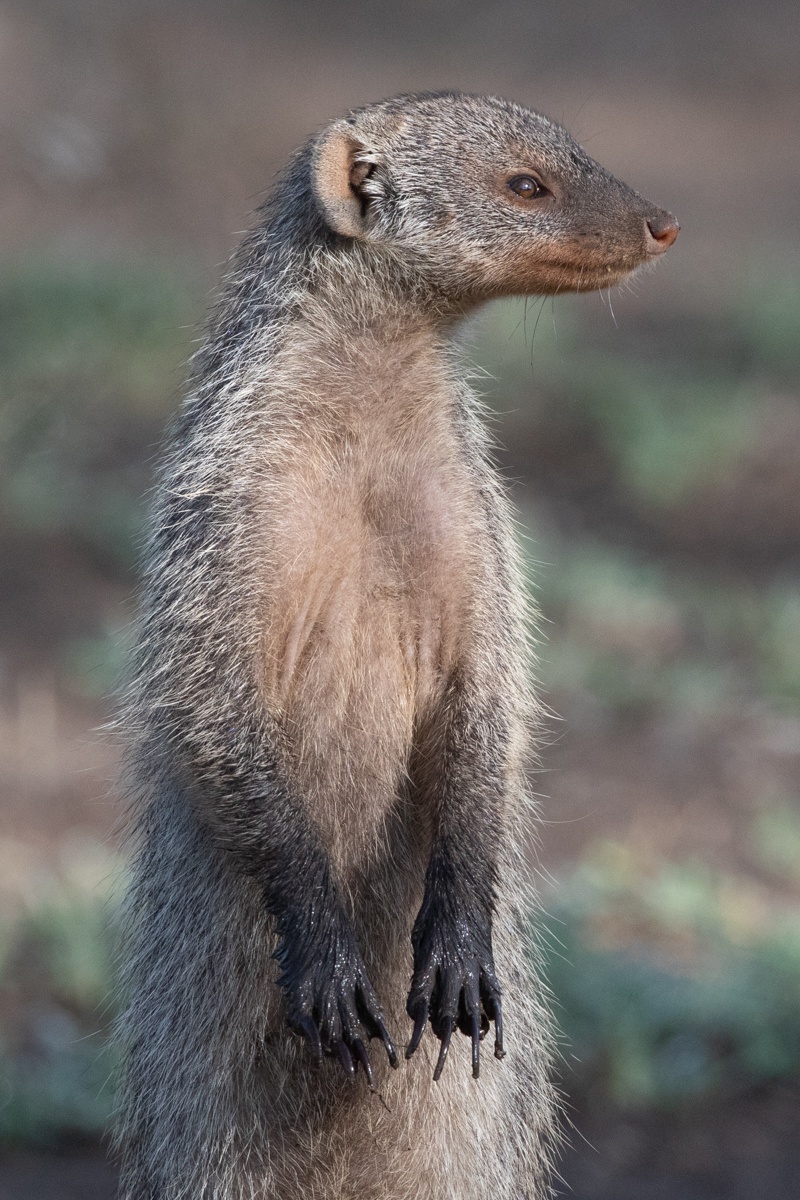
Portrait of a Banded Mongoose (image by Inger Vandyke)

A pair of Black-backed Jackals showing affection in Ngorongoro (image by Inger Vandyke)
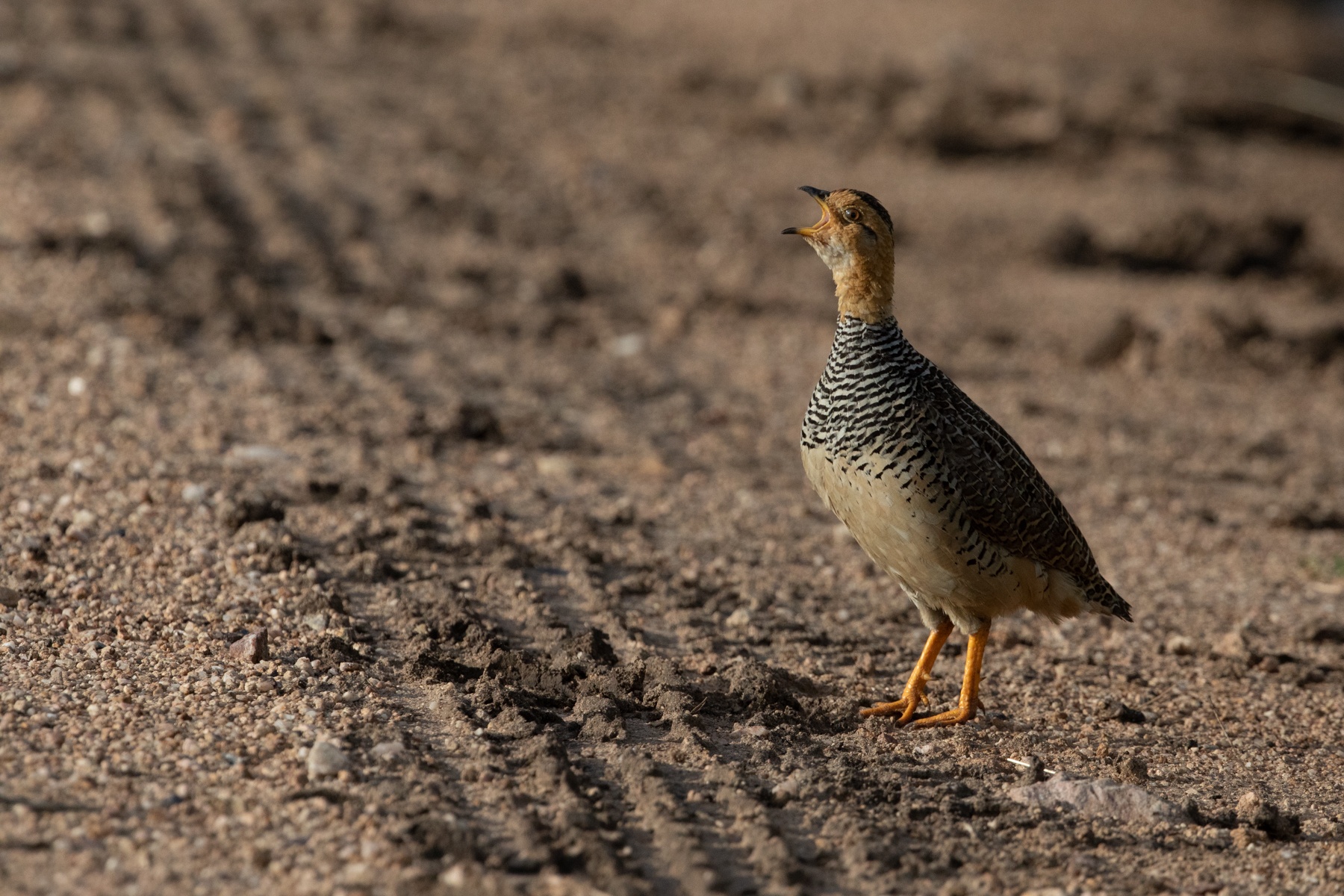
A Coqui Francolin calling on the side of the road near remote Moro Kopjes in the Serengeti (image by Inger Vandyke)
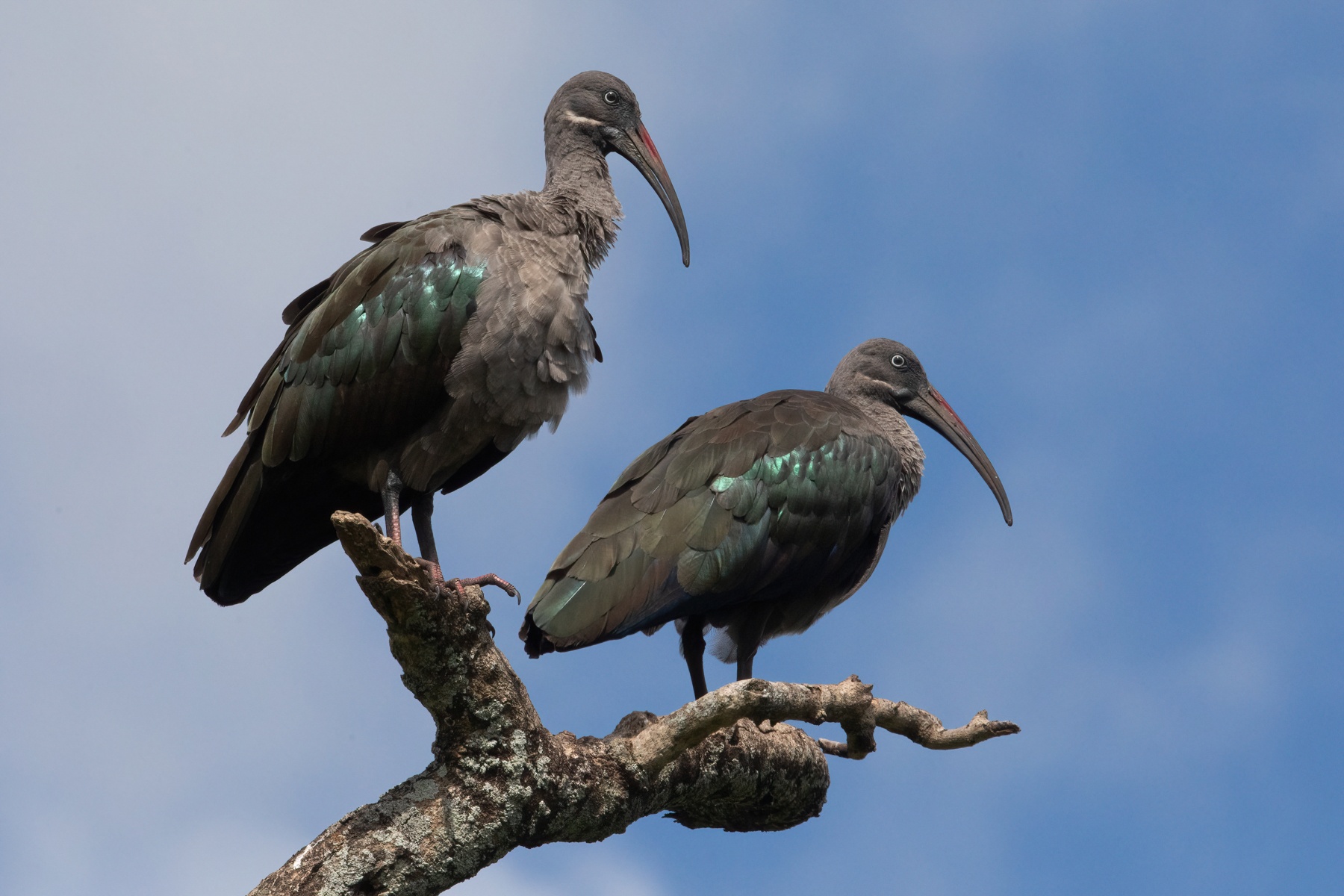
A roosting pair of Hadada Ibis. Although they are common and very loud, they are quite beautiful in their own right (image by Inger Vandyke)

A male Kori Bustard ruffling his feathers to shake the rain out of them (image by Inger Vandyke)
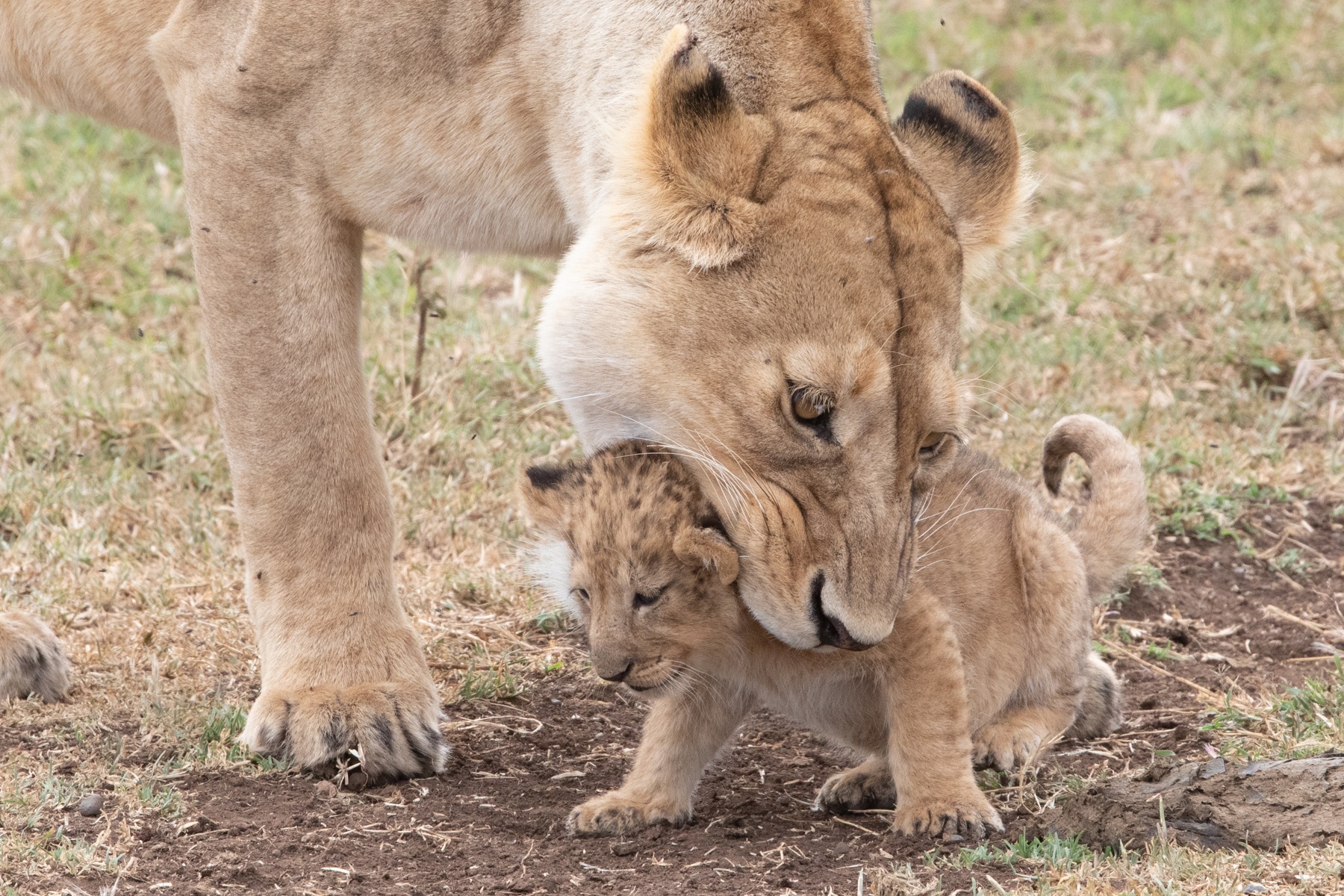
A lioness picks up her tiny cub in her mouth to move it away from some boisterous older cubs (image by Inger Vandyke)
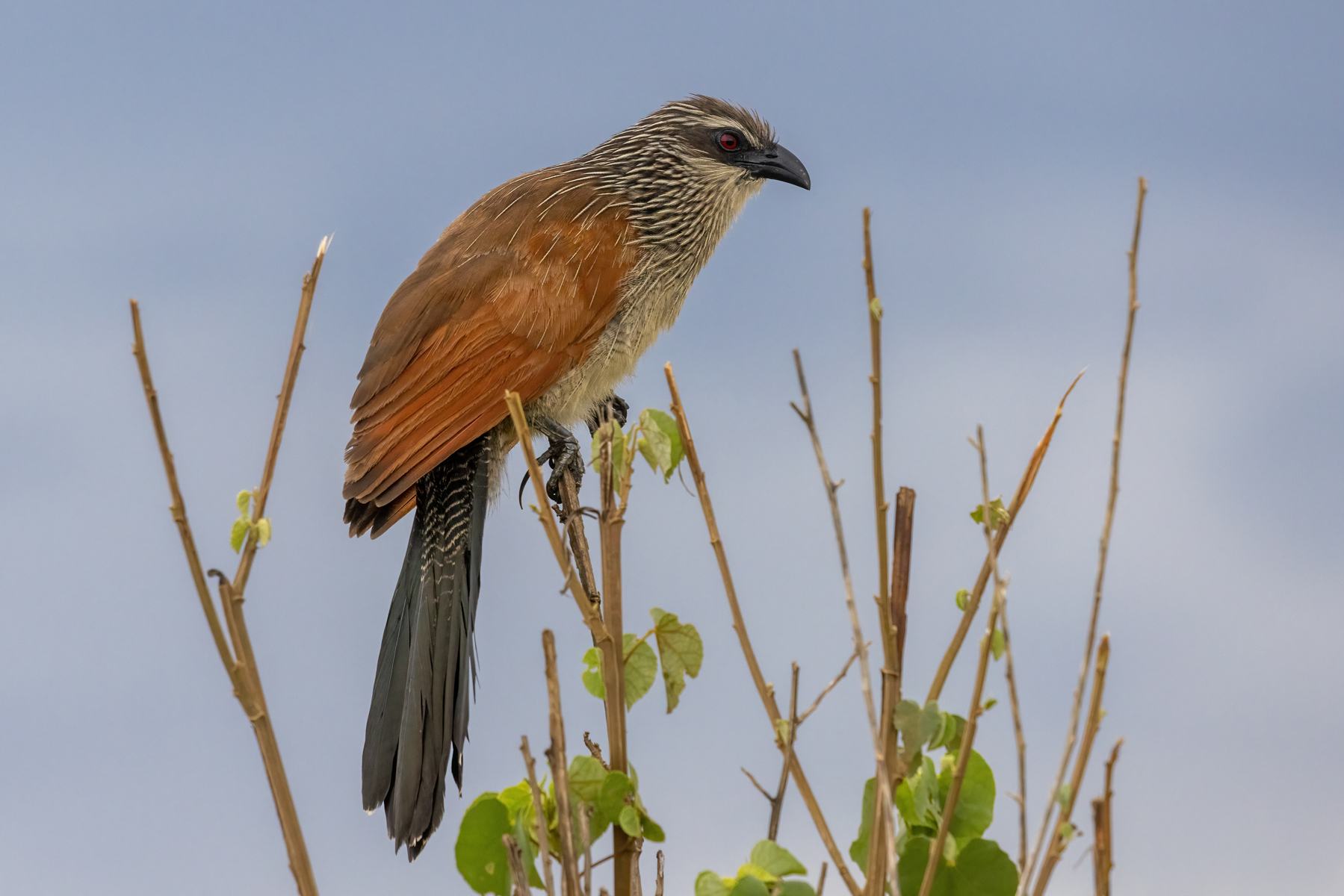
A comical Lesser Coucal we met on the side of the road. We mimicked his call and literally 'talked' to him (image by Inger Vandyke)

Grey-crowned Cranes displaying to each other in Ngorongoro (image by Inger Vandyke)
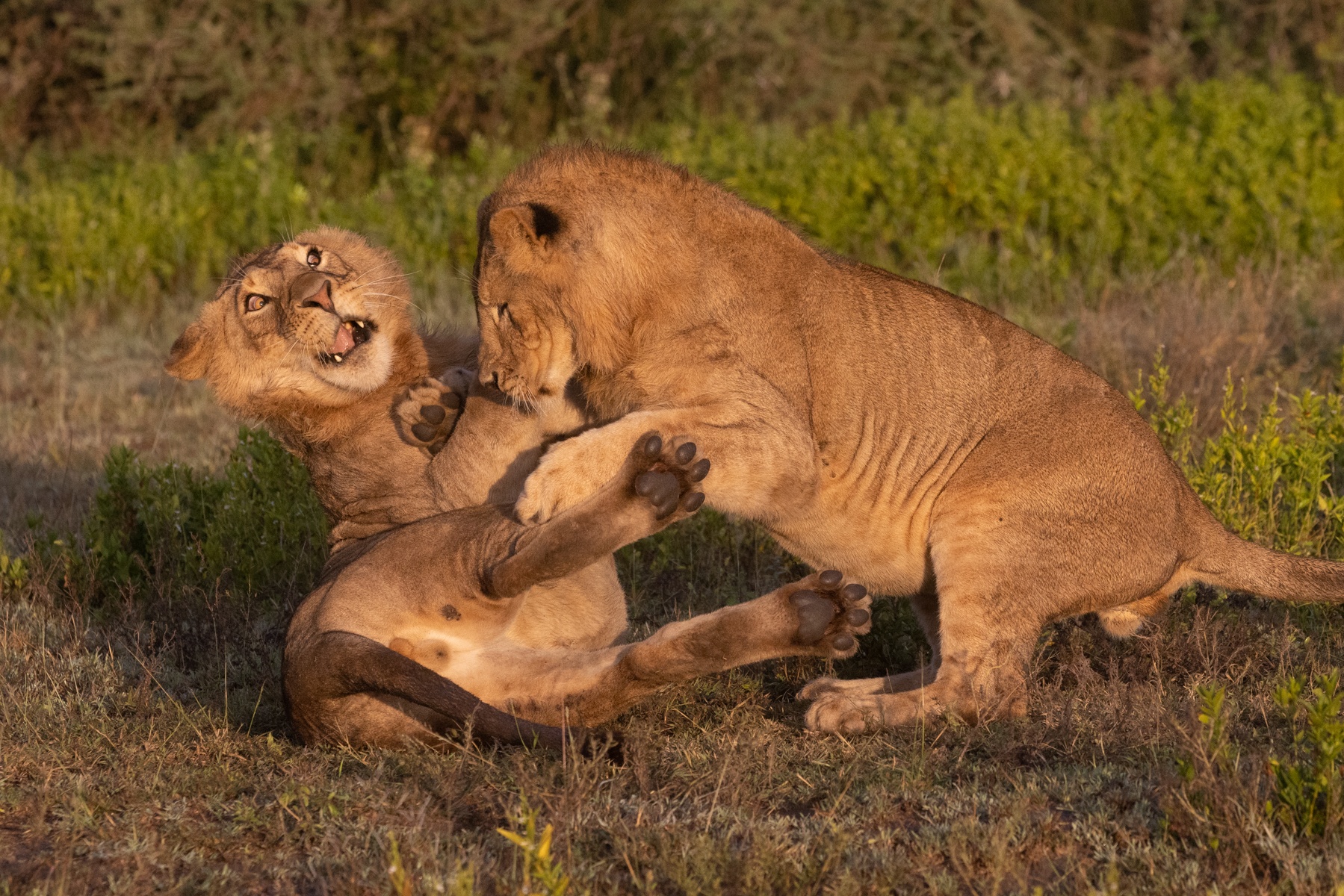
"Gotcha!" a male lion cub knocks its rival to the ground during a play fight on one of our early safaris at Ndutu (image by Inger Vandyke)
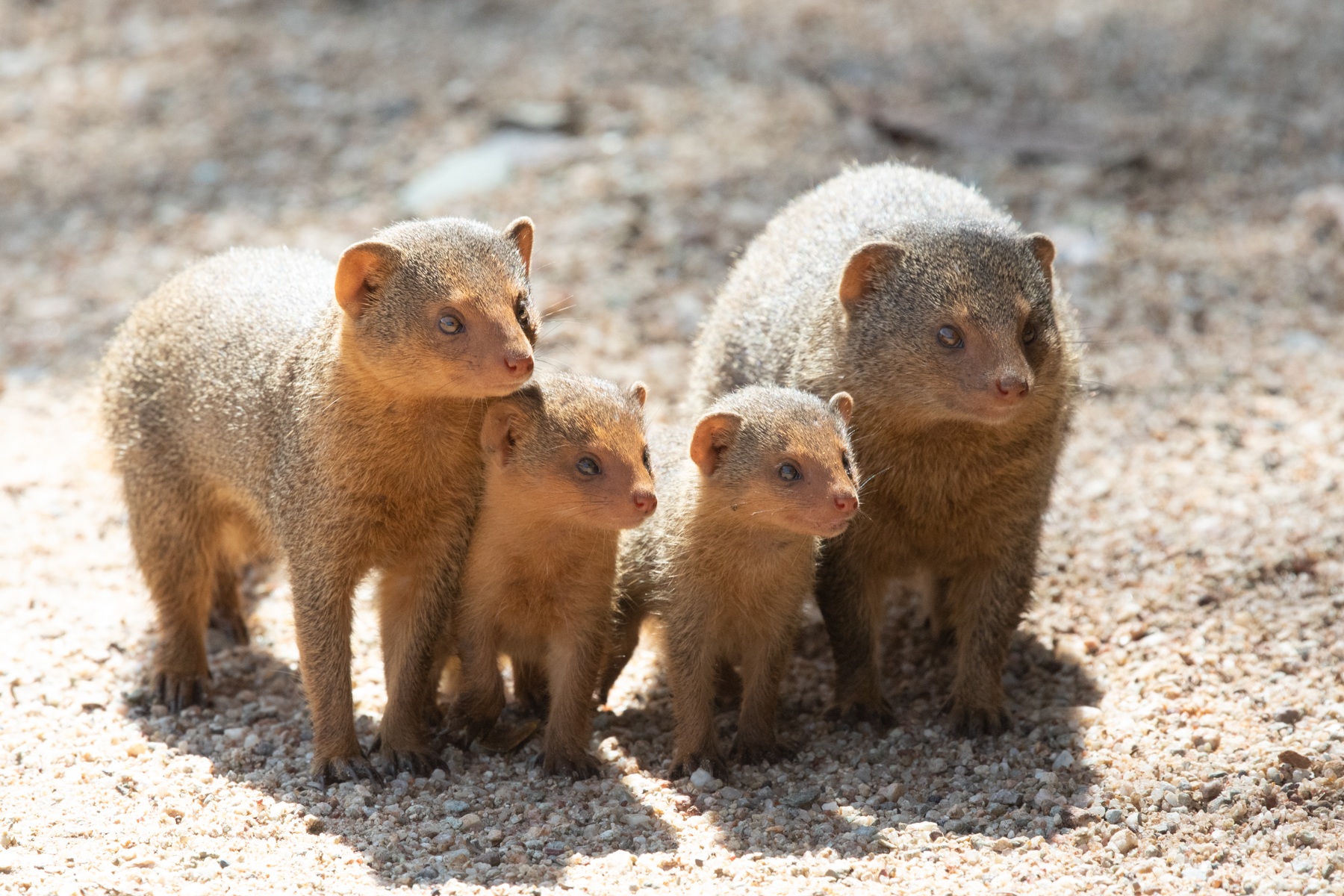
A family of Dwarf Mongoose in the Serengeti (image by Inger Vandyke)

Beautiful displaying Lilac-breasted Rollers (image by Inger Vandyke)

The huge flamingo flocks in Momella Lakes, Arusha National Park (image by Inger Vandyke)
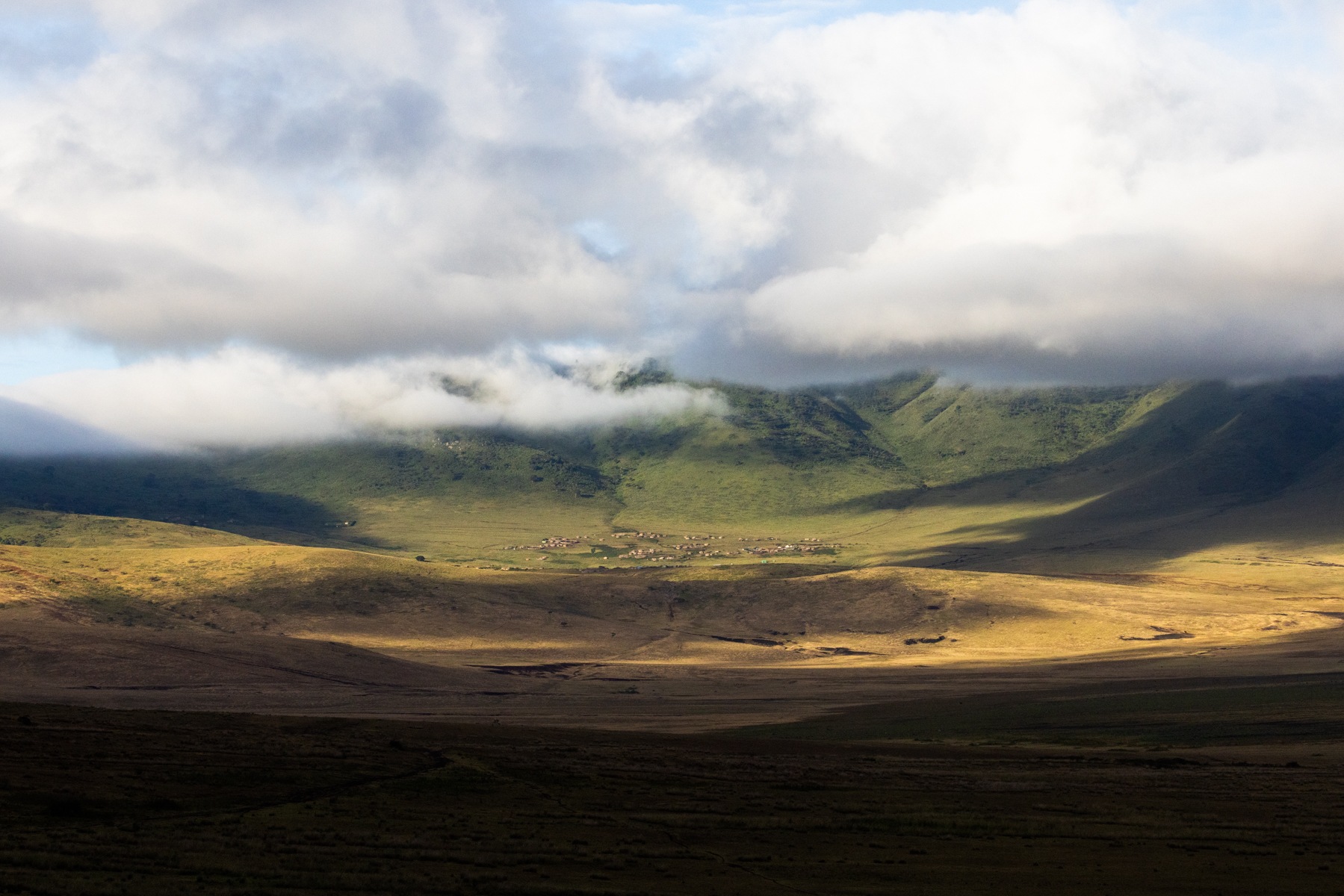
Dappled light shines over a distant Maasai boma near Ngorongoro Crater (image by Inger Vandyke)
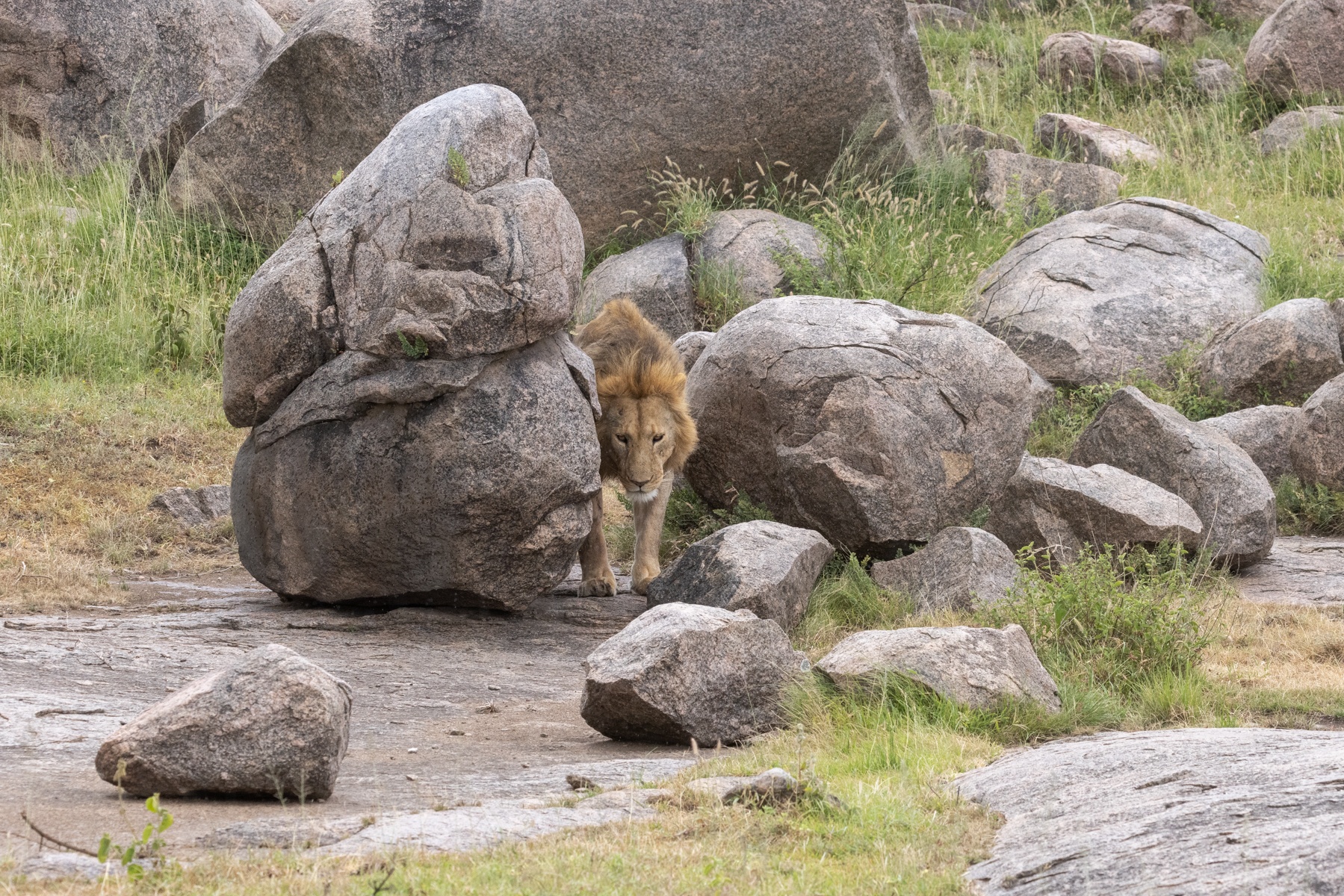
A male lion walks gingerly between the boulders of Gul Kopjes in the Serengeti (image by Inger Vandyke)
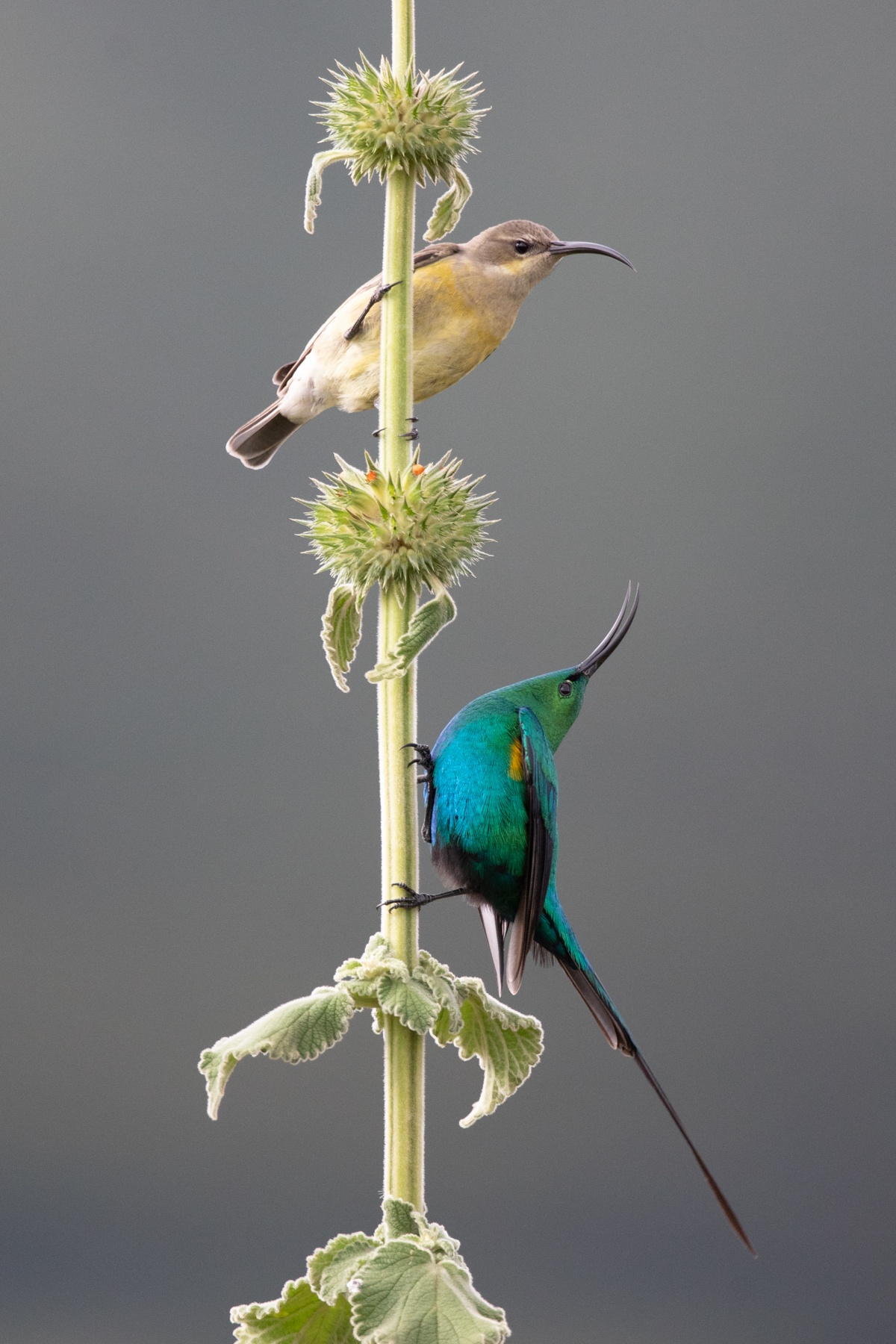
Courtship display of Malachite Sunbirds near the crater rim of Ngorongoro (image by Inger Vandyke)
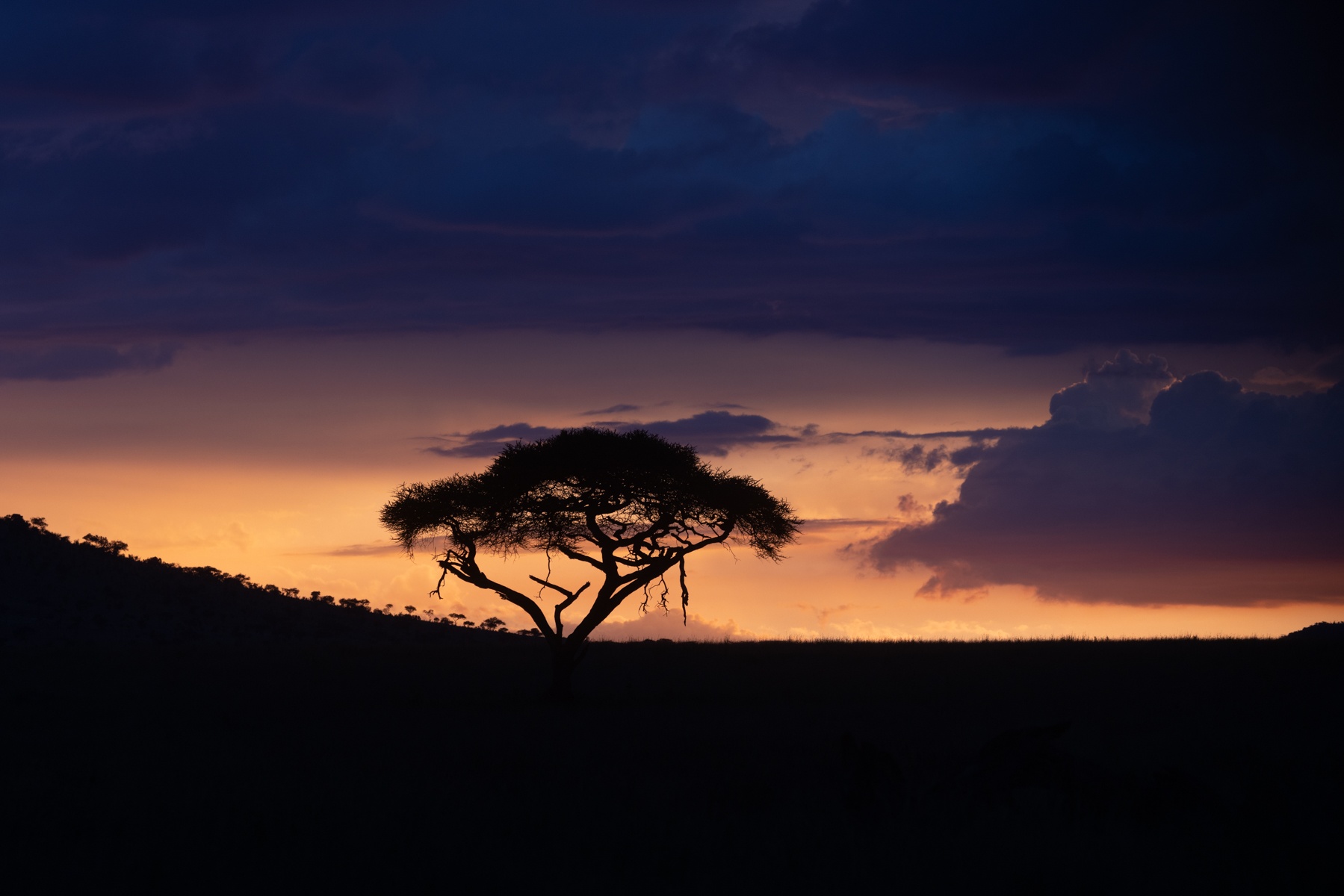
The wondrous beauty of the skies over the Serengeti at the start of the monsoon (image by Inger Vandyke)

There are few better places in the world to get reflection photos of flamingos than Lake Ndutu (image by Inger Vandyke)
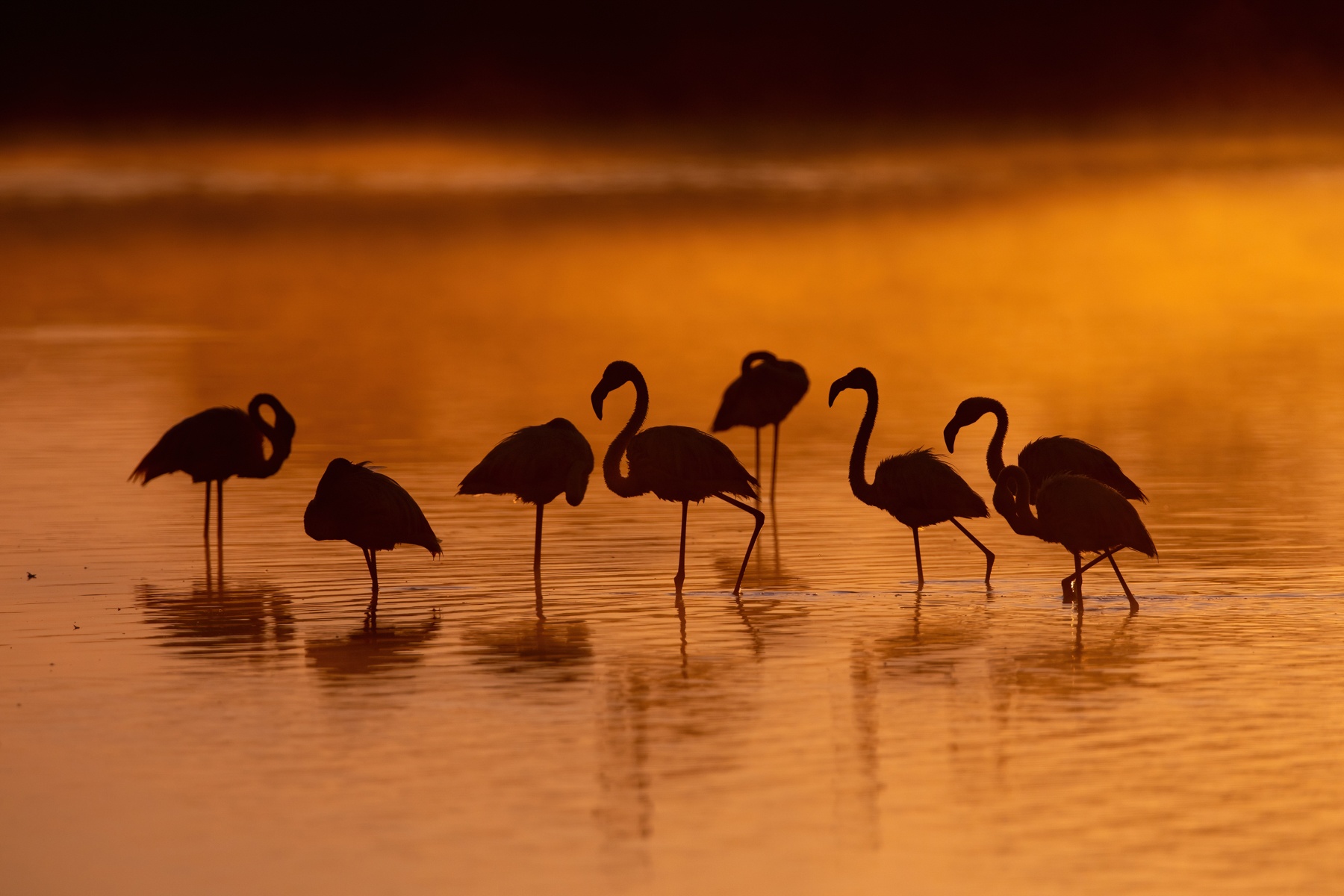
Stunning flamingo silhouettes in the mist of Lake Ndutu (image by Inger Vandyke)
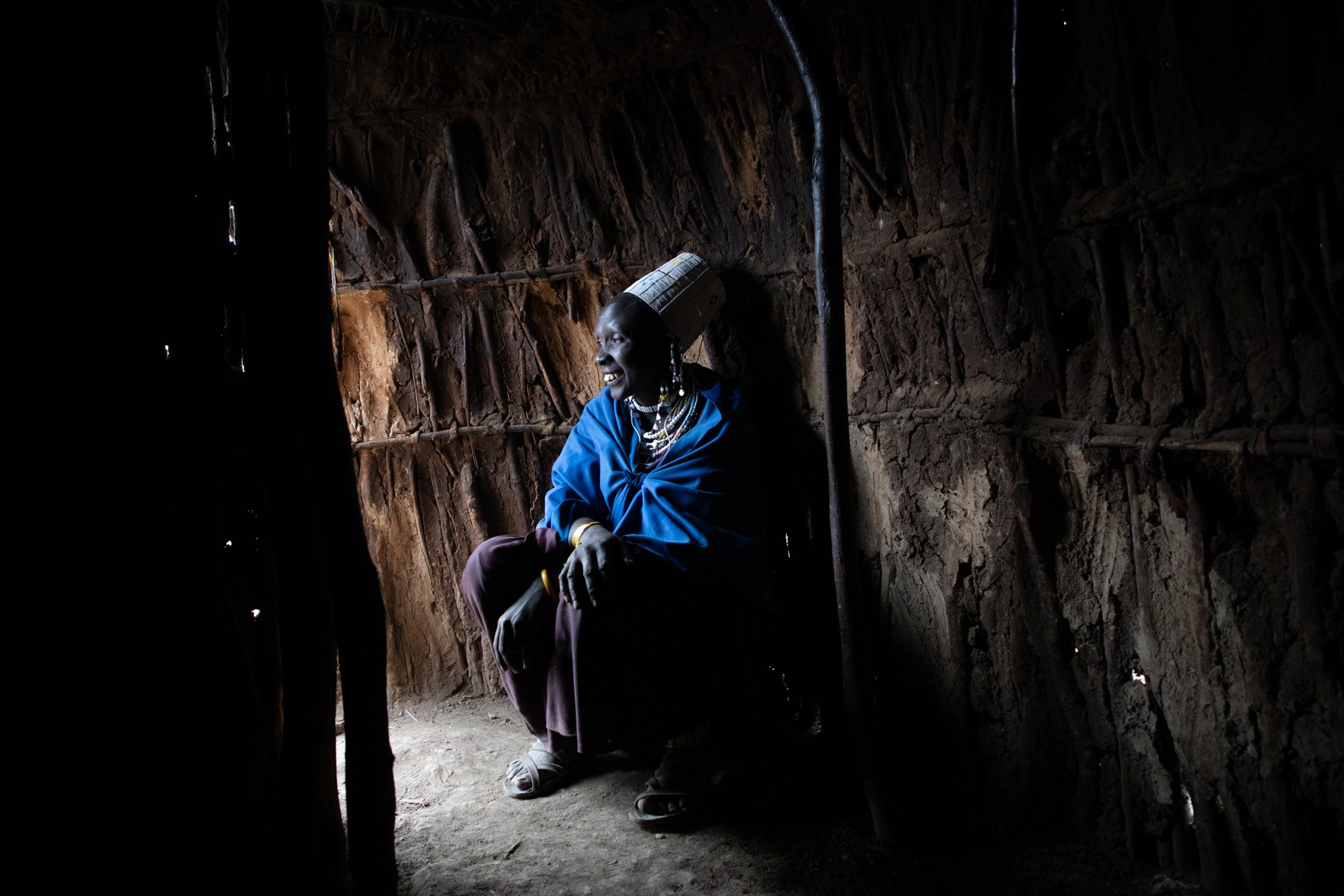
During our visit to a Maasai boma we were kindly invited inside Maasai homes (image by Inger Vandyke)

Portrait of a female leopard on the move through the Seronera section of the Serengeti (image by Inger Vandyke)
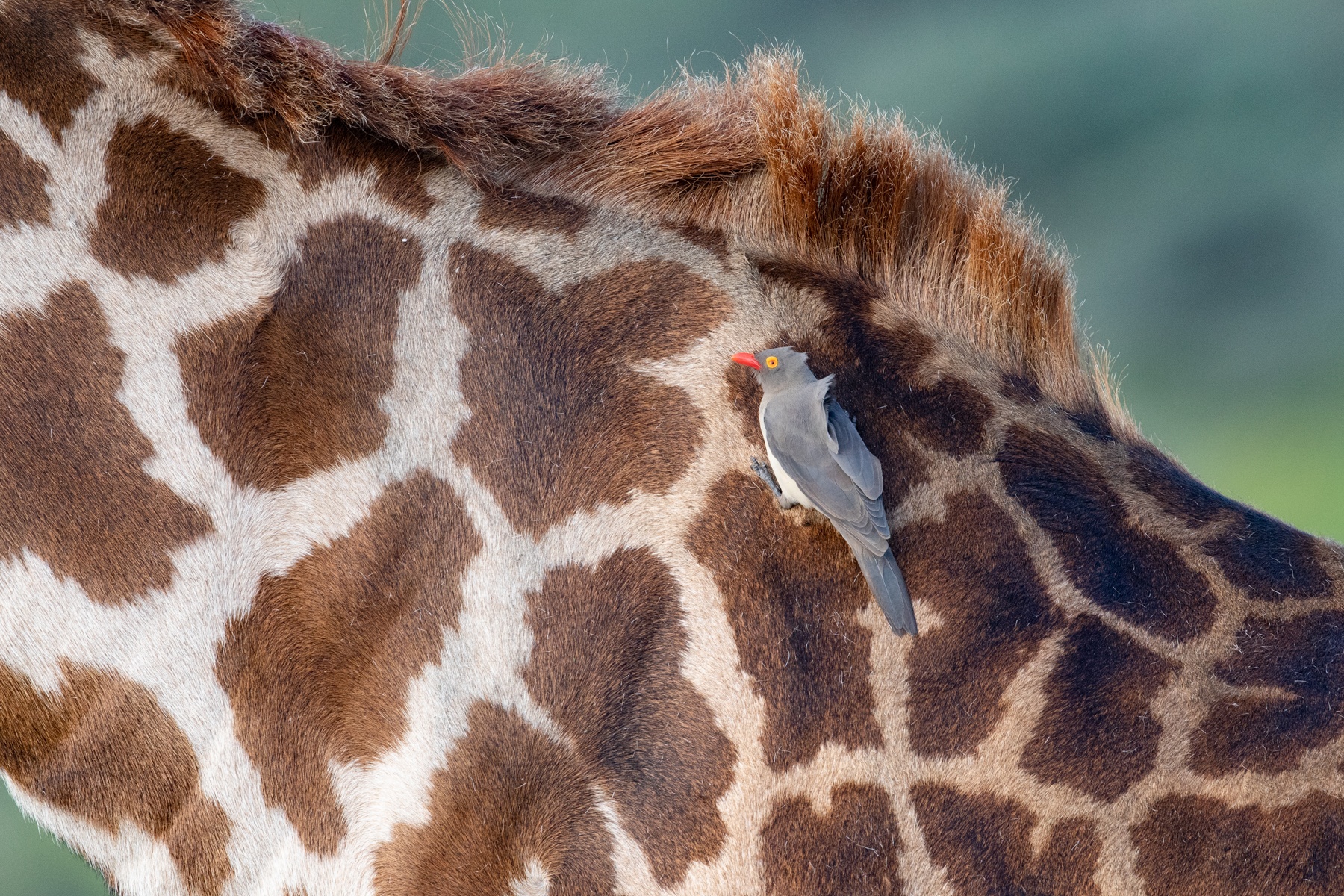
Yellow-billed Oxpecker searching the fur on a giraffe's neck for food (image by Inger Vandyke)
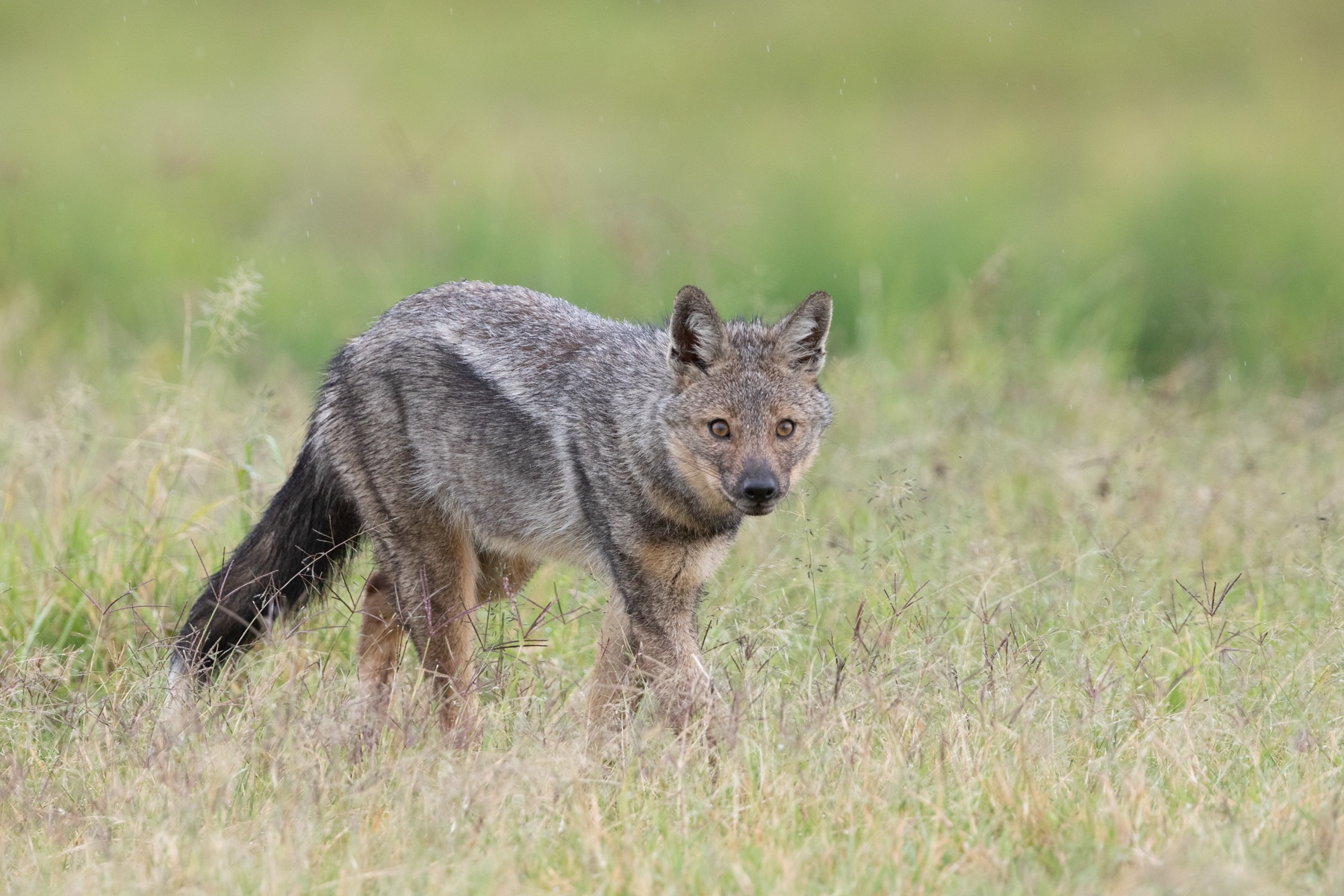
Portrait of a rather tame Side-striped Jackal at Lerai picnic site in Ngorongoro (image by Inger Vandyke)
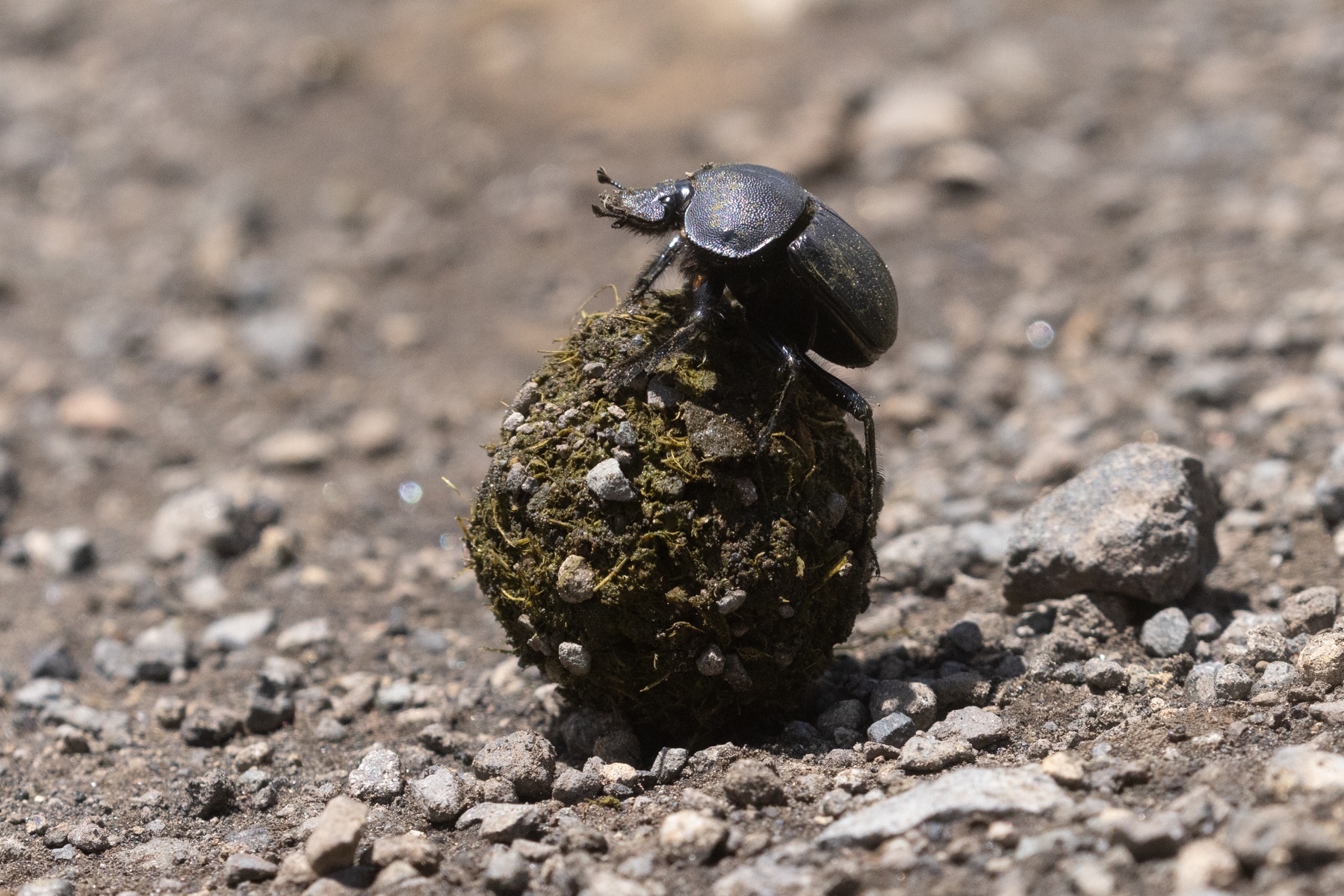
And yes, we even stop to photograph dung beetles rolling dung on our safaris! (image by Inger Vandyke)
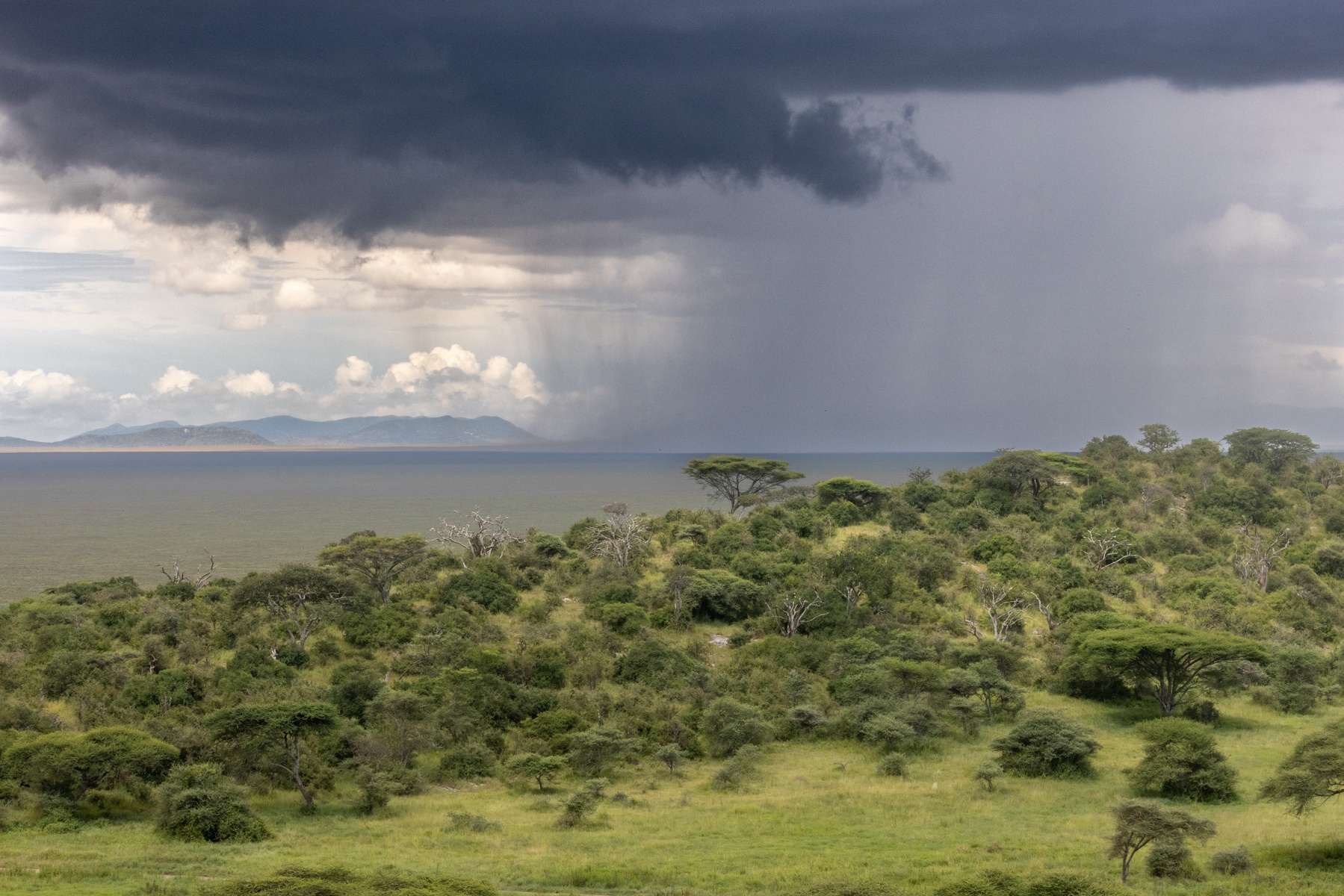
Rain clouds over the grassy plains of the Serengeti (image by Inger Vandyke)
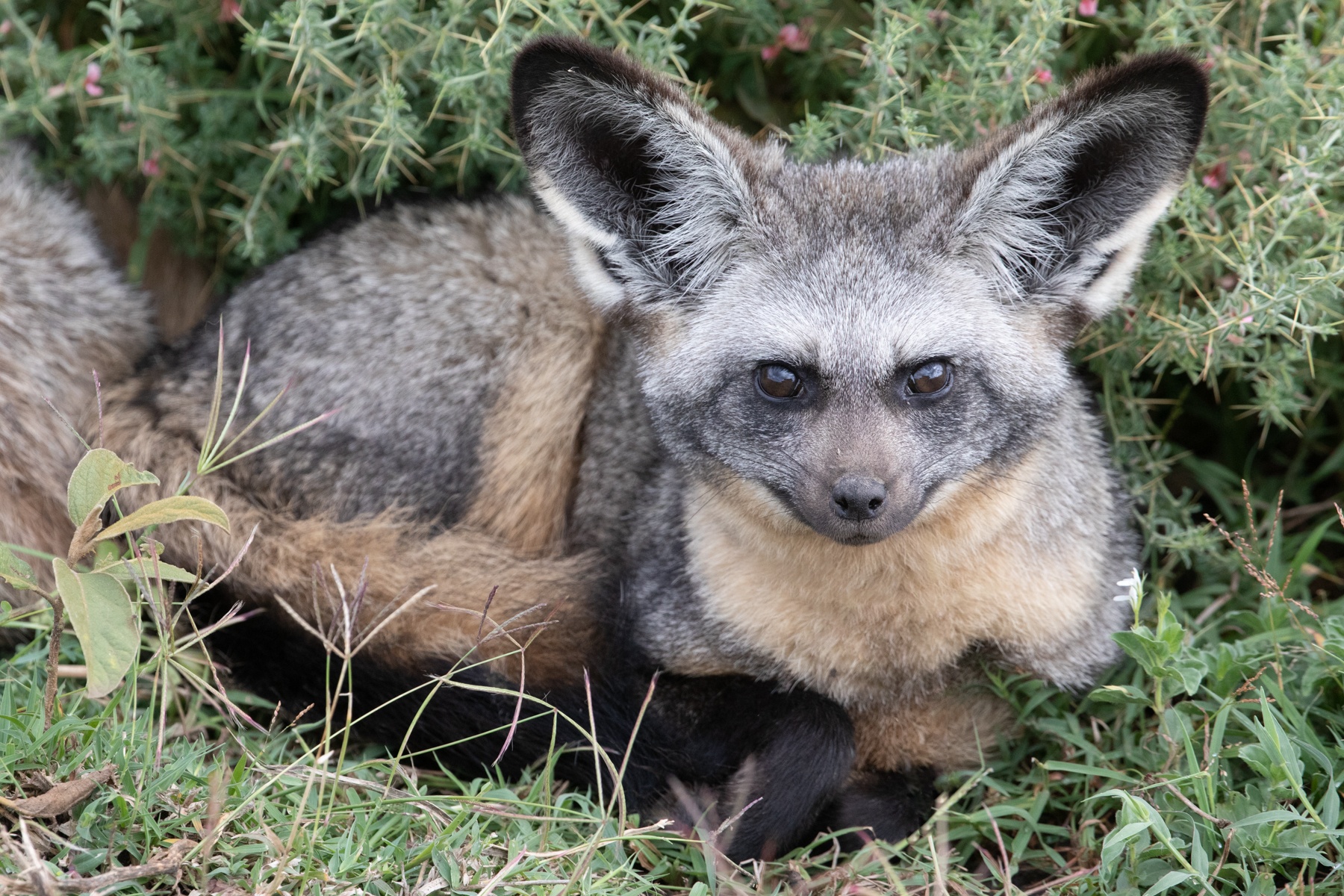
Portrait of a Bat-eared Fox in Ndutu (image by Inger Vandyke)
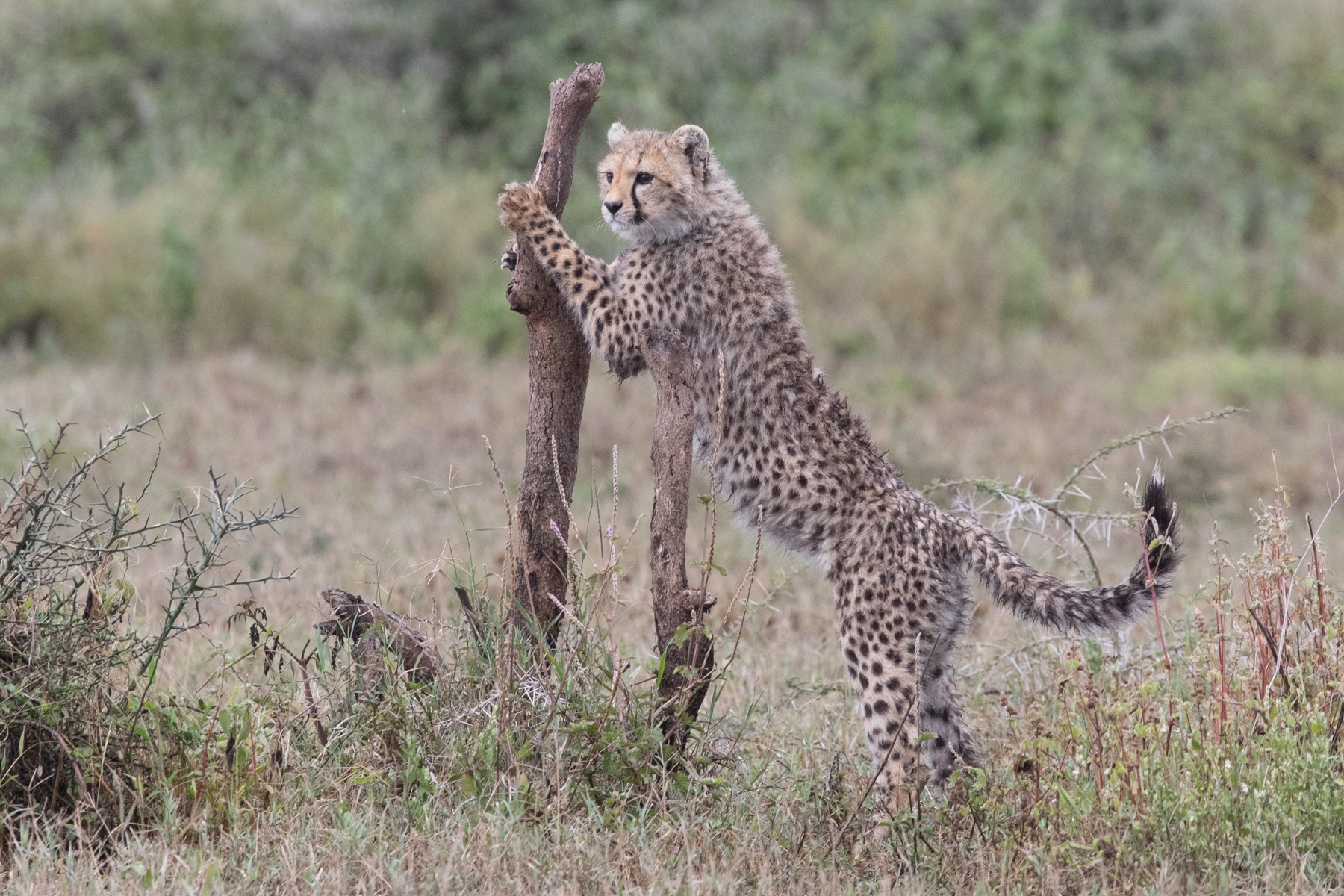
A gorgeous Cheetah cub using a broken tree as its scratching post in Ndutu (image by Inger Vandyke)
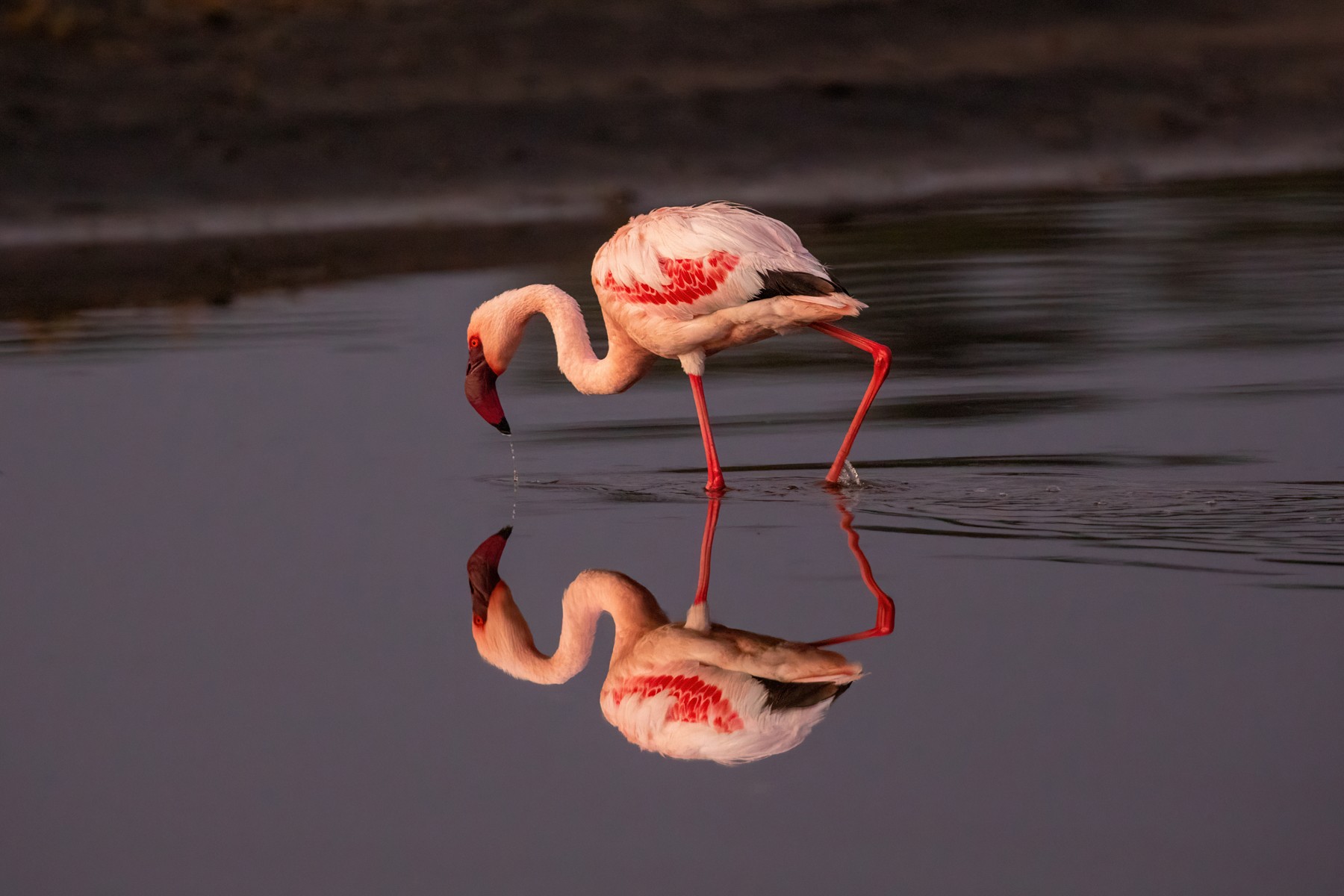
Near perfect reflection of a Lesser Flamingo drinking in Lake Ndutu (image by Inger Vandyke)

A Lilac-breasted Roller perched on a tree in front of one incredible storm front in the Serengeti (image by Inger Vandyke)

The stunning aspect of travelling in Tanzania during the time of year our tour runs is seeing so many birds in breeding plumage including gorgeous Scarlet-chested Sunbirds (image by Inger Vandyke)
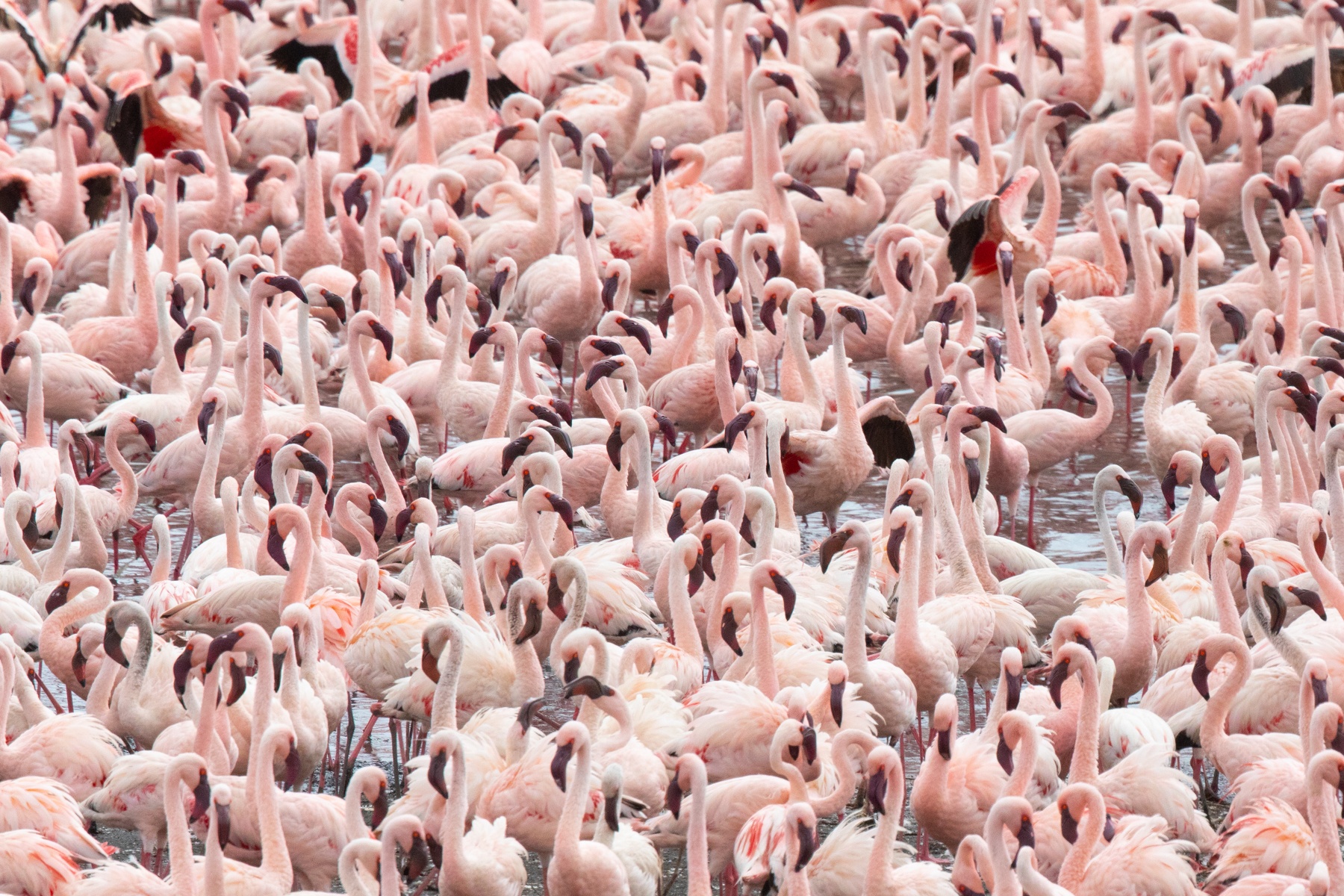
So many flamingos! (image by Inger Vandyke)
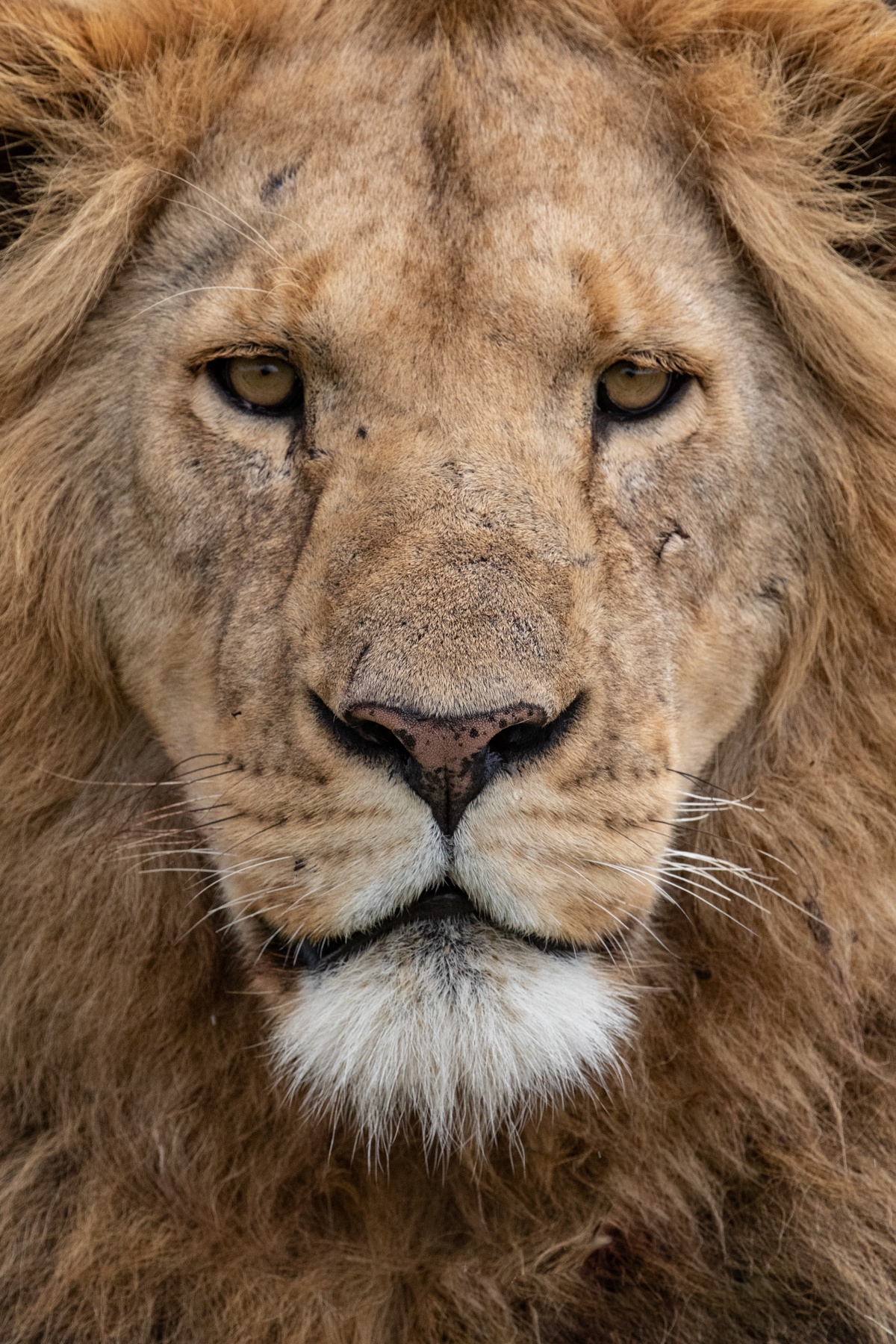
The incredible face of a male lion in Gul Kopjes, Serengeti (image by Inger Vandyke)
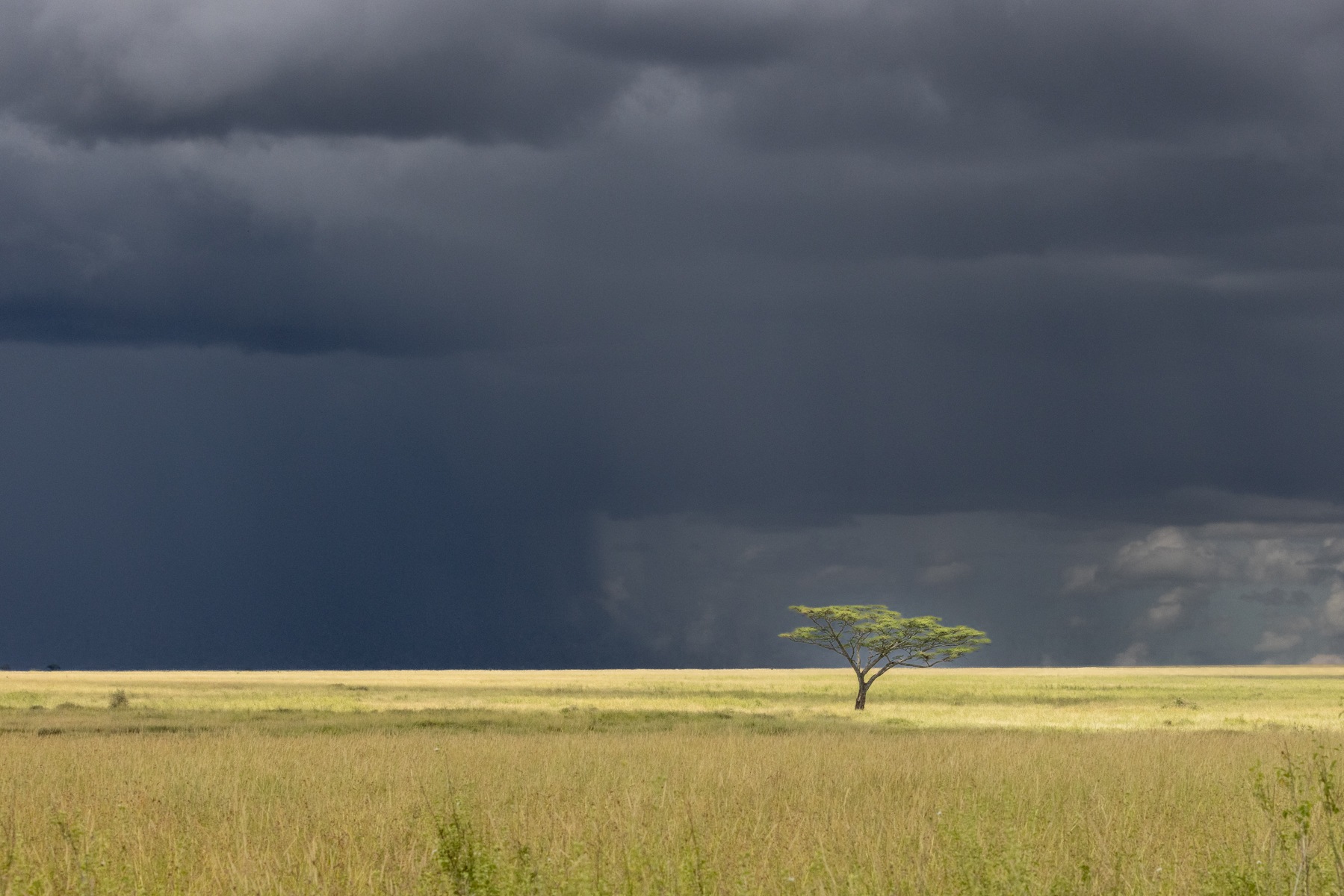
Serengeti storm skies (image by Inger Vandyke)
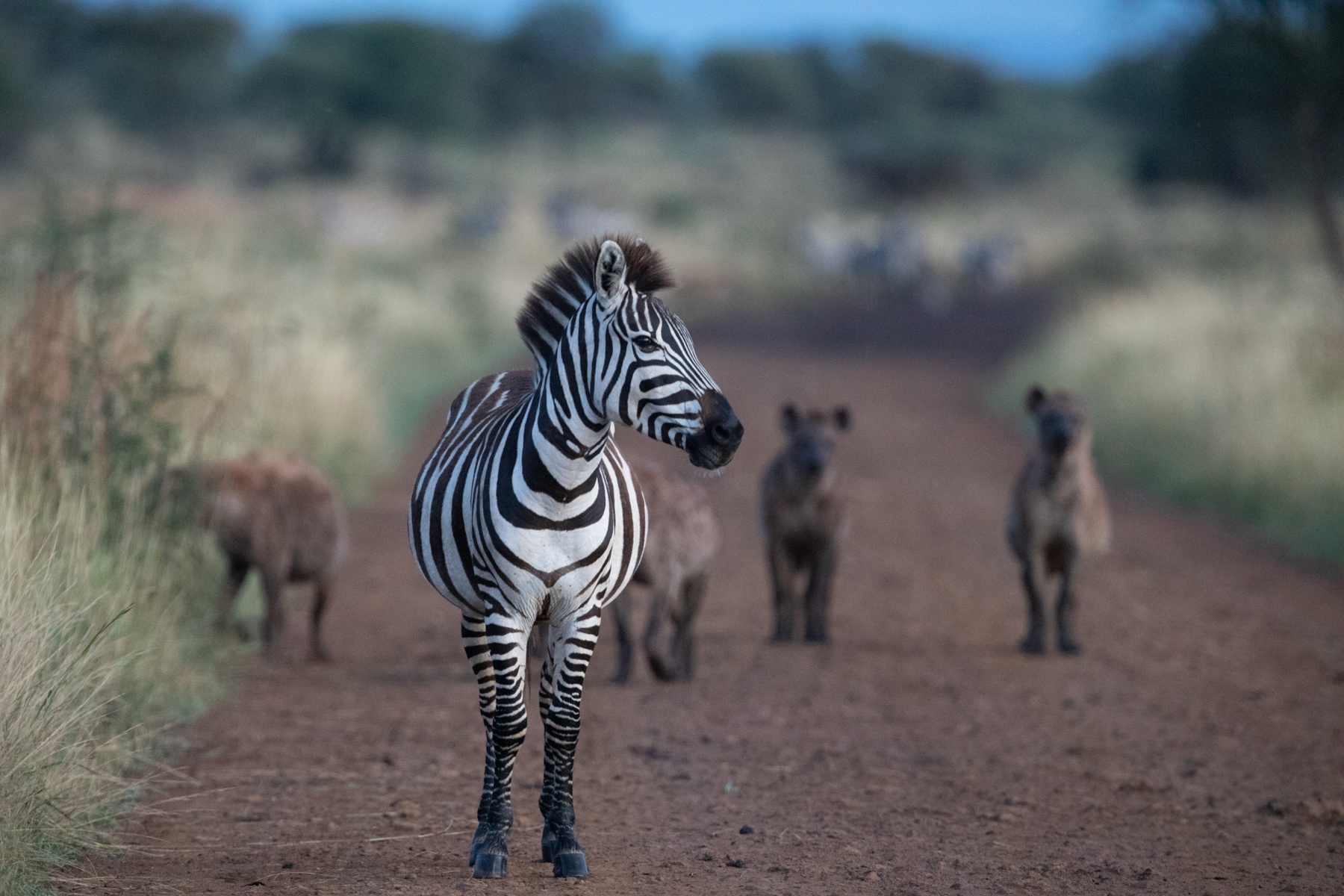
A zebra contemplates a menacing pack of hyenas on one of our early morning safaris in the Serengeti (image by Inger Vandyke)
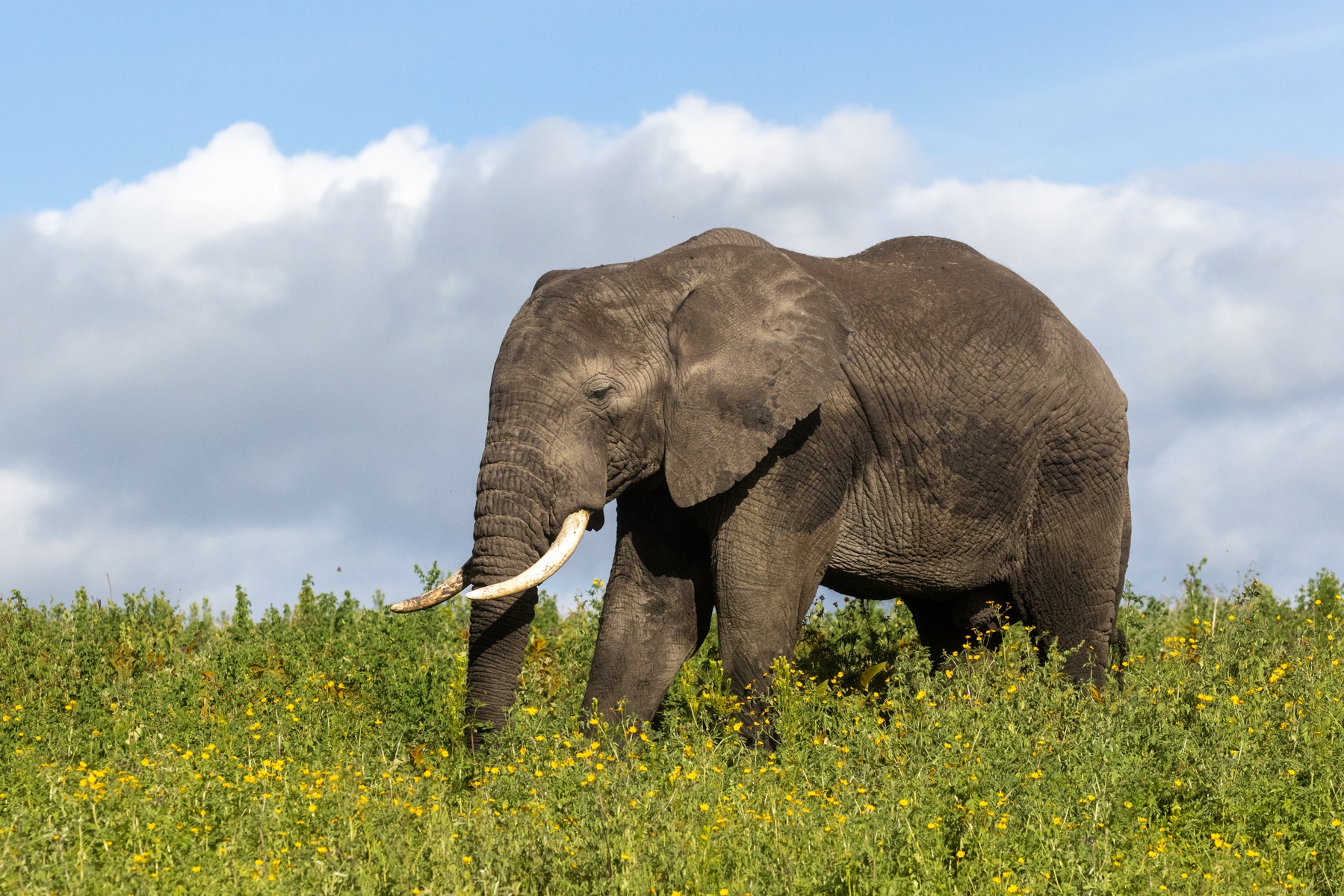
A wandering elephant enjoys the sunshine and grazing in a sea of wildlfowers at Ngorongoro (image by Inger Vandyke)
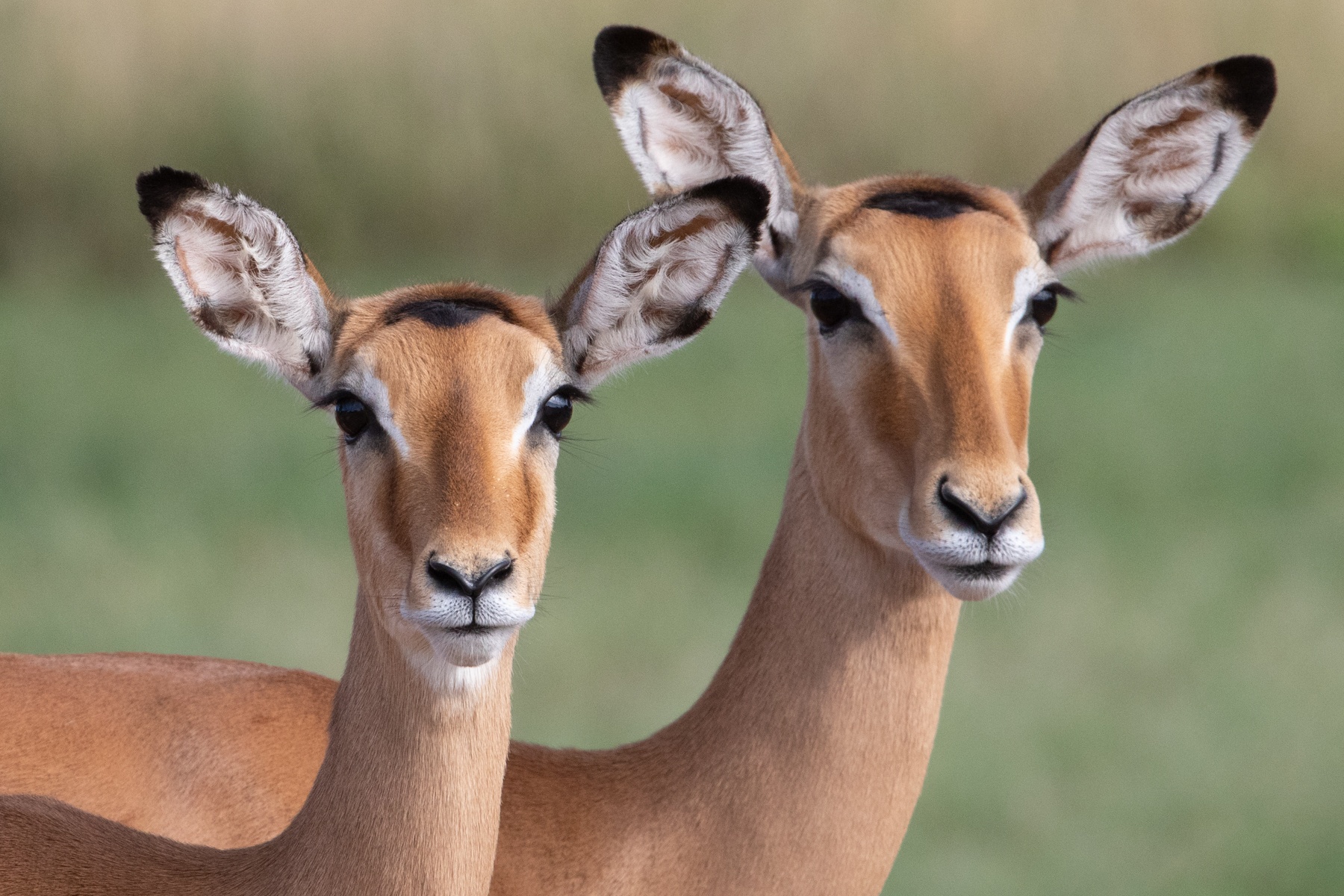
Beautiful Impalas at our breakfast spot one morning on safari in the Serengeti (image by Inger Vandyke)
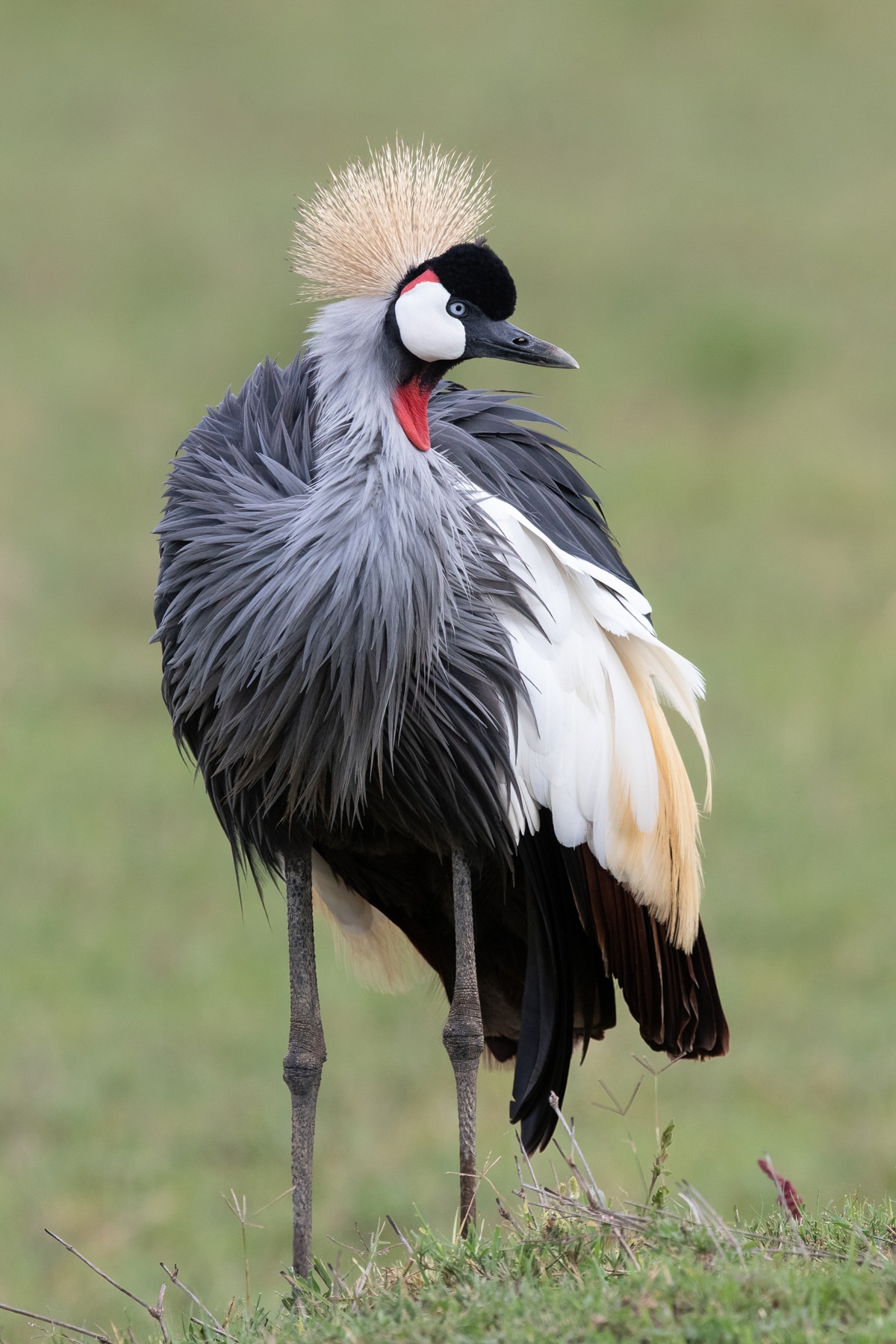
Portrait of a stunning Grey-Crowned Crane. Ngorongoro would have to be the best place in the world to see these magnificent birds (image by Inger Vandyke)
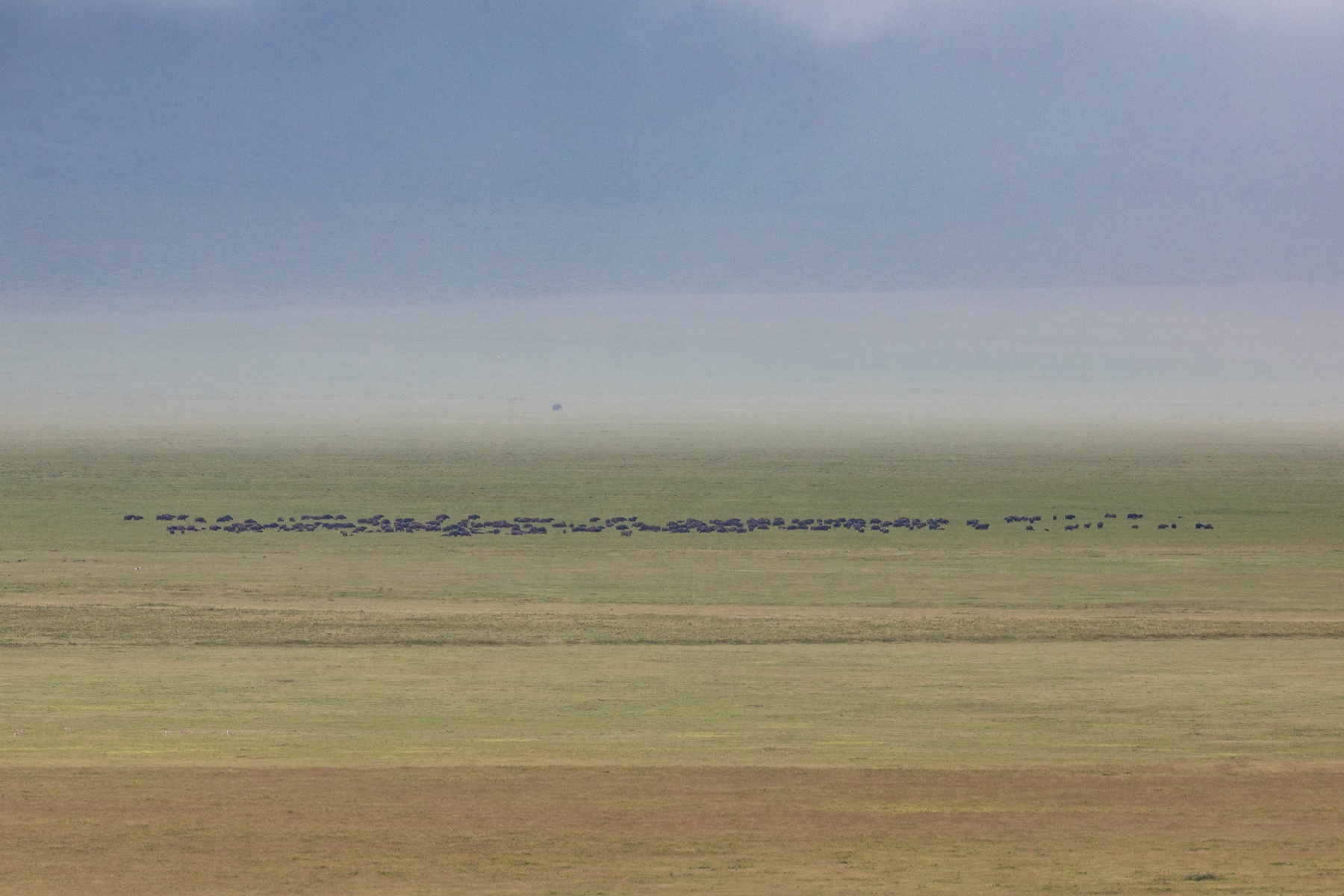
The vast plains of Ngorongoro Crater are home to so much wildlife. Here a grazing herd of African Buffalo form a line in front of a distant elephant (image by Inger Vandyke)
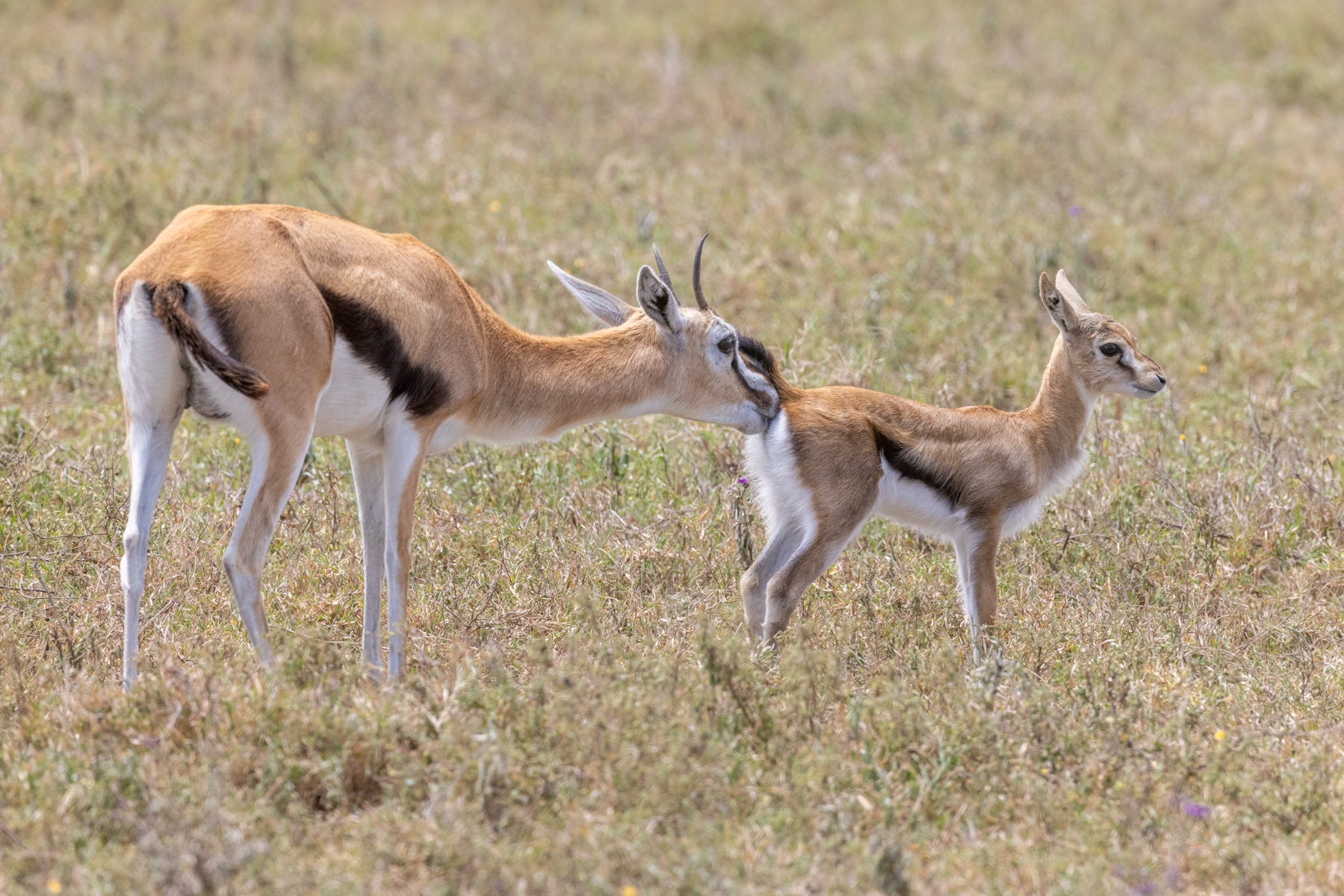
A mother Thompsons Gazelle cleans the bottom of her baby (image by Inger Vandyke)
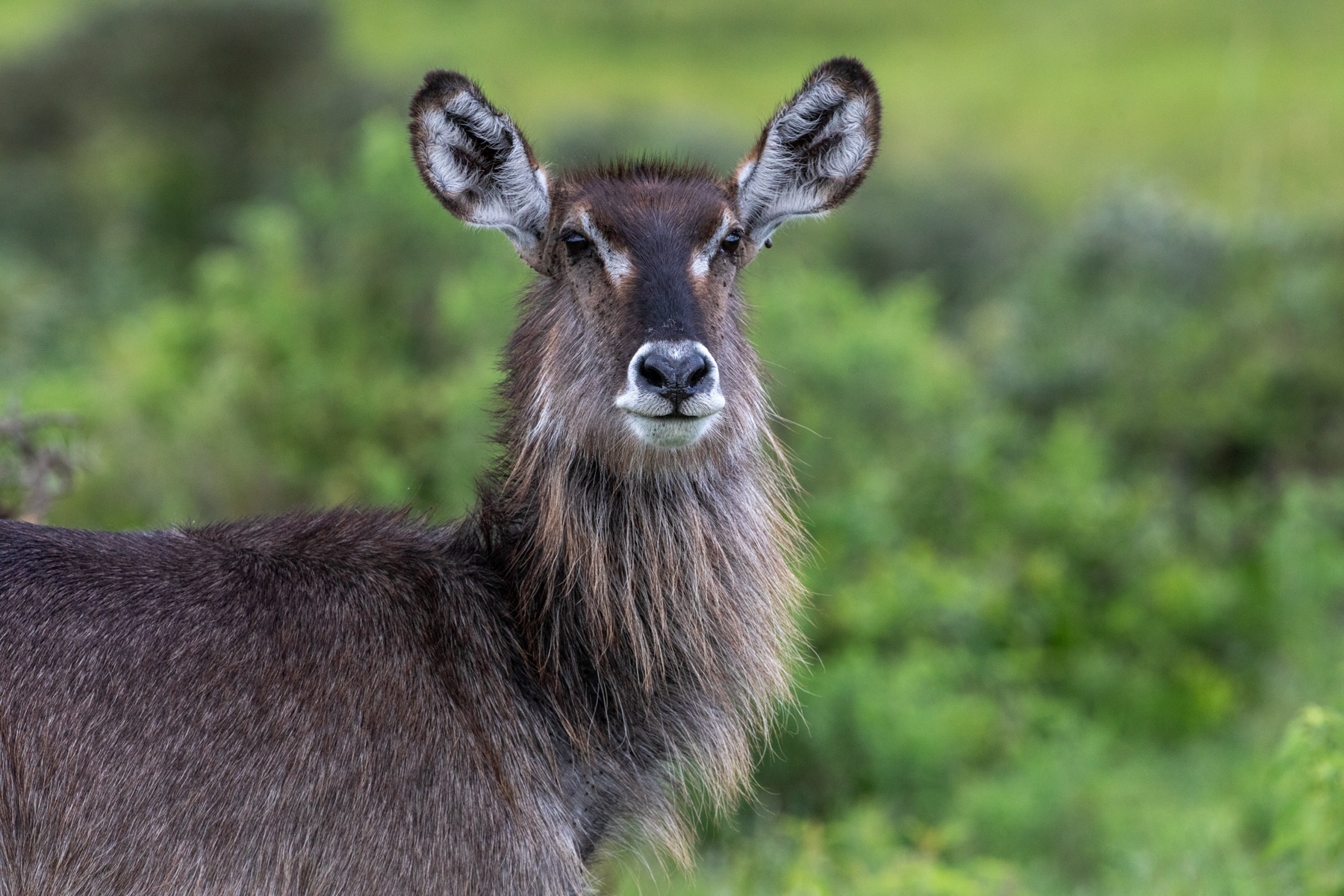
Portrait of a Waterbuck (image by Inger Vandyke)
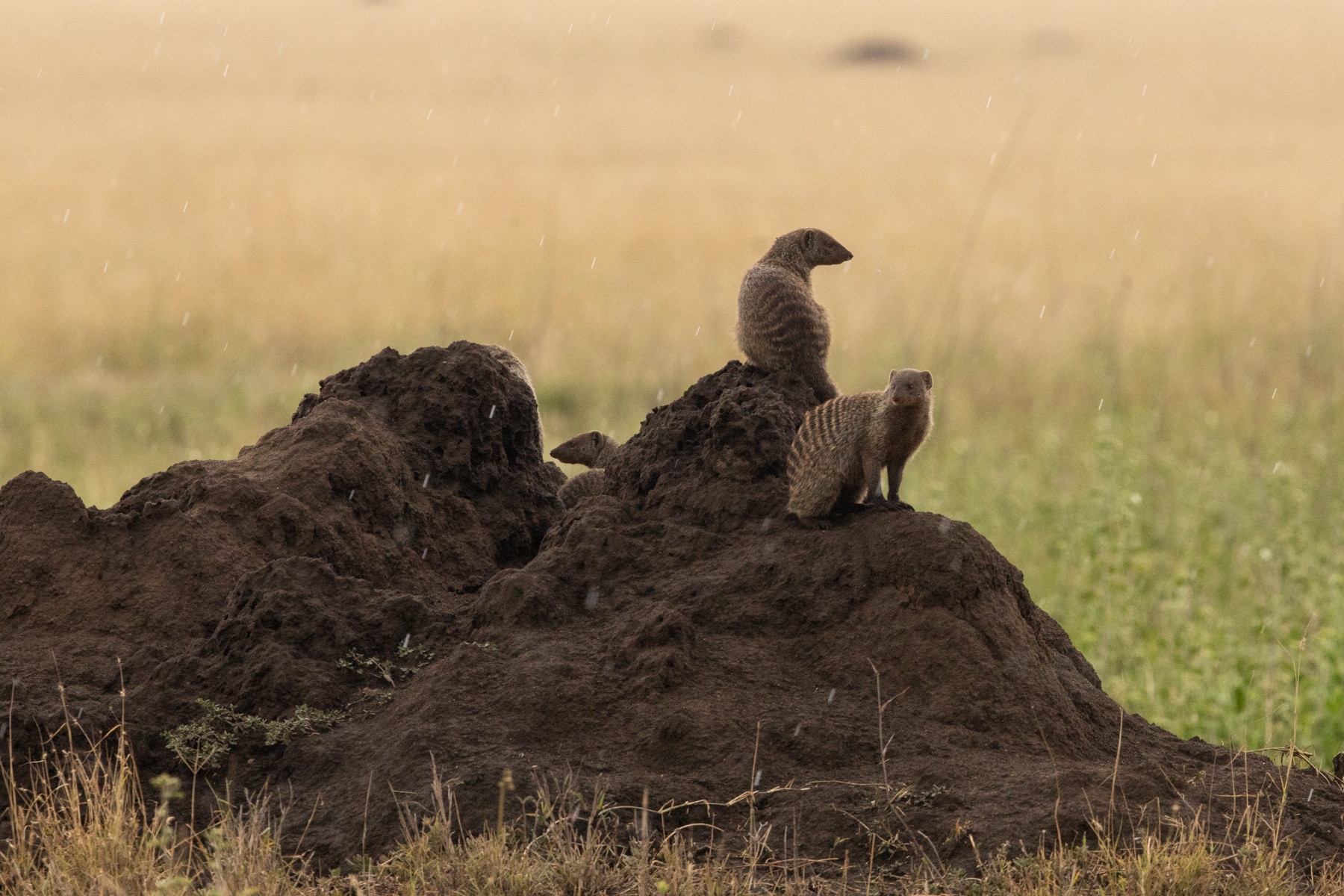
Banded Mongoose family in the rains of the Serengeti (image by Inger Vandyke)

A female leopard caught in a shower of rain while walking one of the tracks in the Serengeti (image by Inger Vandyke)
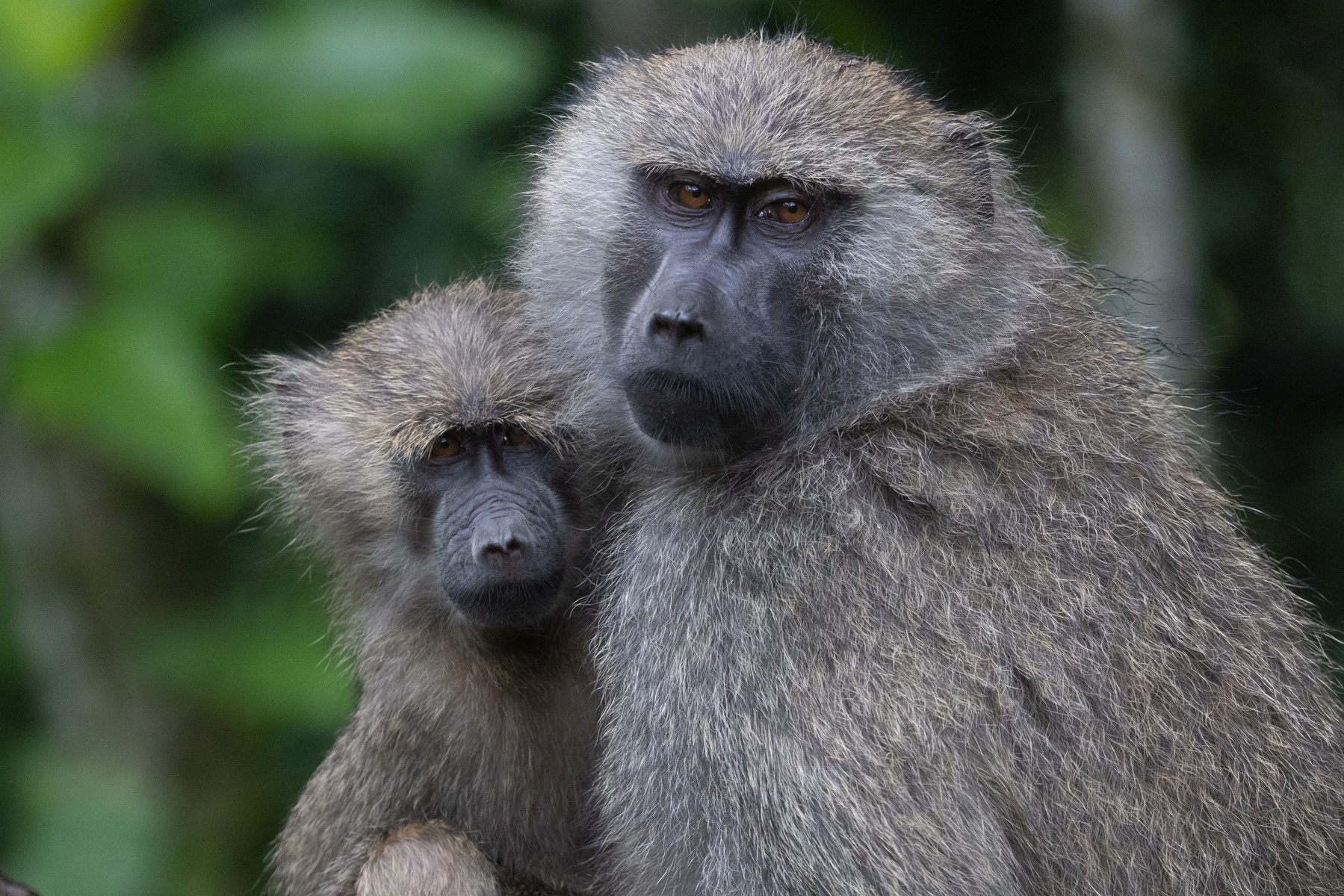
Portrait of a mother Olive Baboon with her baby (image by Inger Vandyke)
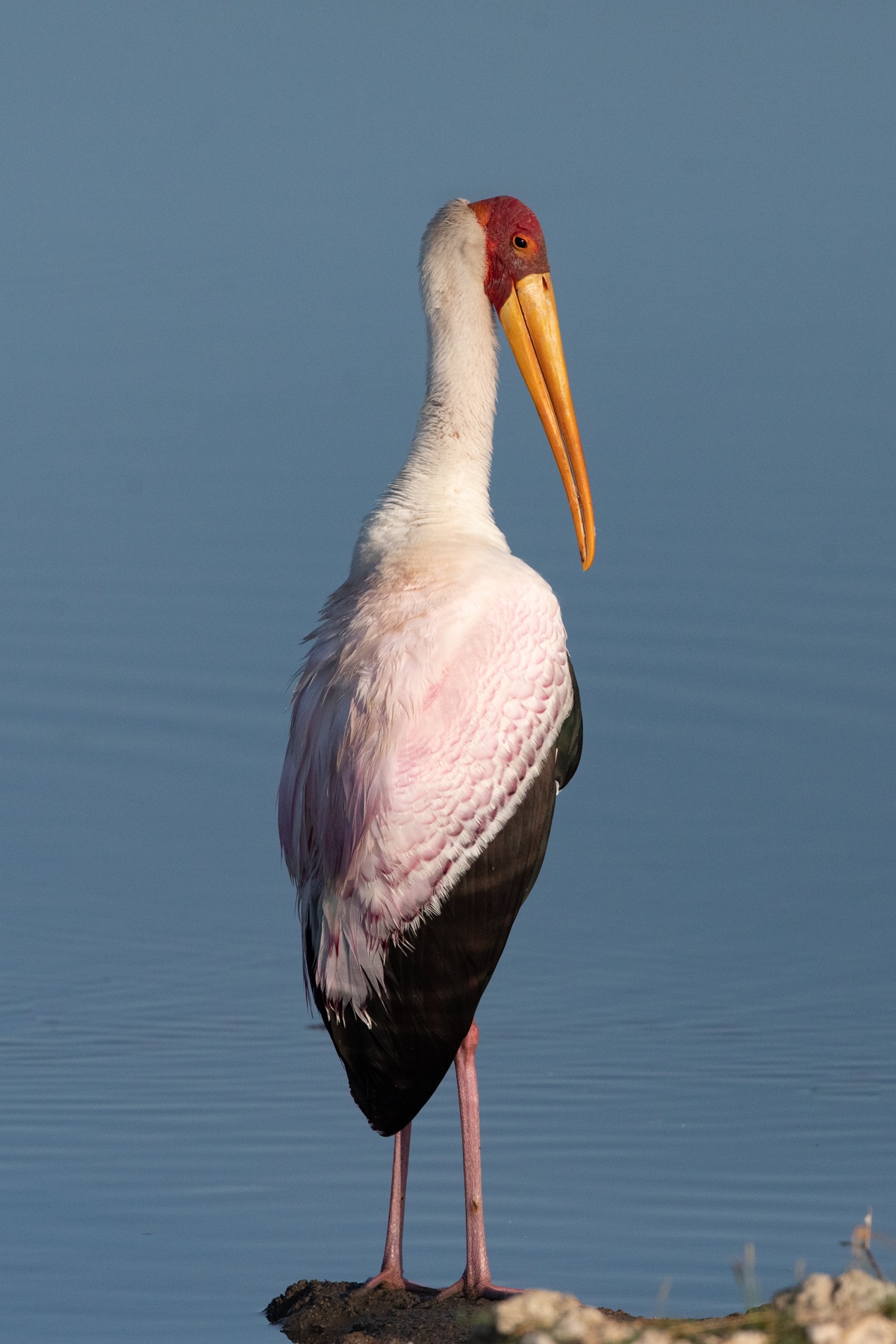
A beautiful Yellow-billed Stork on the drive to Lake Masek at Ndutu (image by Inger Vandyke)
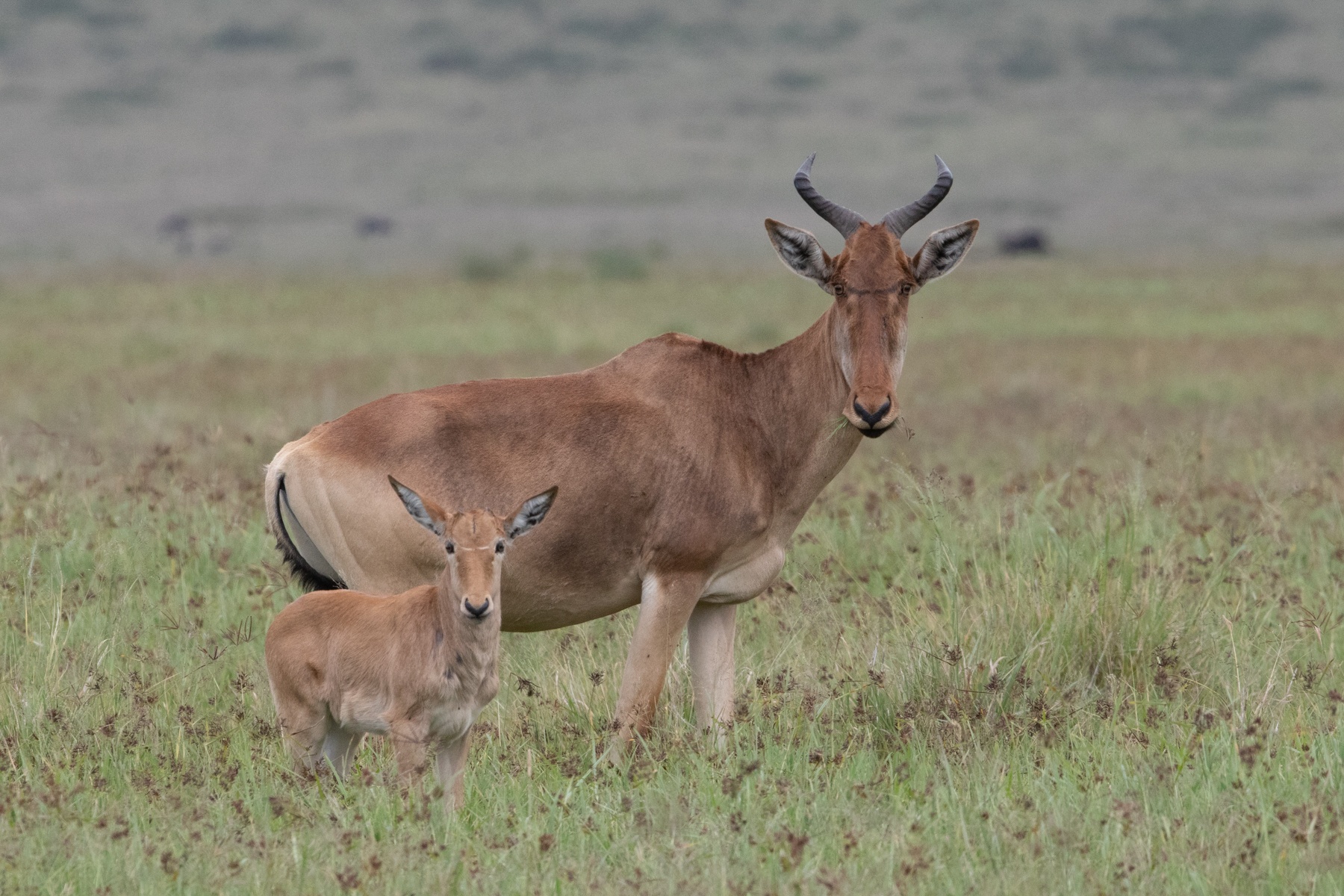
During our safaris there were babies everywhere including this adorable Kongoni baby and its mother (image by Inger Vandyke)
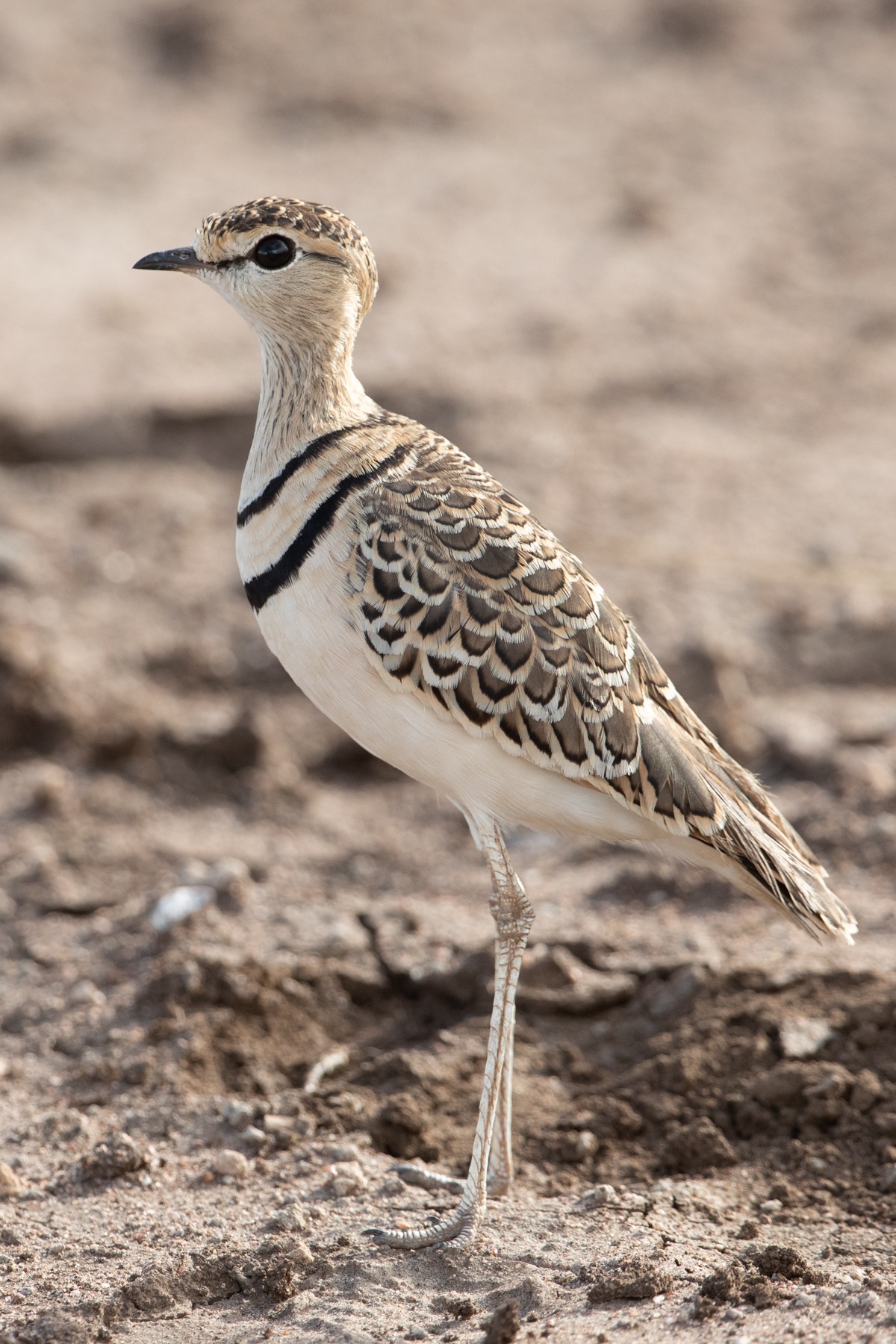
Portrait of a beautiful Double-banded Courser in the Serengeti (image by Inger Vandyke)
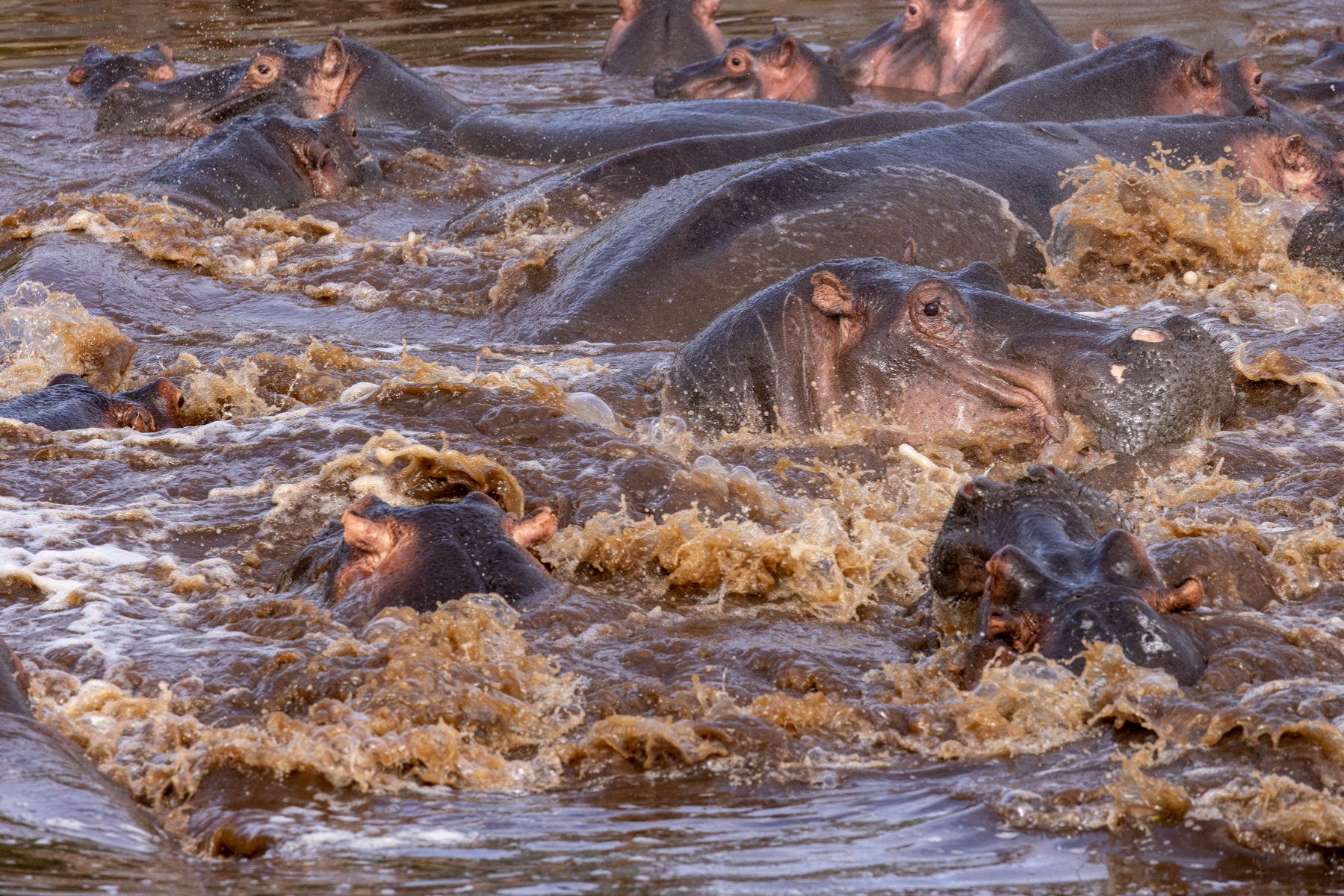
A crash of hippos in an active hippo pool of the Serengeti (image by Inger Vandyke)
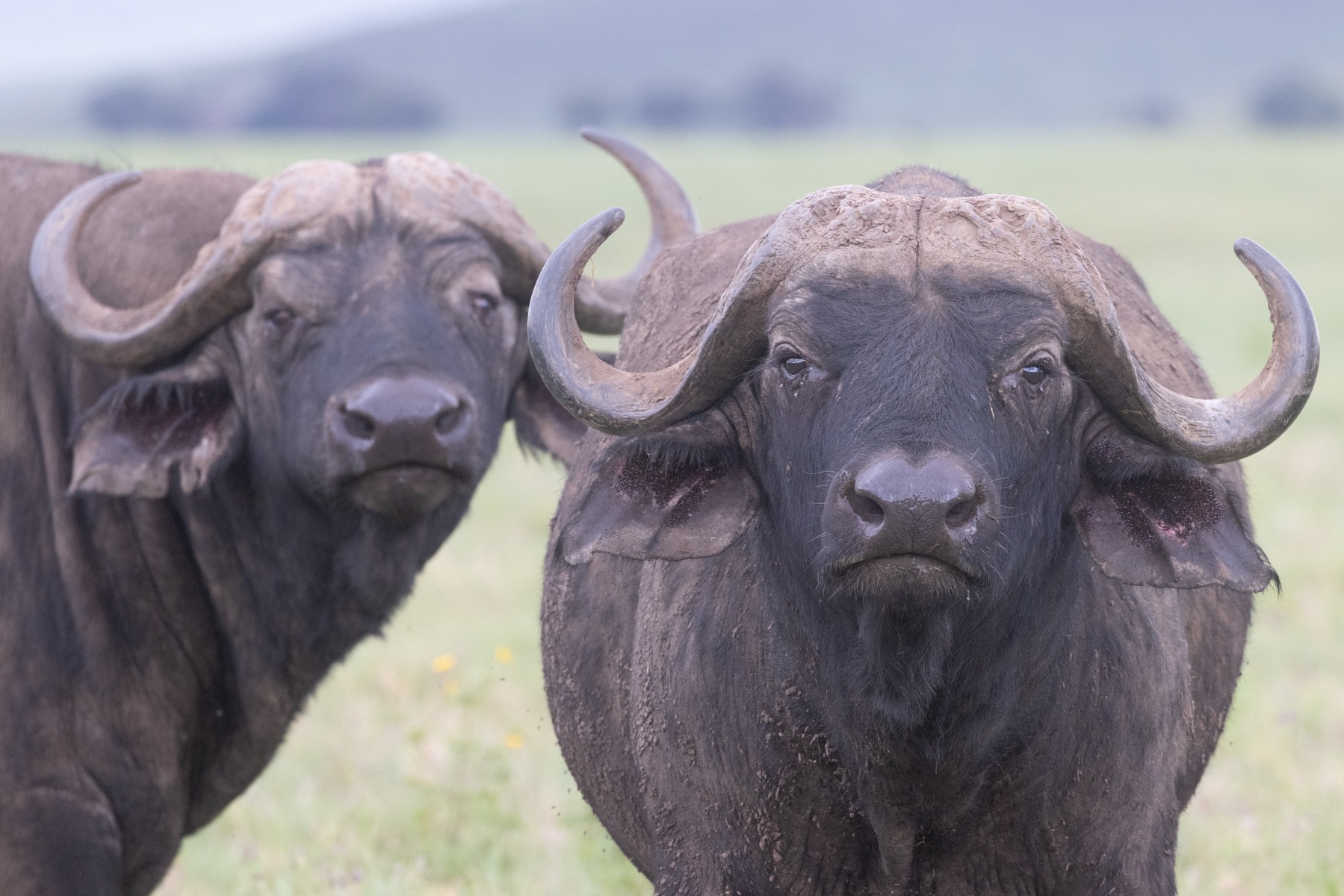
A pair of African Buffalos staring at us on safari in Ngorongoro (image by Inger Vandyke)
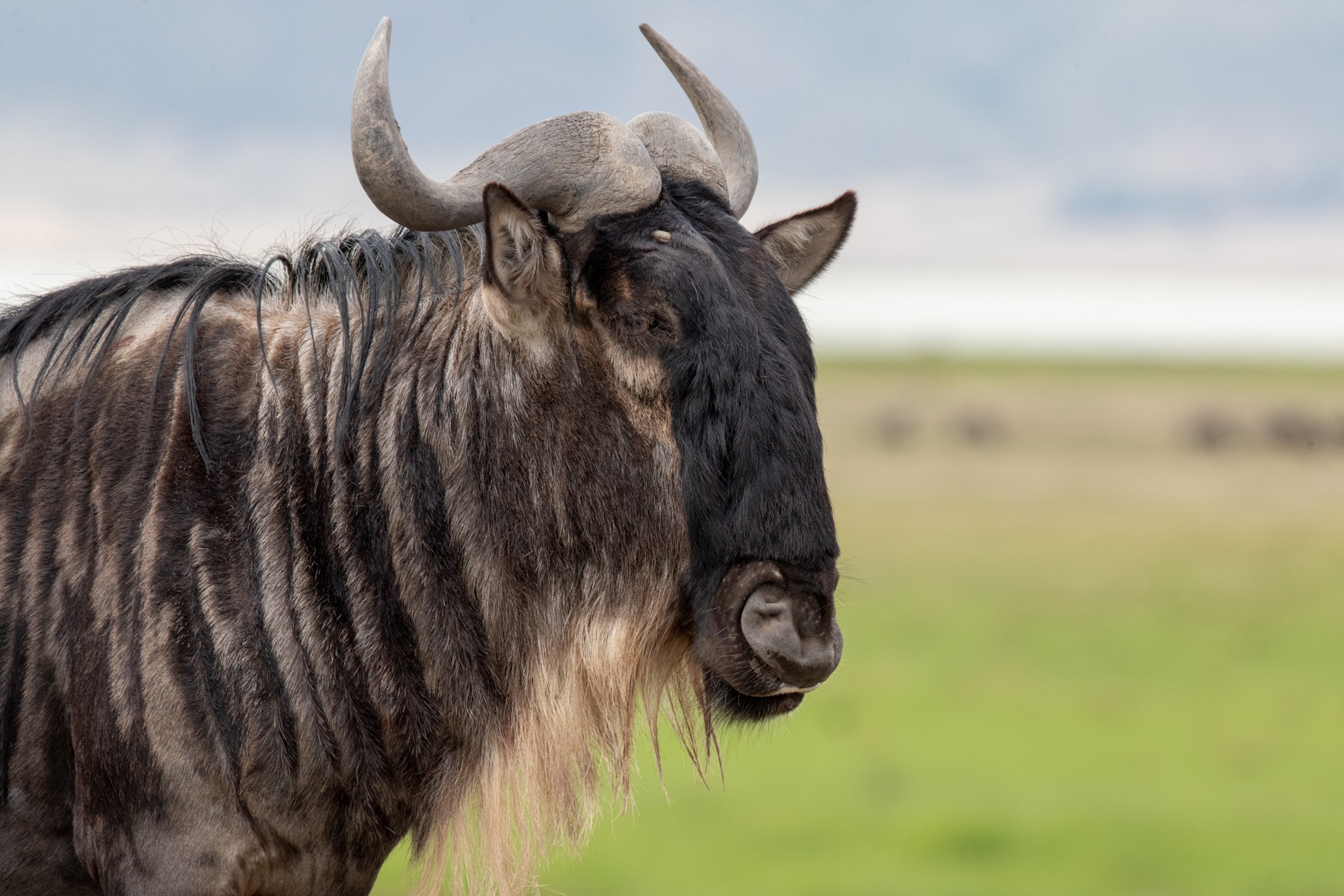
Portrait of a wandering "Wildie" in the crater at Ngorongoro (image by Inger Vandyke)
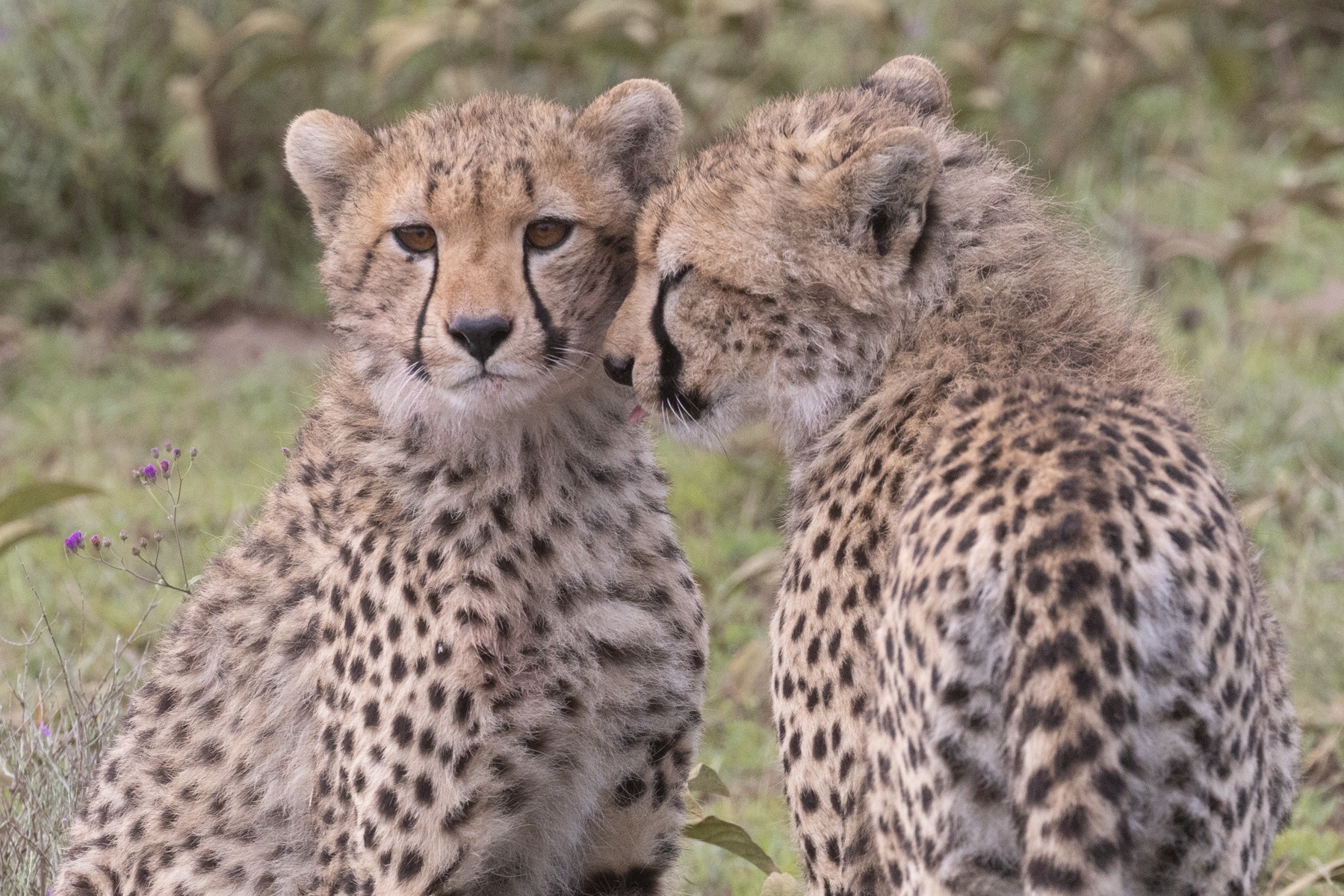
Cheetah love in the Serengeti (image by Inger Vandyke)
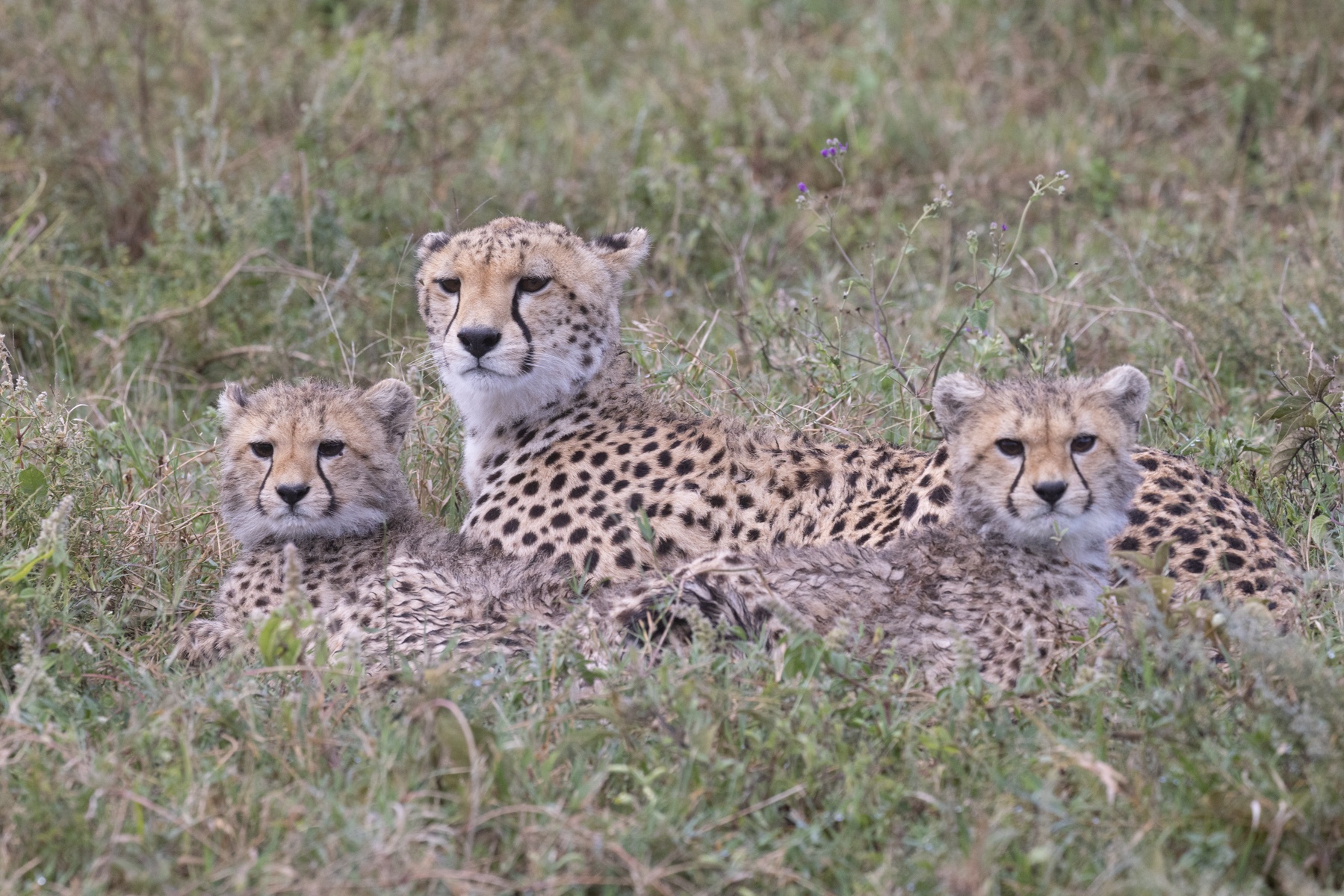
Cheetah families are always wonderful photography subjects and so hard to depart from on a safari! (image by Inger Vandyke)

"Don't mess with me!" A serious look from a lion at Ndutu (image by Inger Vandyke)
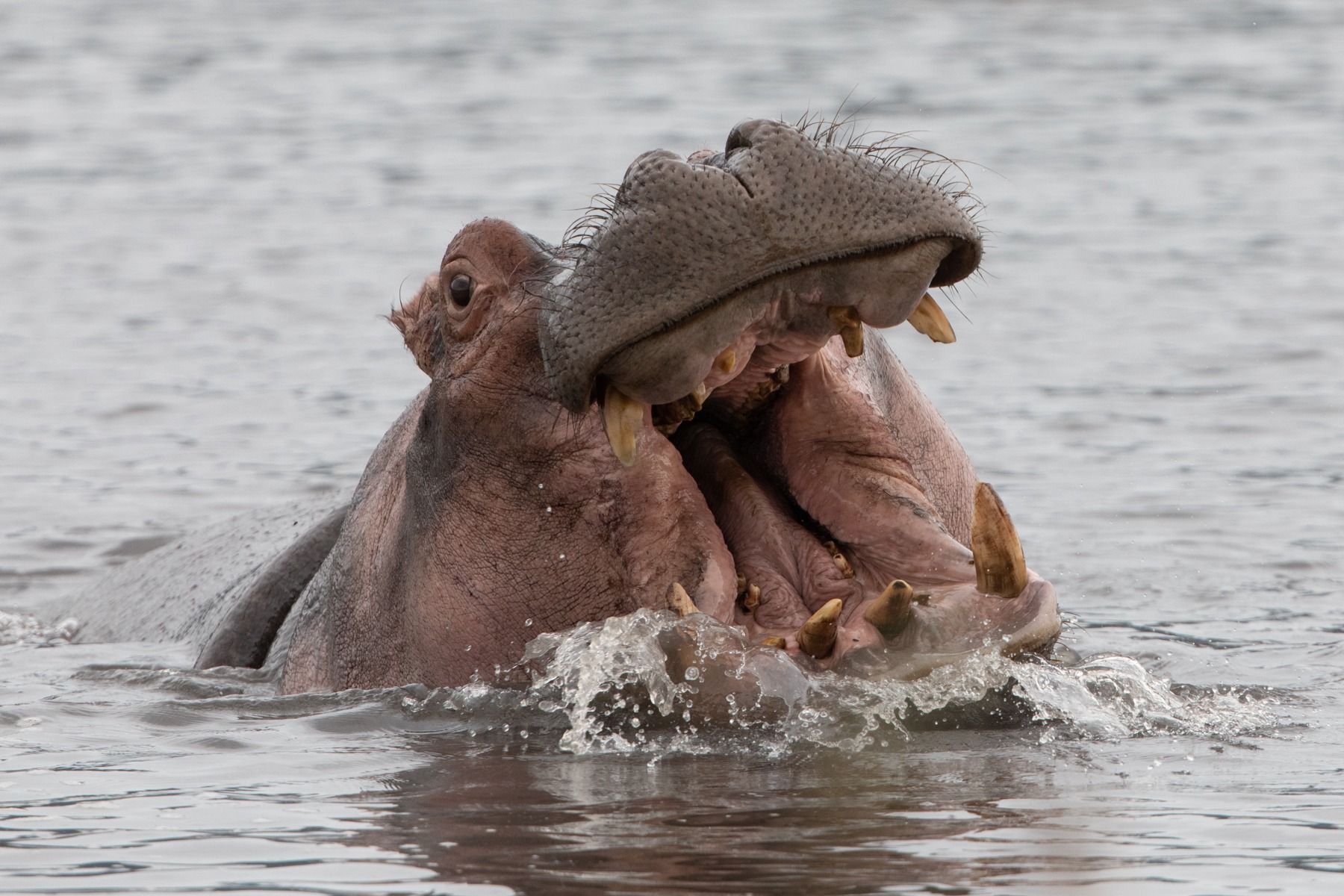
A boisterous hippo yawns right next to the pool where we at breakfast in Lerai, Ngorongoro (image by Inger Vandyke)
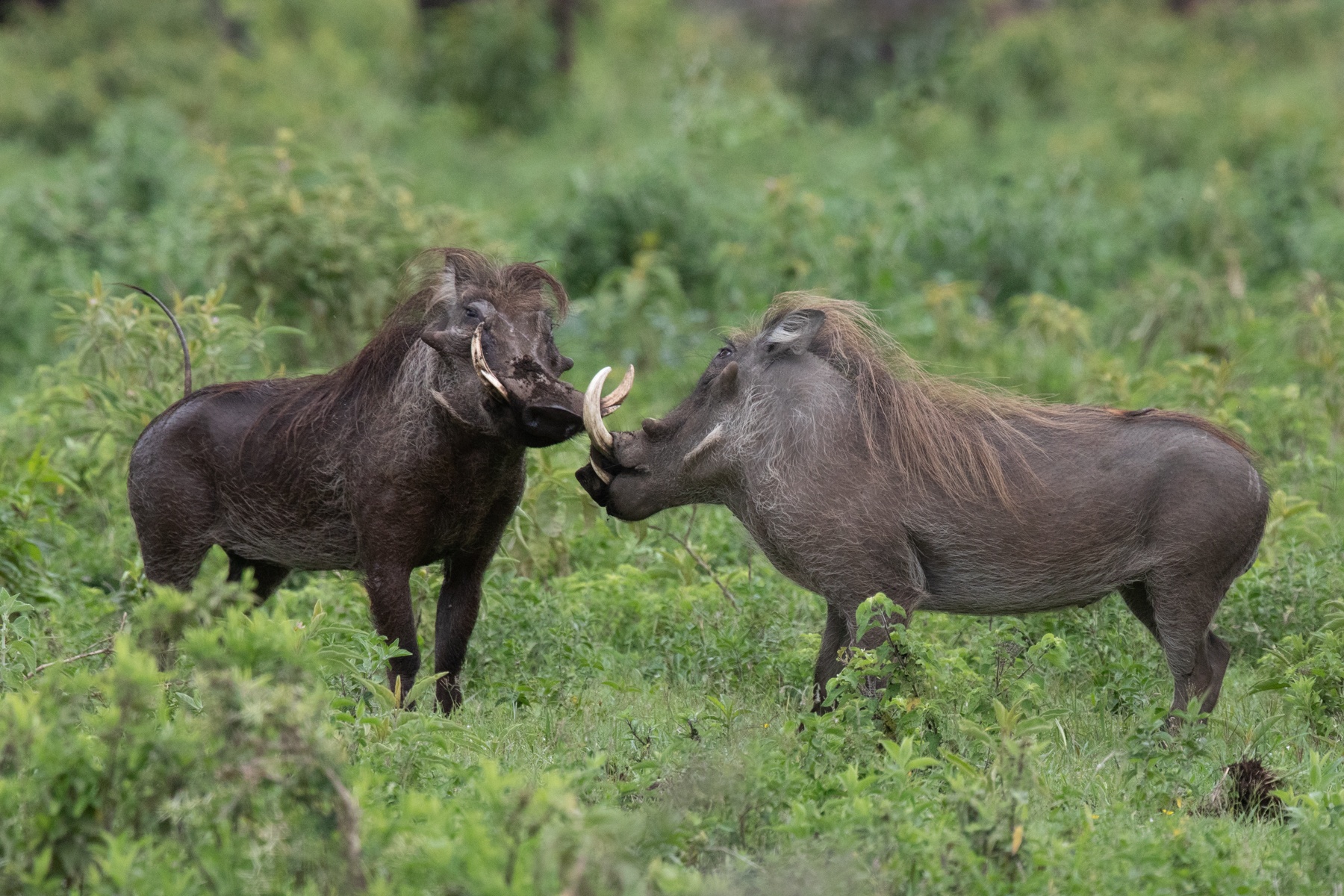
A pair of male Warthogs facing off with each other in an act of aggression (image by Inger Vandyke)
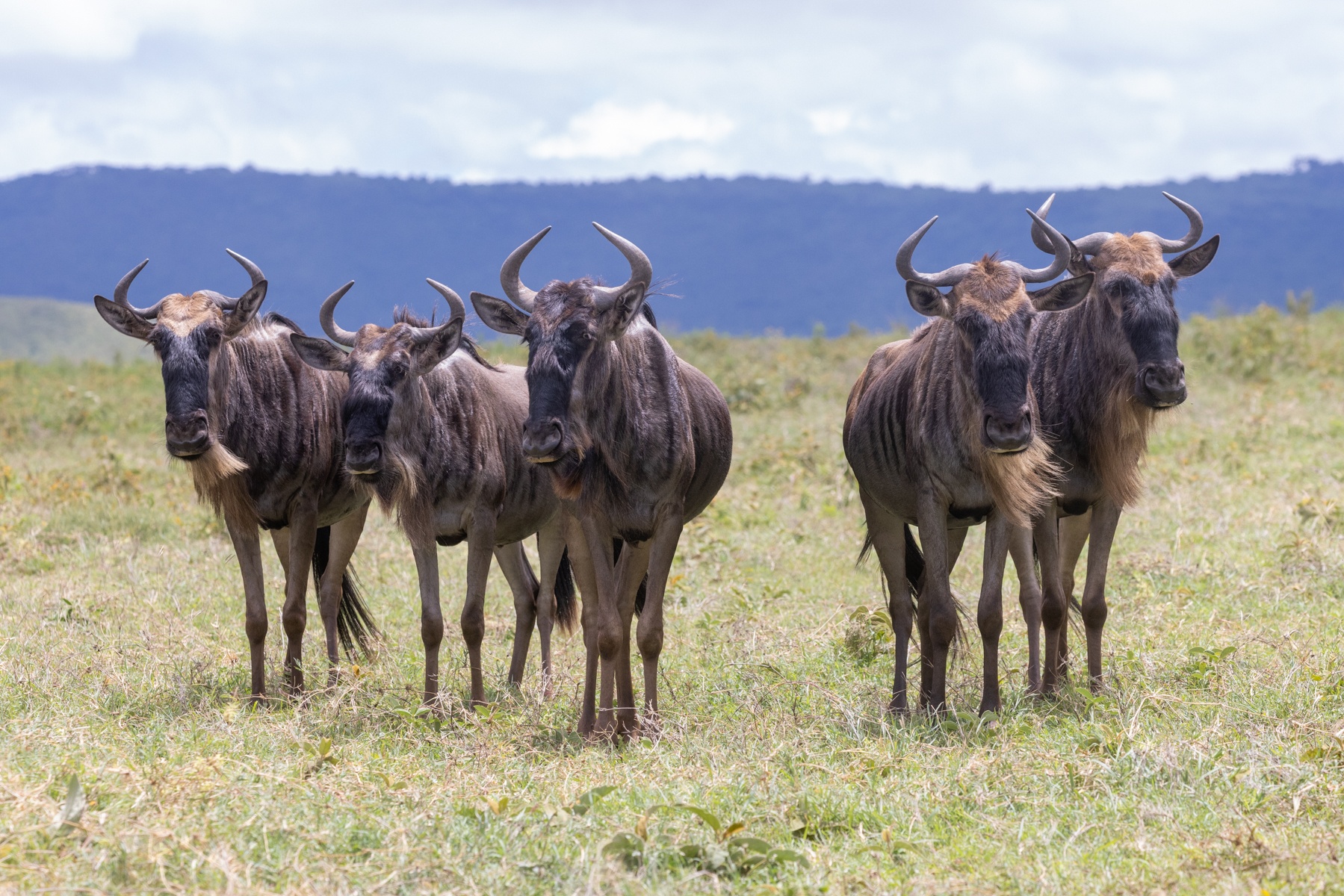
A group of wildebeest stop to look at us during one of our safaris in Ngorongoro (image by Inger Vandyke)
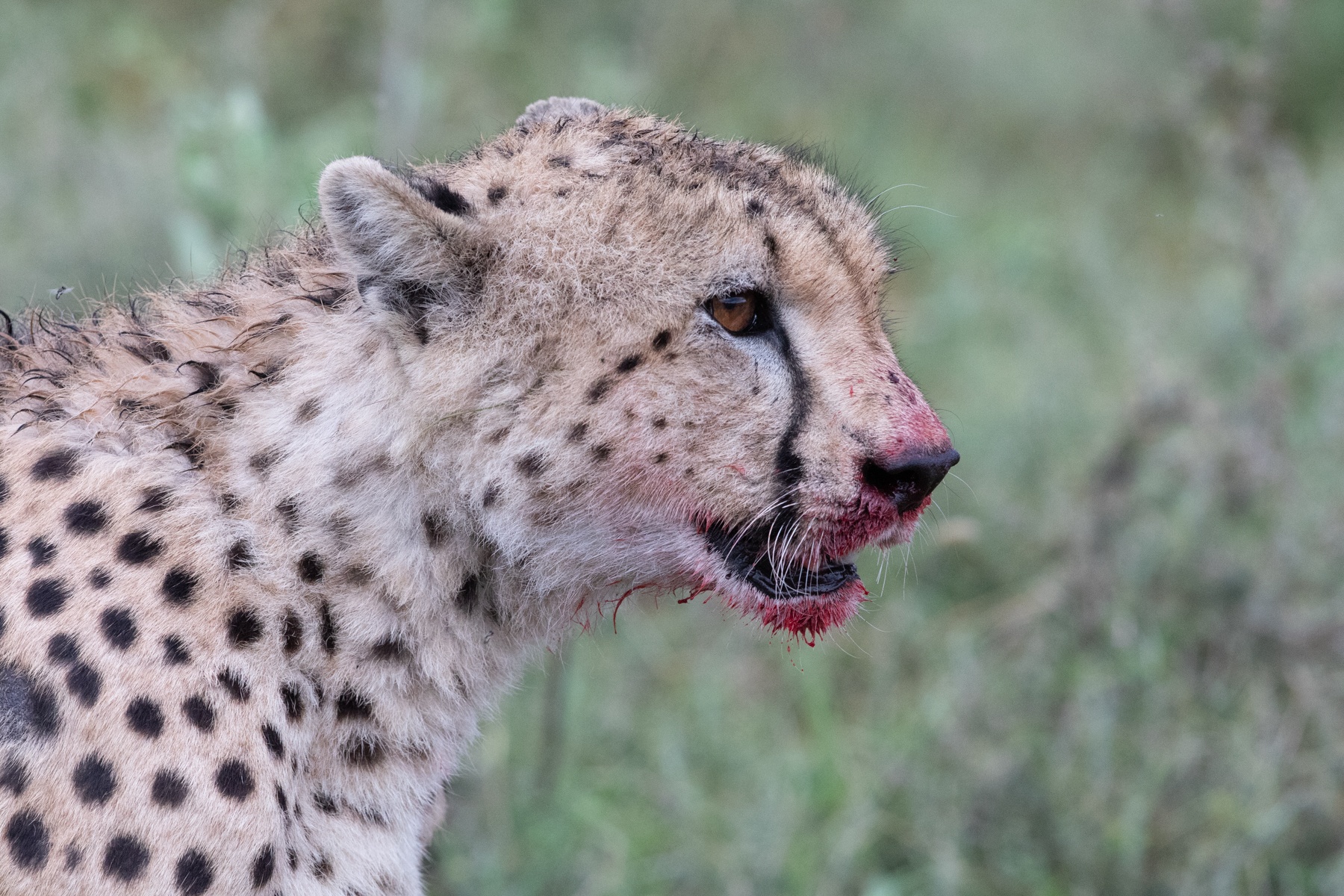
The bloodied face of a male cheetah after he hunted a young wildebeest (image by Inger Vandyke)
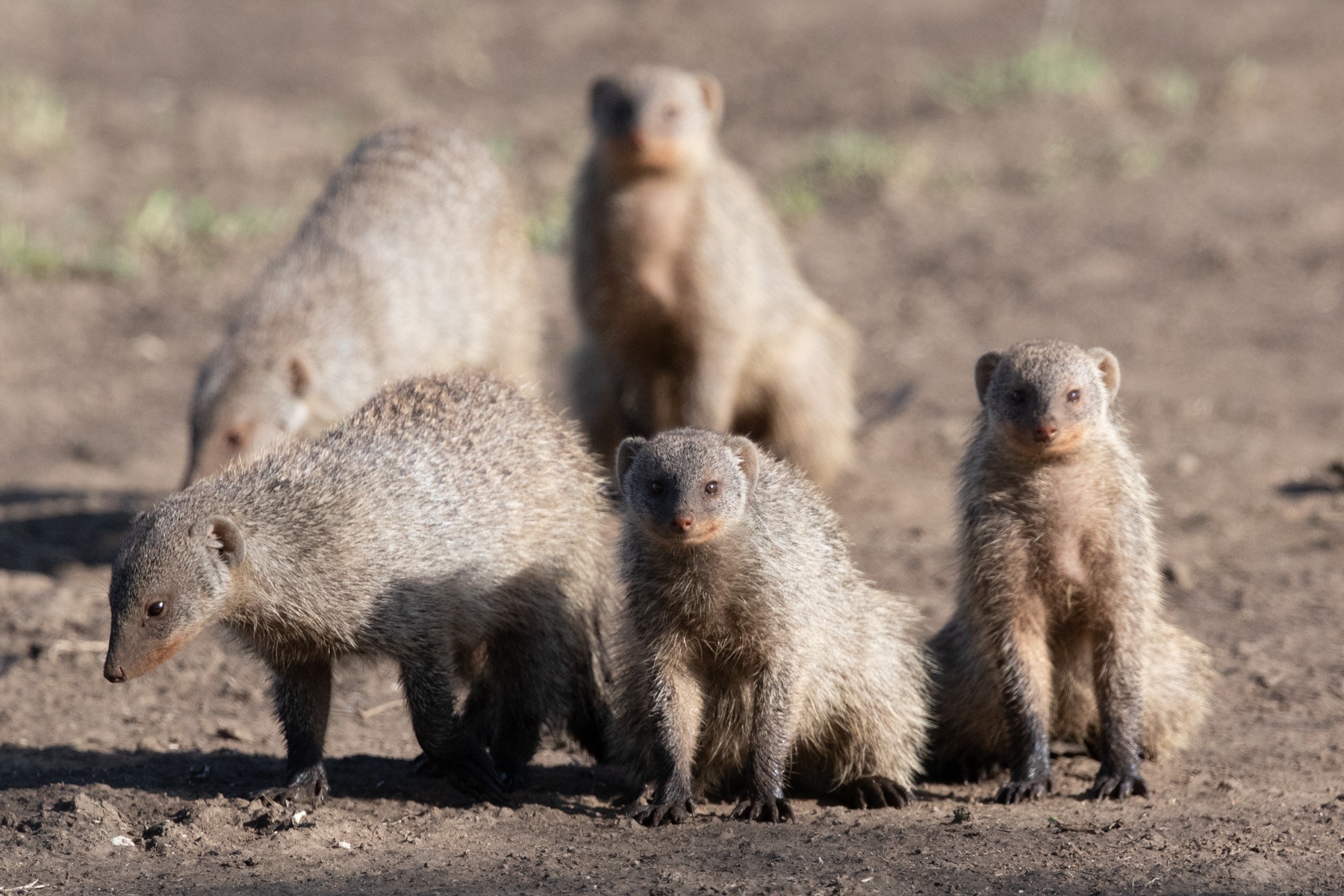
A family of Banded Mongoose checking us out in Ndutu (image by Inger Vandyke)

Pretty Grey-breasted Francolins are an endemic bird of Tanzania (image by Inger Vandyke)

A rare glimpse of the top of Kilimanjaro. At other times of the year dust, haze and clouds shroud the summit (image by Inger Vandyke)
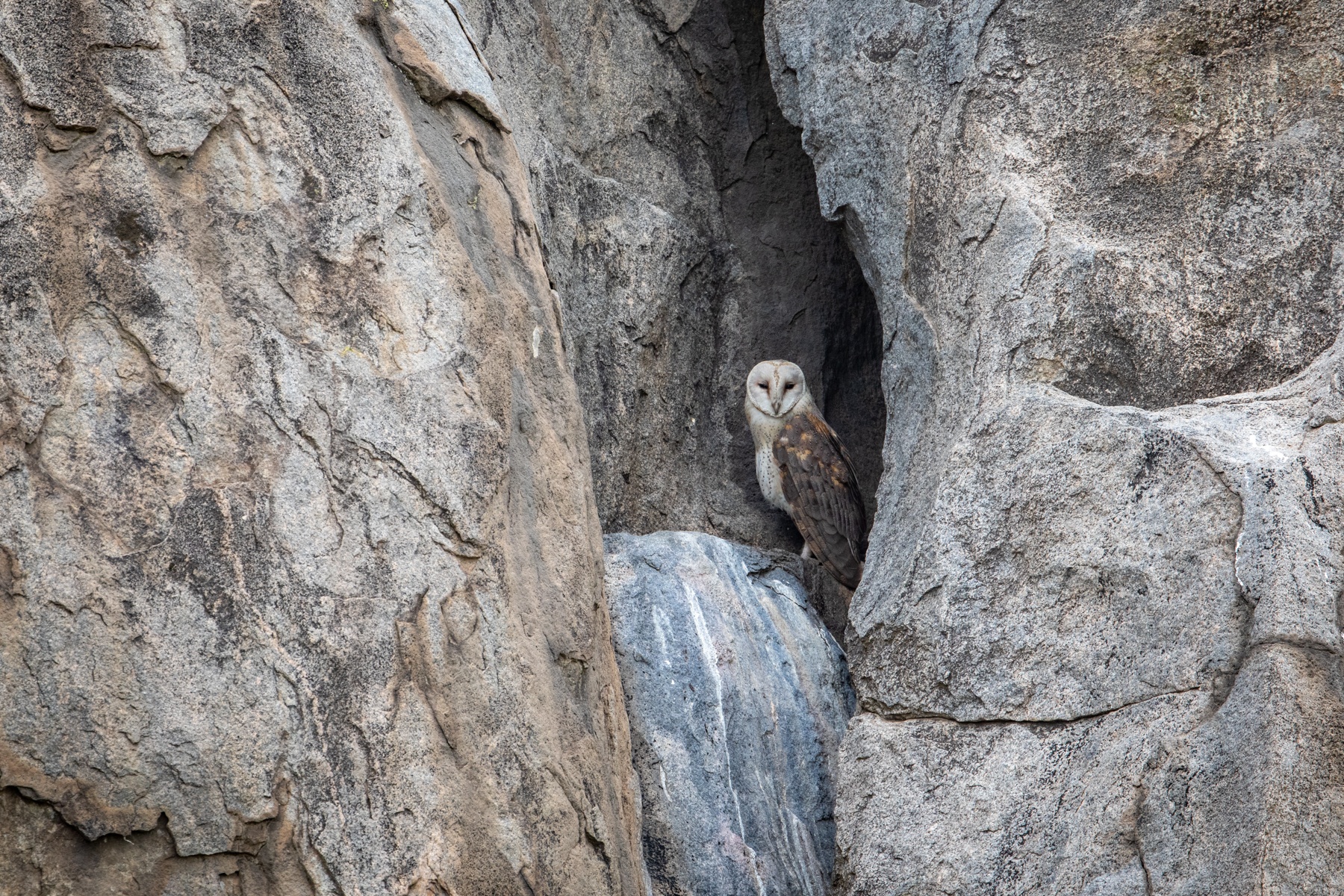
In remote Gul Kopjes we found a beautiful nesting pair of Barn Owls in a rock crevasse (image by Inger Vandyke)
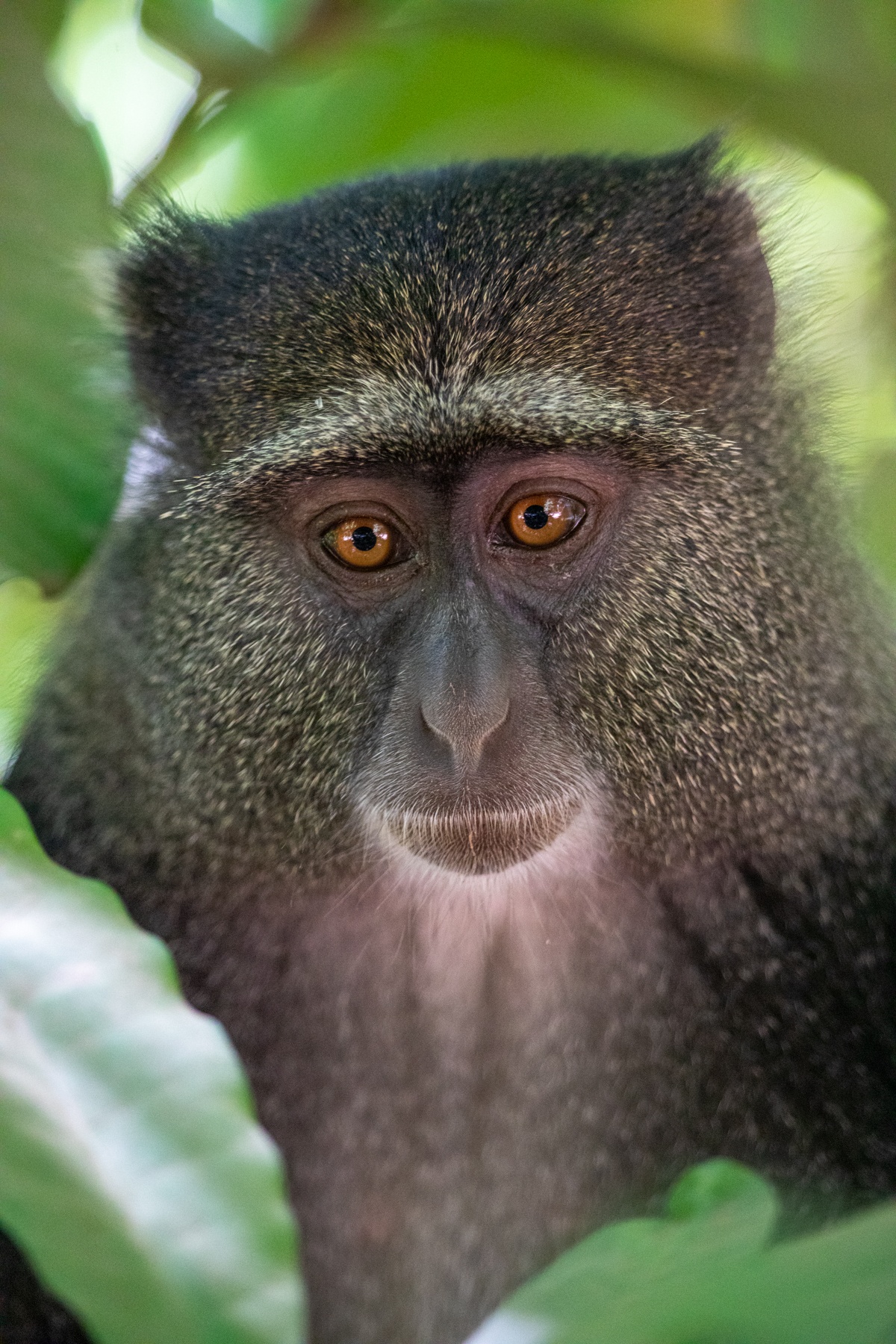
A beautiful Blue Monkey in Lake Manyara National Park (image by Inger Vandyke)
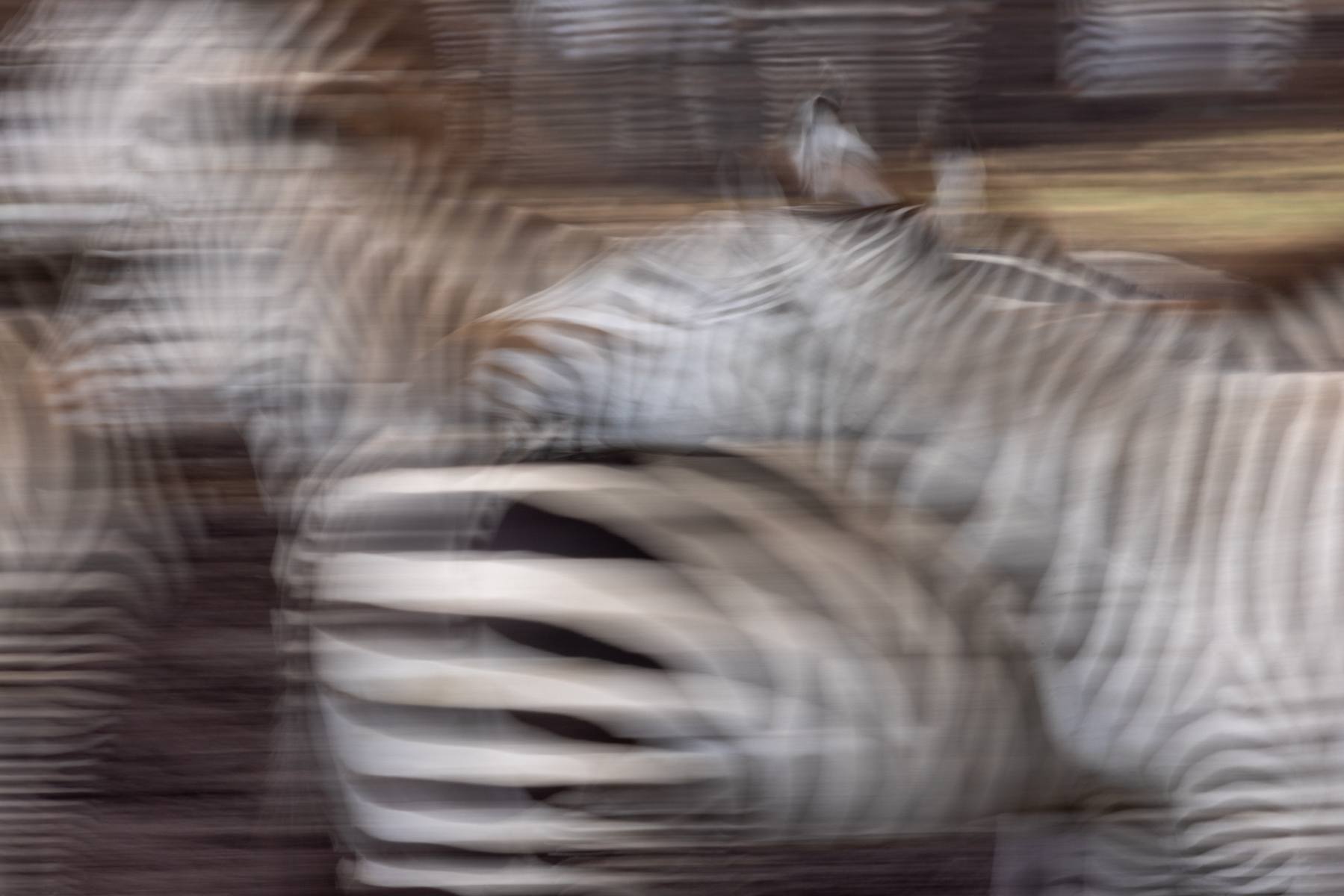
Wild Zebra motion blurs in Ngorongoro (image by Inger Vandyke)

Coming in to land at a vulture dinner, a majestic Lappet-faced Vulture arrives to show the others who is boss (image by Inger Vandyke)
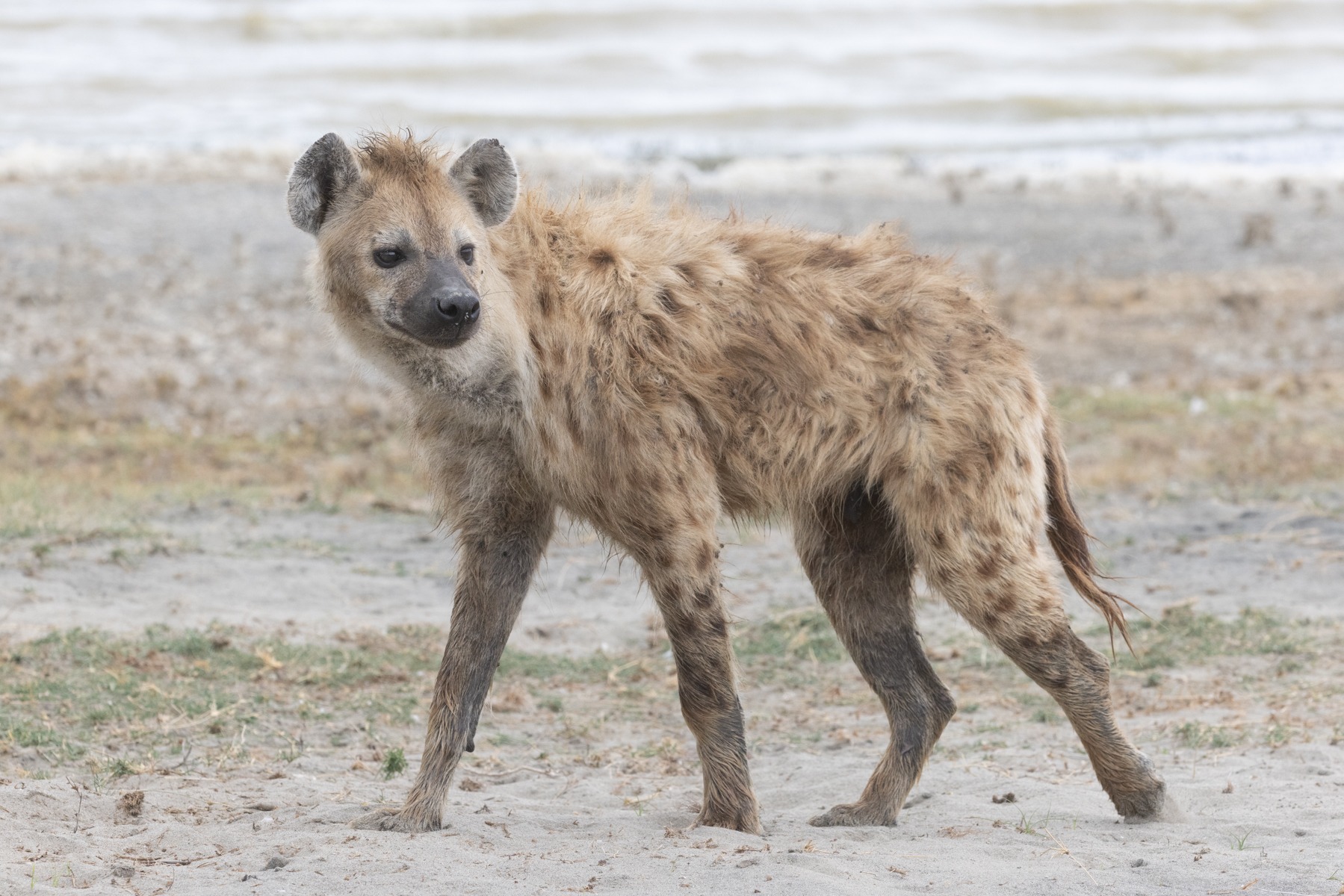
A lone Spotted Hyena prowls the shoreline of the lake in Ngorongoro. He was most likely searching for birds nests with chicks or eggs (image by Inger Vandyke)
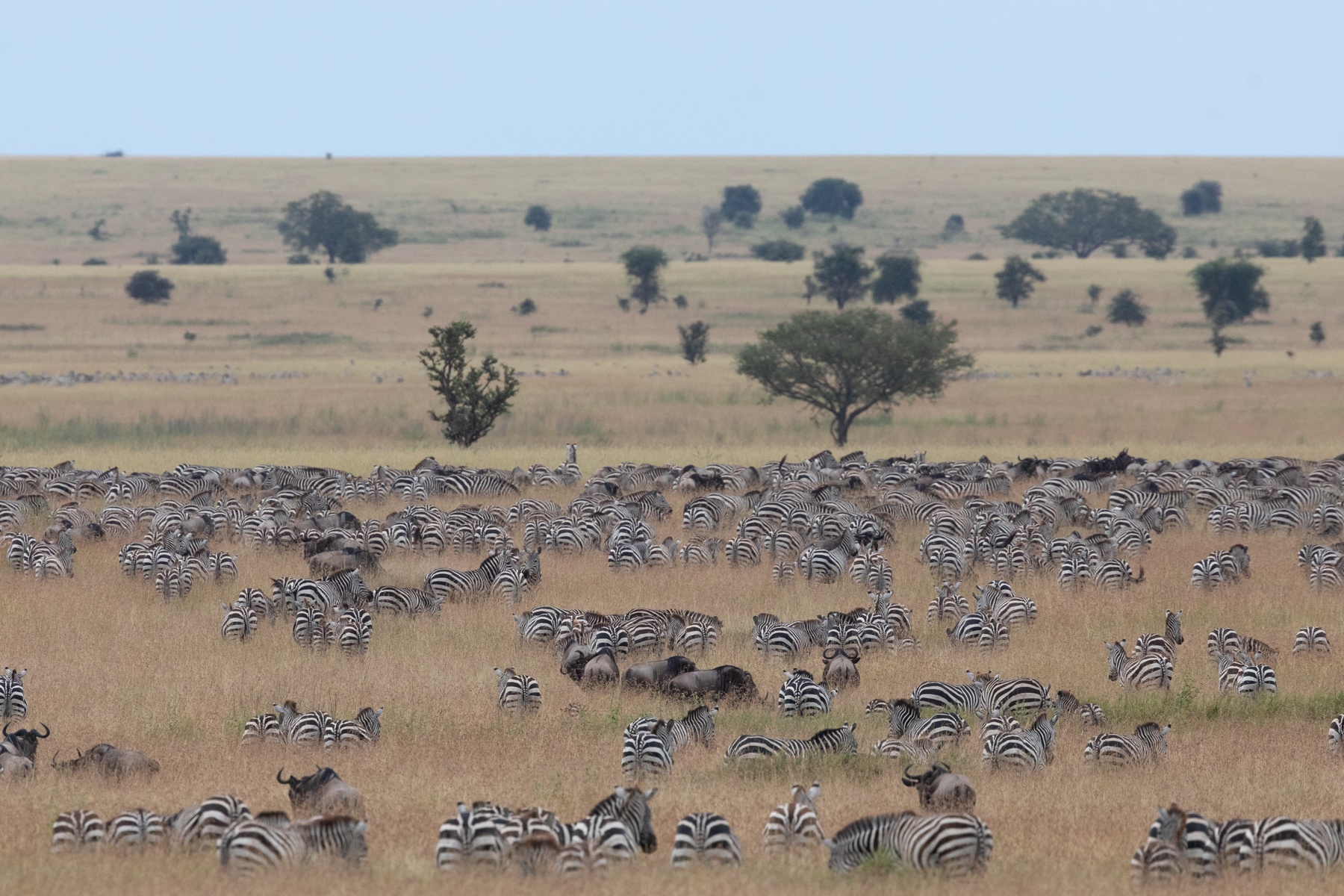
An ocean of Zebra posteriors at one of the migration herds in the Serengeti (image by Inger Vandyke)
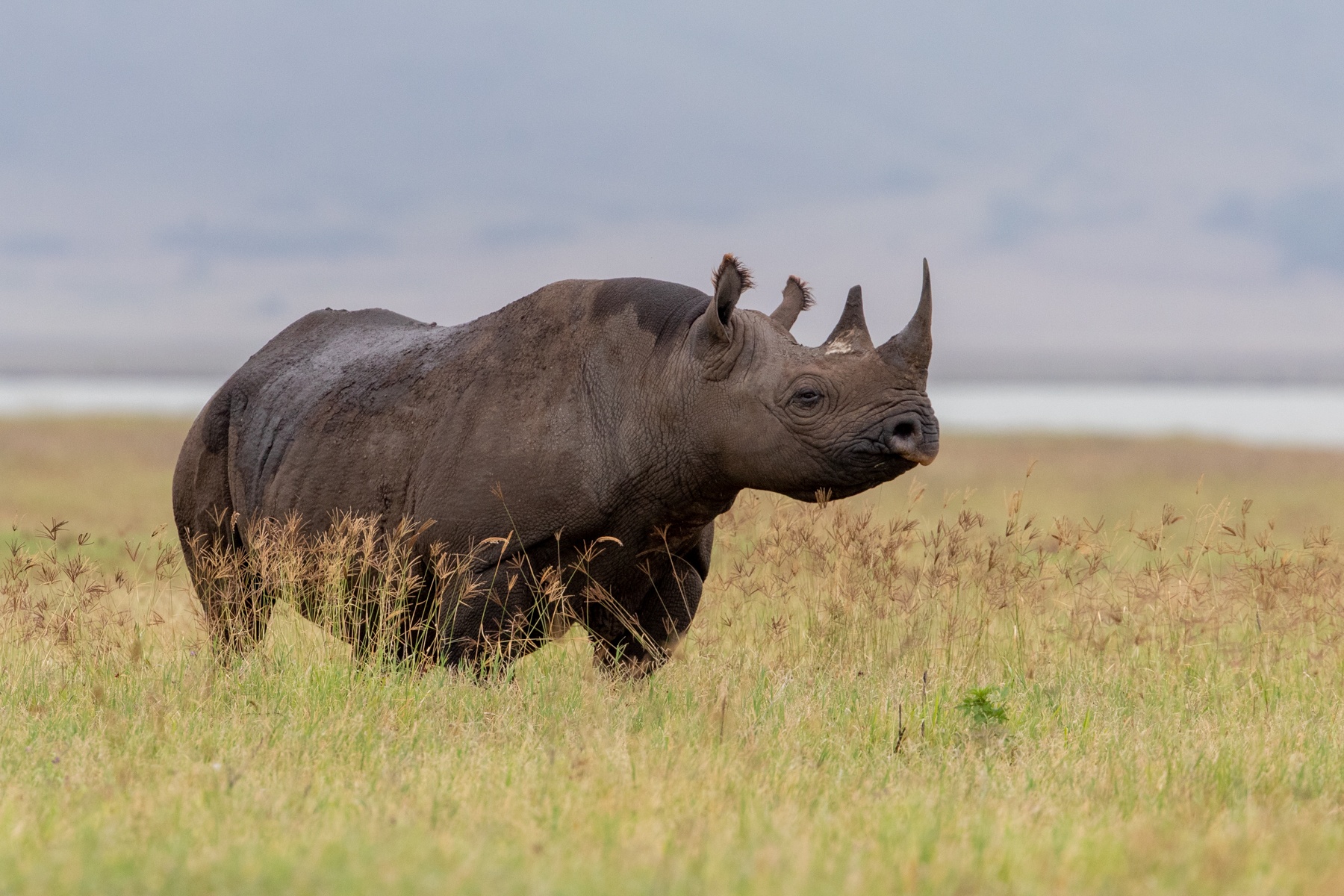
Close encounters of the rhino kind in Ngorongoro (image by Inger Vandyke)

Stunning silhouetted flamingos at sunrise on Lake Ndutu(image by Inger Vandyke)
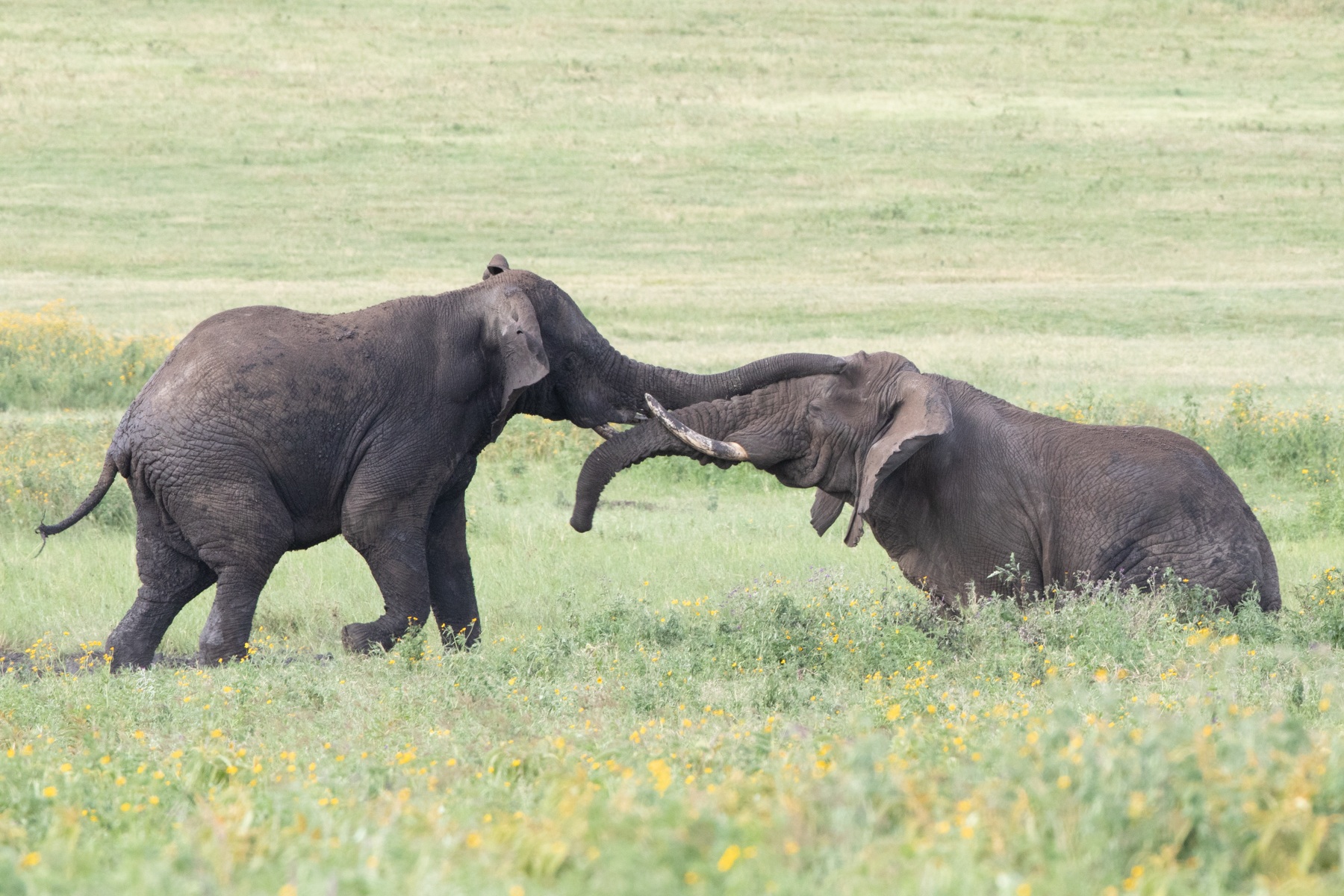
Male elephants fighting in Ngorongoro (image by Inger Vandyke)
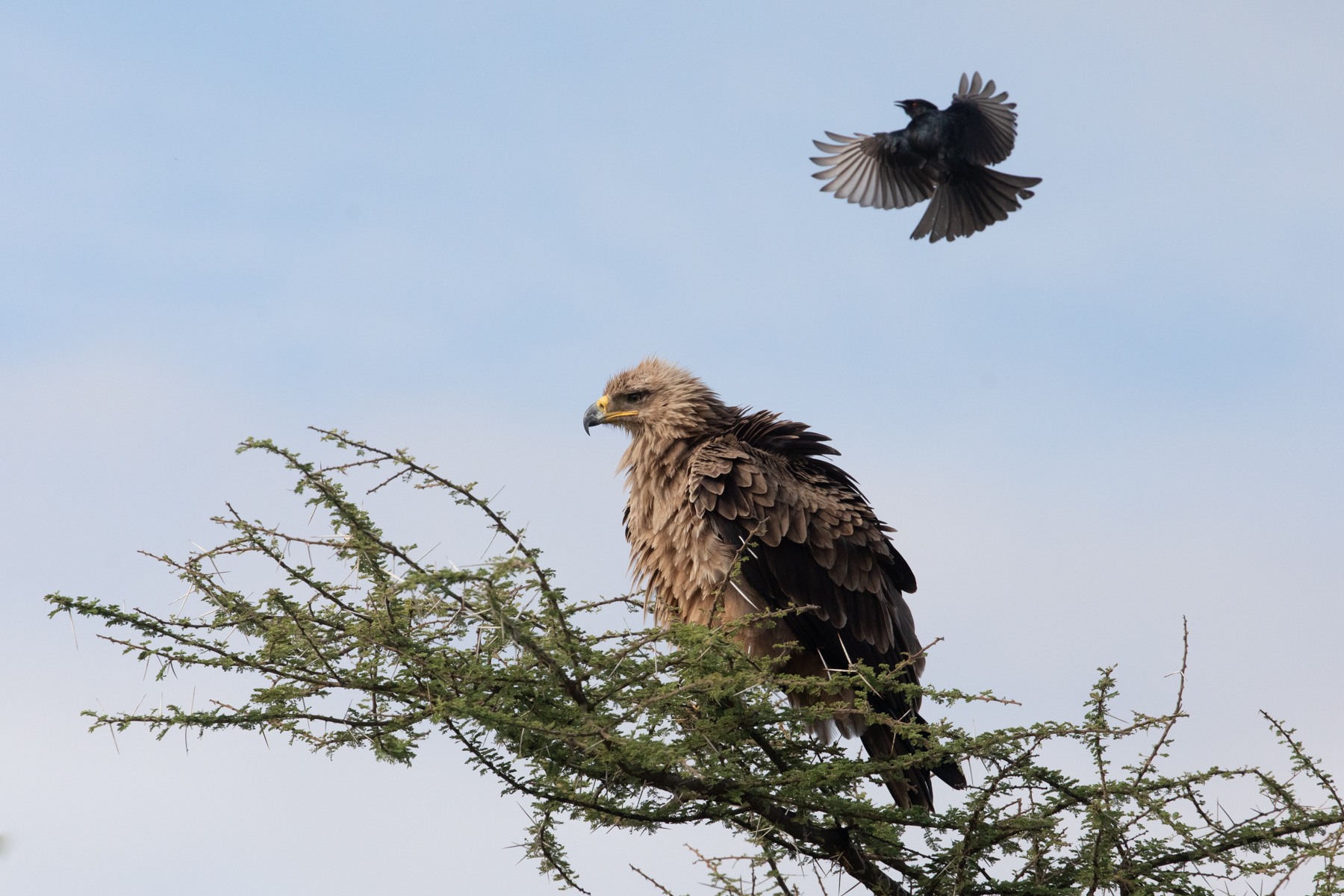
Flying attack! A Fork-tailed Drongo annoying a ruffled Tawny Eagle in the Serengeti (image by Inger Vandyke)
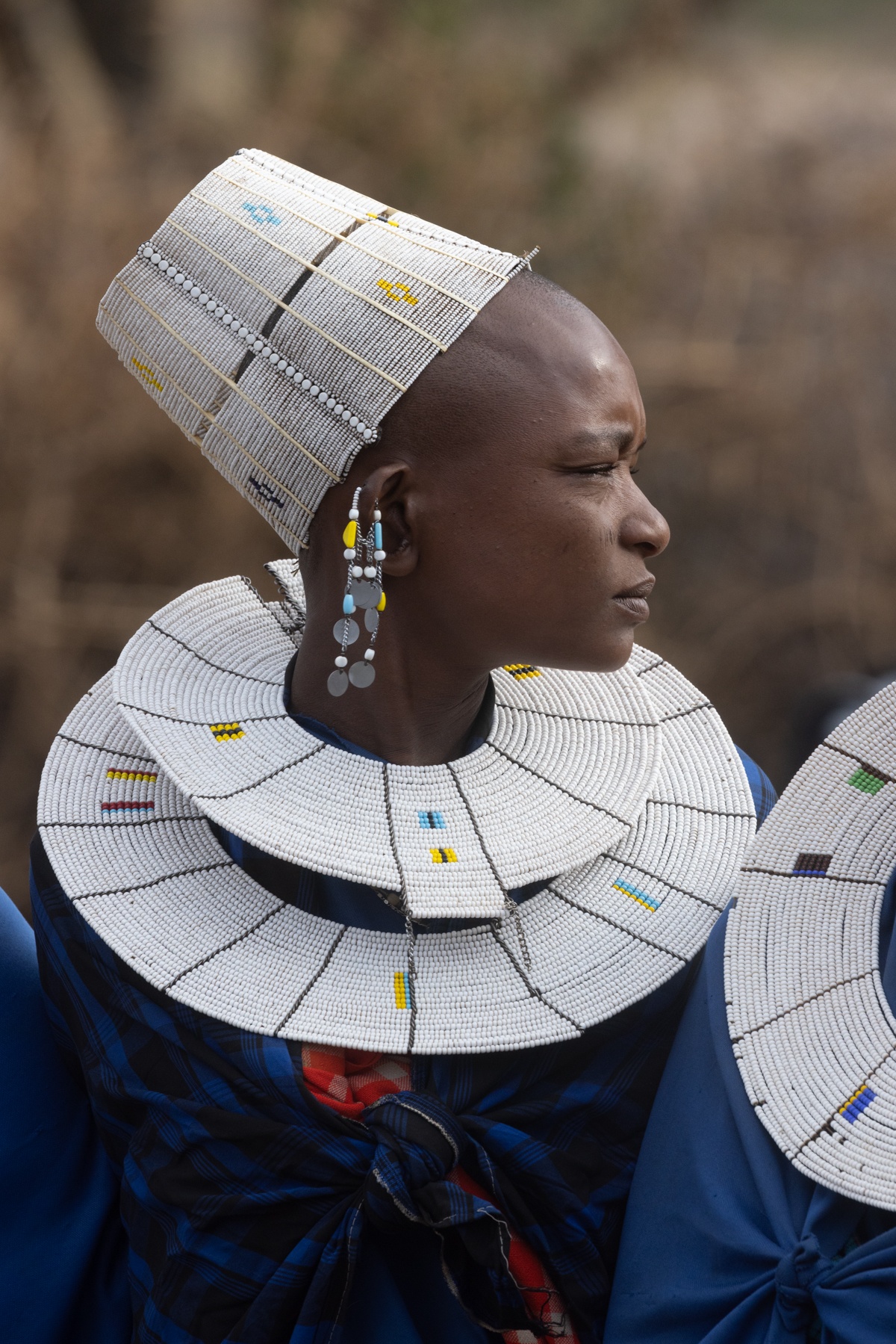
Unlike the Maasai women of Kenya, Tanzanian Maasai women adorn themselves with beautiful white disc necklaces and hats (image by Inger Vandyke)
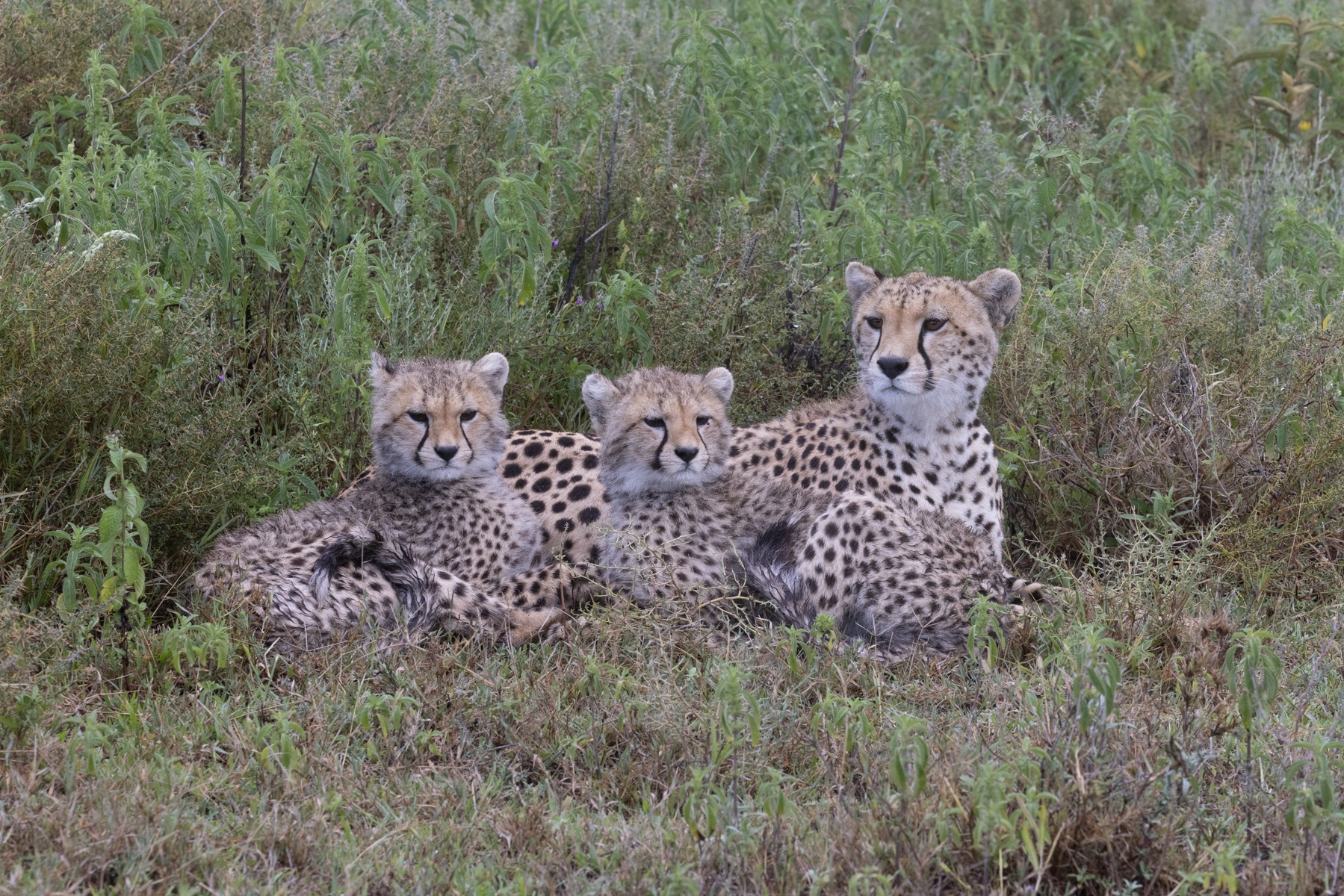
A beautiful Cheetah mother and her two cubs in Ndutu (image by Inger Vandyke)
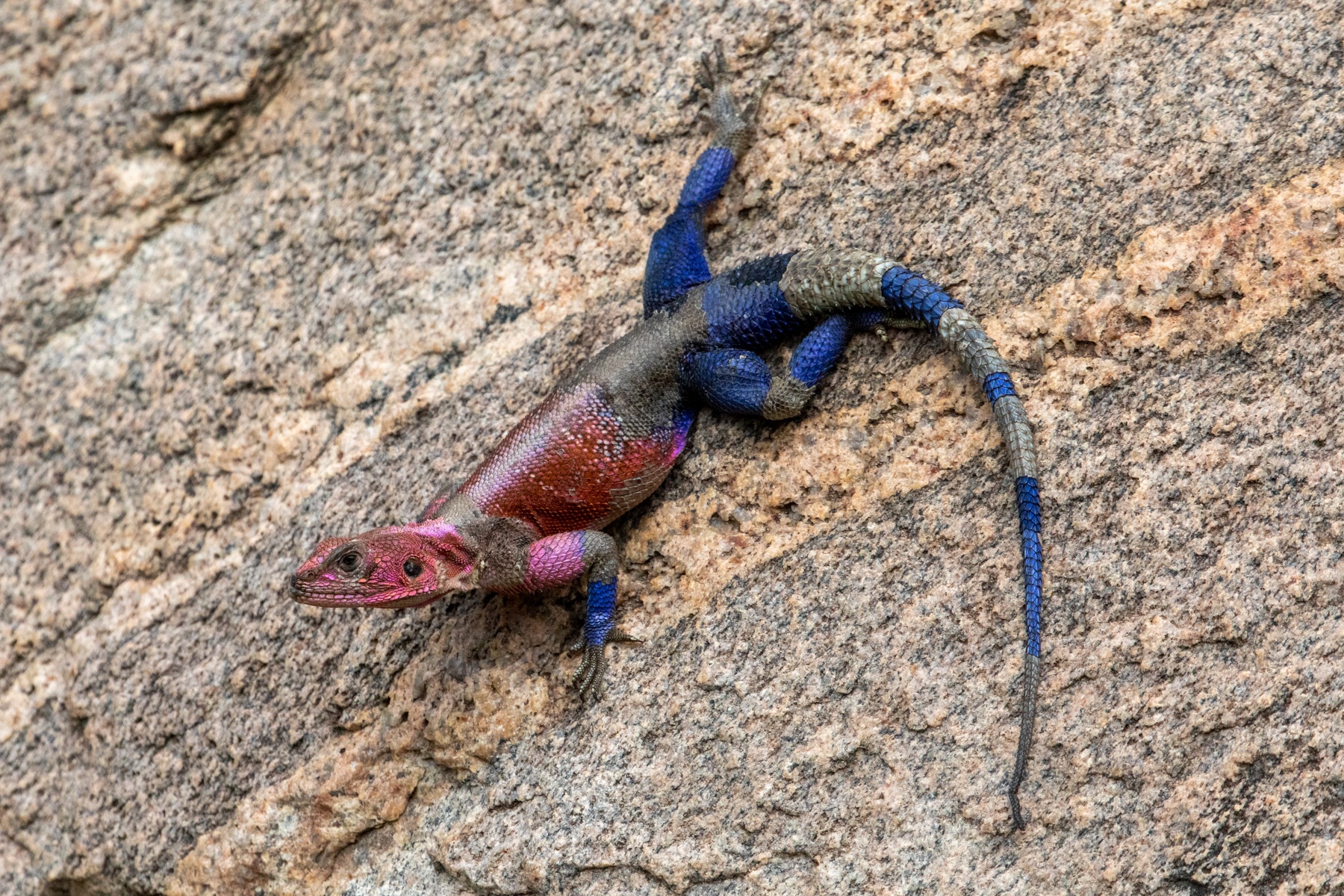
'Tis the season for Rock Agamas to be breeding. Brightly coloured males can be found chasing around duller coloured females during our tour (image by Inger Vandyke)
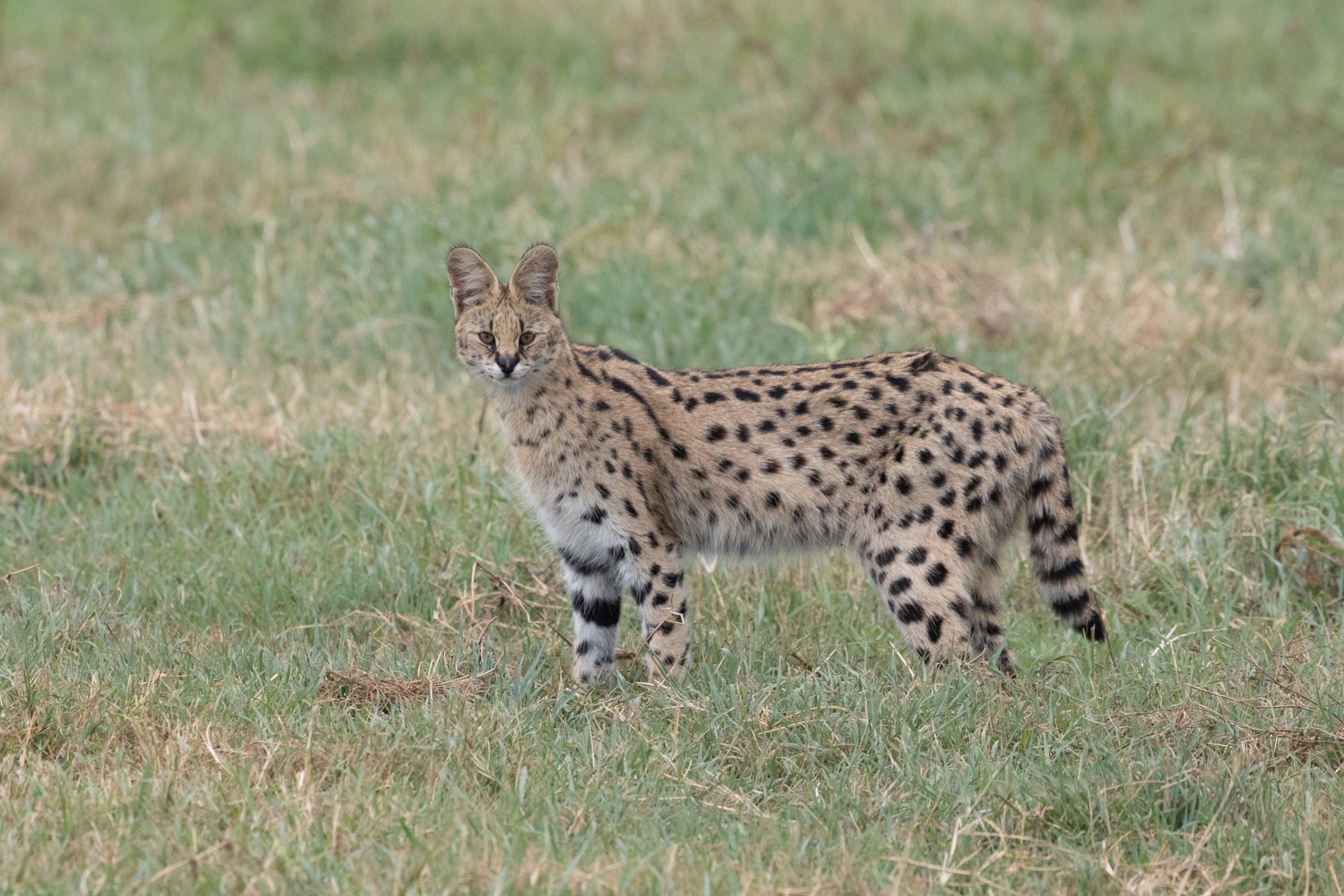
Can you ever see too many servals? (image by Inger Vandyke)
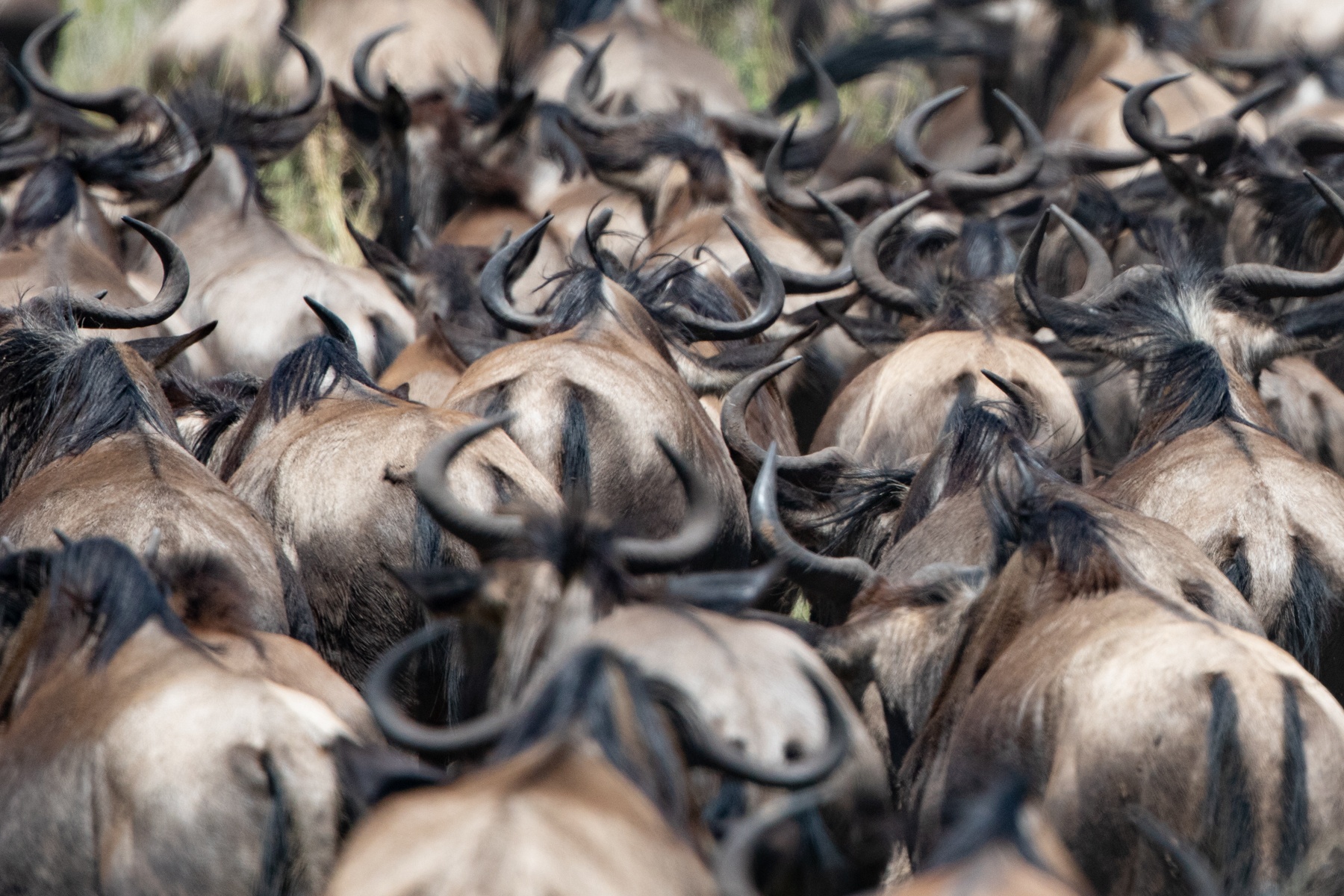
The backs of a wildebeest herd on migration in the Serengeti (image by Inger Vandyke)

Lappet-faced Vulture in flight over the Serengeti (image by Inger Vandyke)
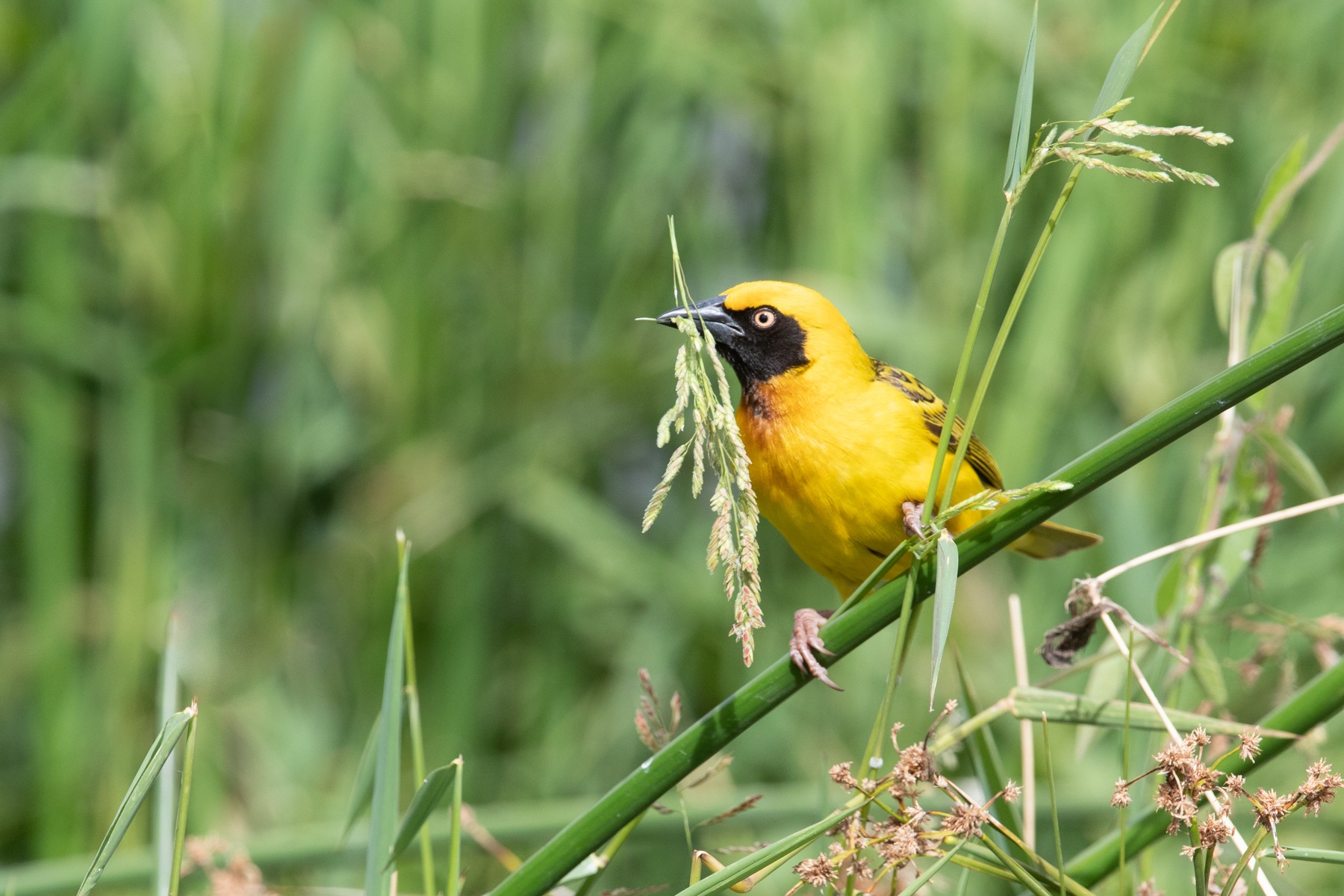
A Speke's Weaver clips off a grass flower to build its nest (image by Inger Vandyke)
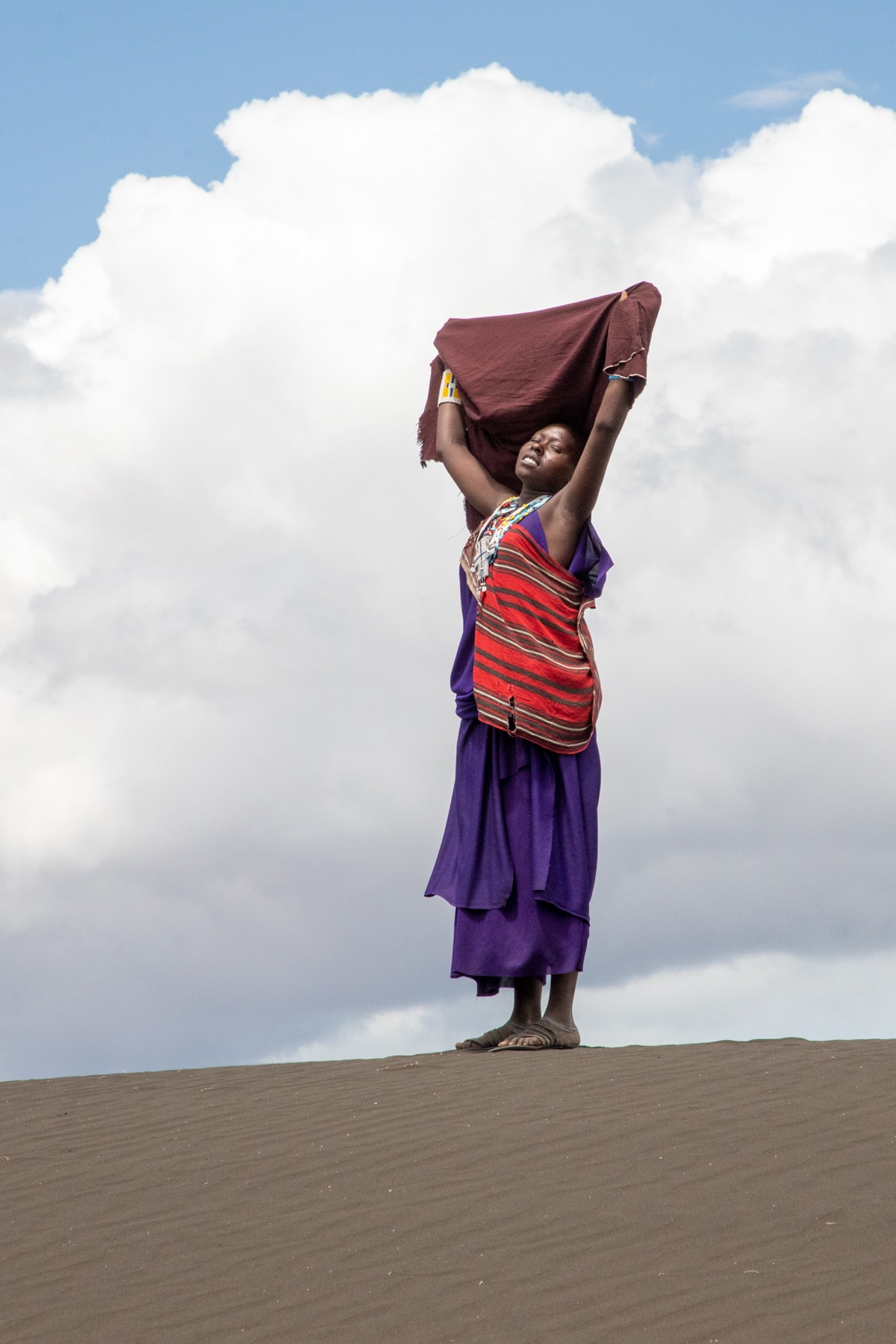
A beautiful Maasai girl embraces the sun on top of the Shifting Sand dune near Oldupai (image by Inger Vandyke)
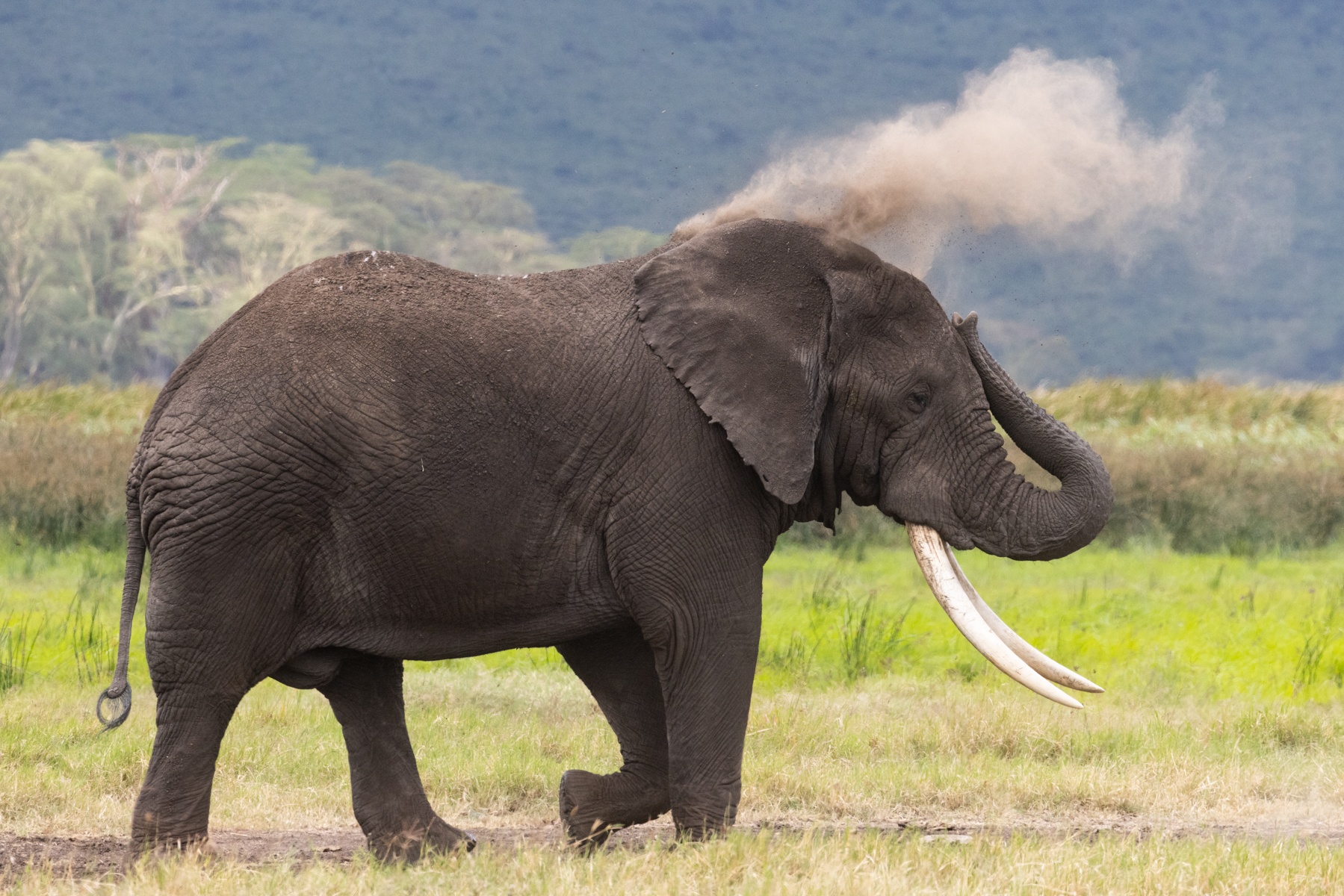
A large male elephant taking a dust bath in Ngorongoro (image by Inger Vandyke)
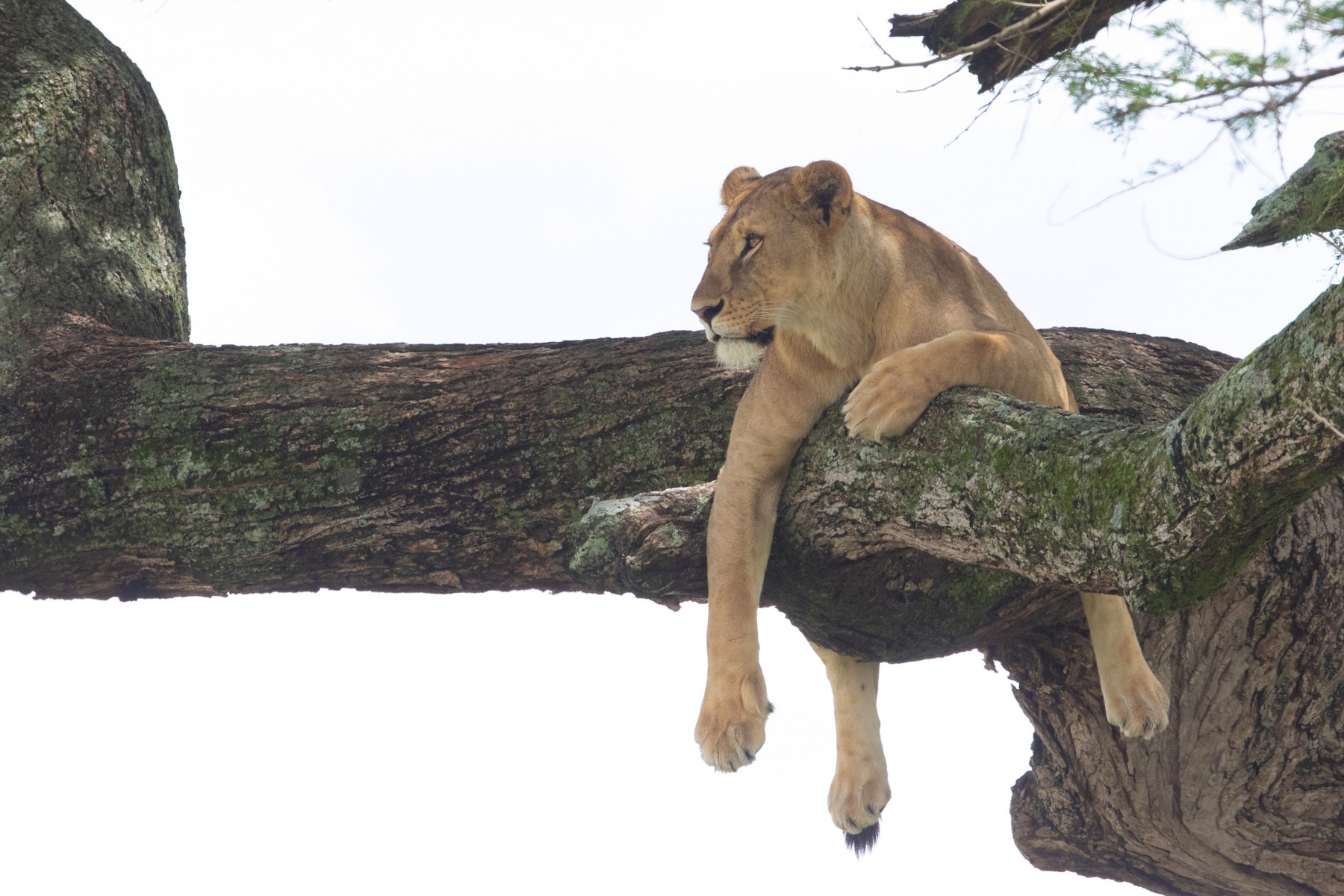
A stunning encounter with a beautiful lioness in a tree during one of our safaris in the Serengeti (image by Inger Vandyke)
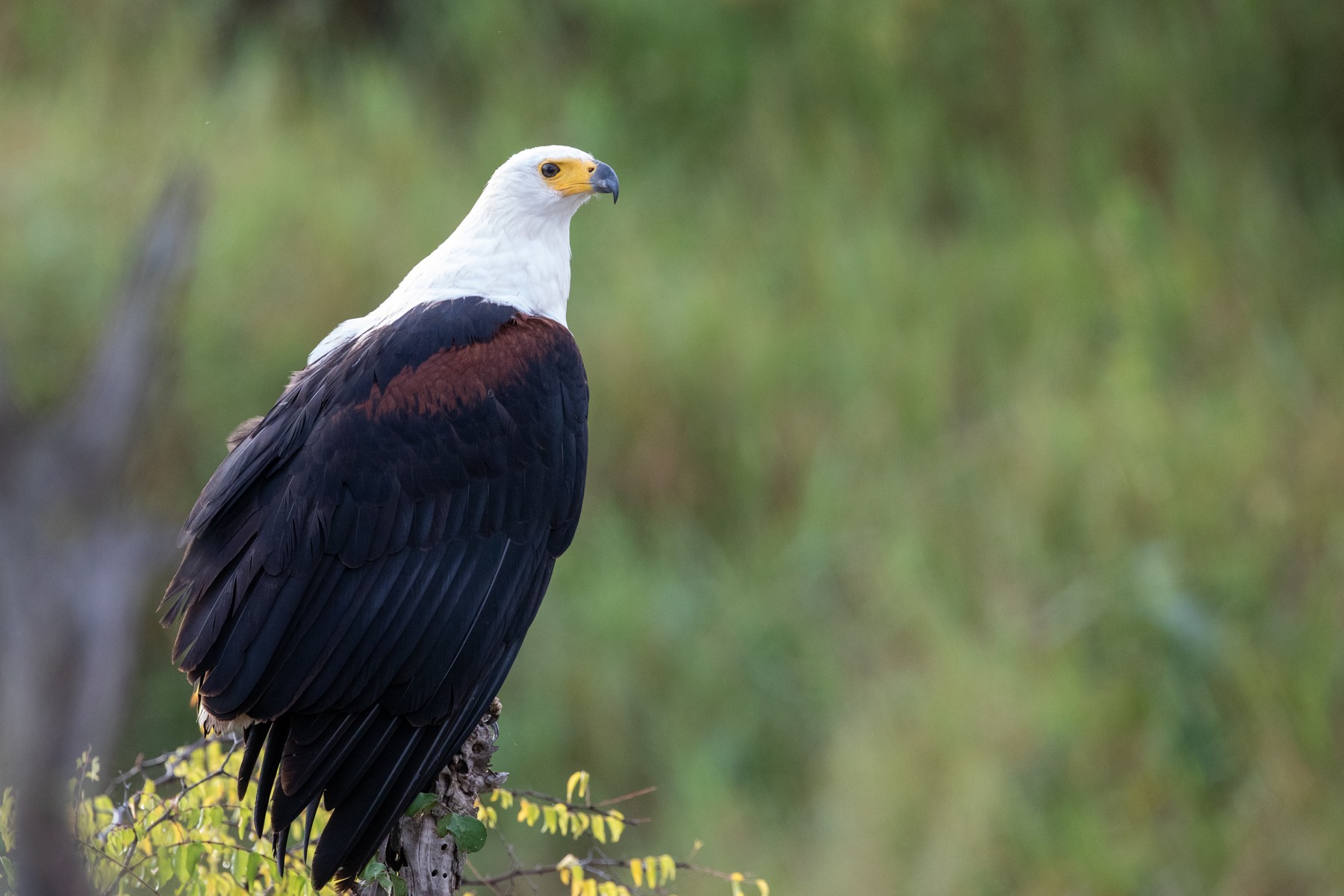
There is only one thing more beautiful than an African Fish Eagle and that is its cry (image by Inger Vandyke)
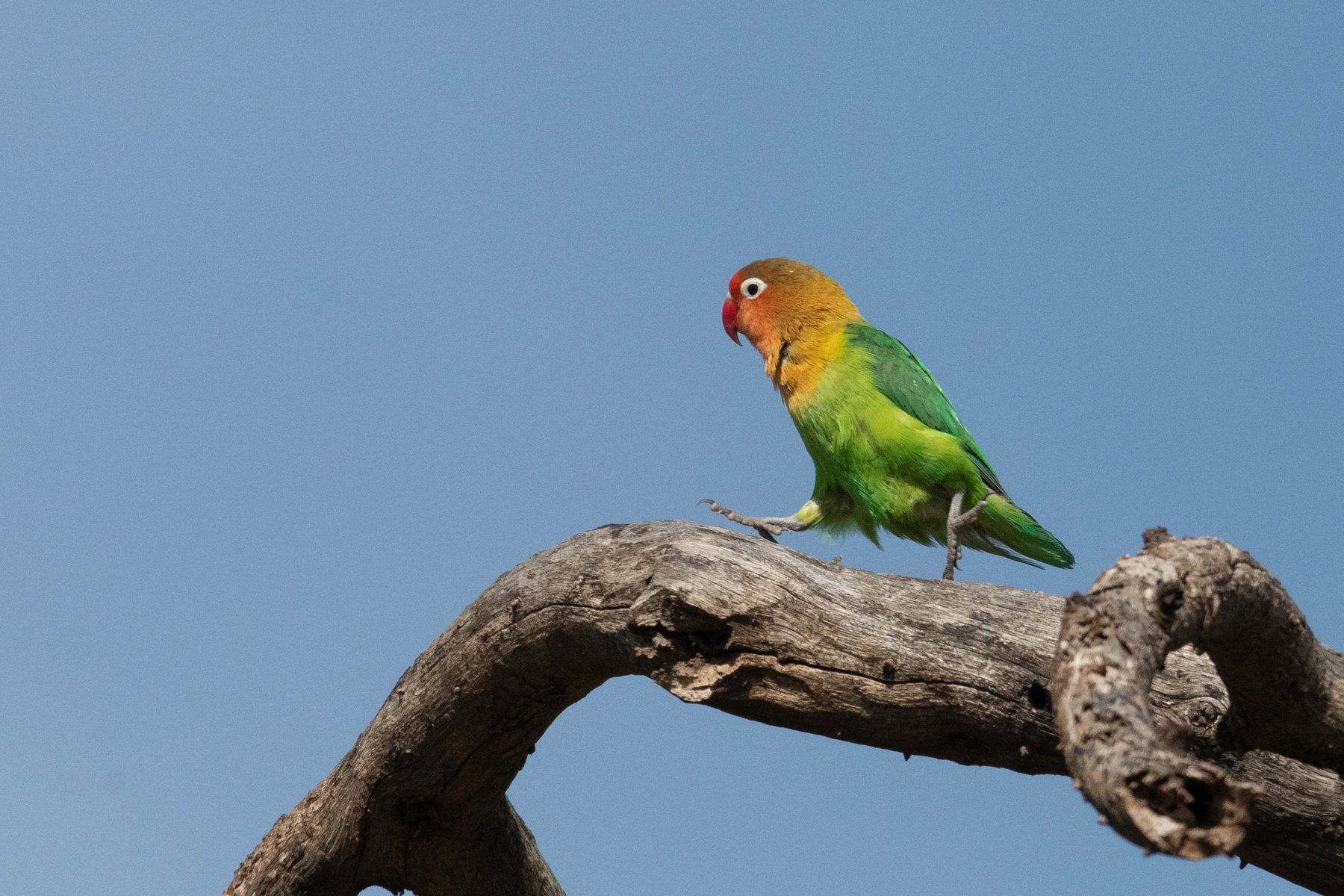
A Fischer's Lovebird runs along a dead branch in the Serengeti (image by Inger Vandyke)

Shy Spotted Thick-knees are easier to find than you think if you look carefully around the granite kopjes of the Serengeti (image by Inger Vandyke)

Cheetah love in the Serengeti (image by Inger Vandyke)
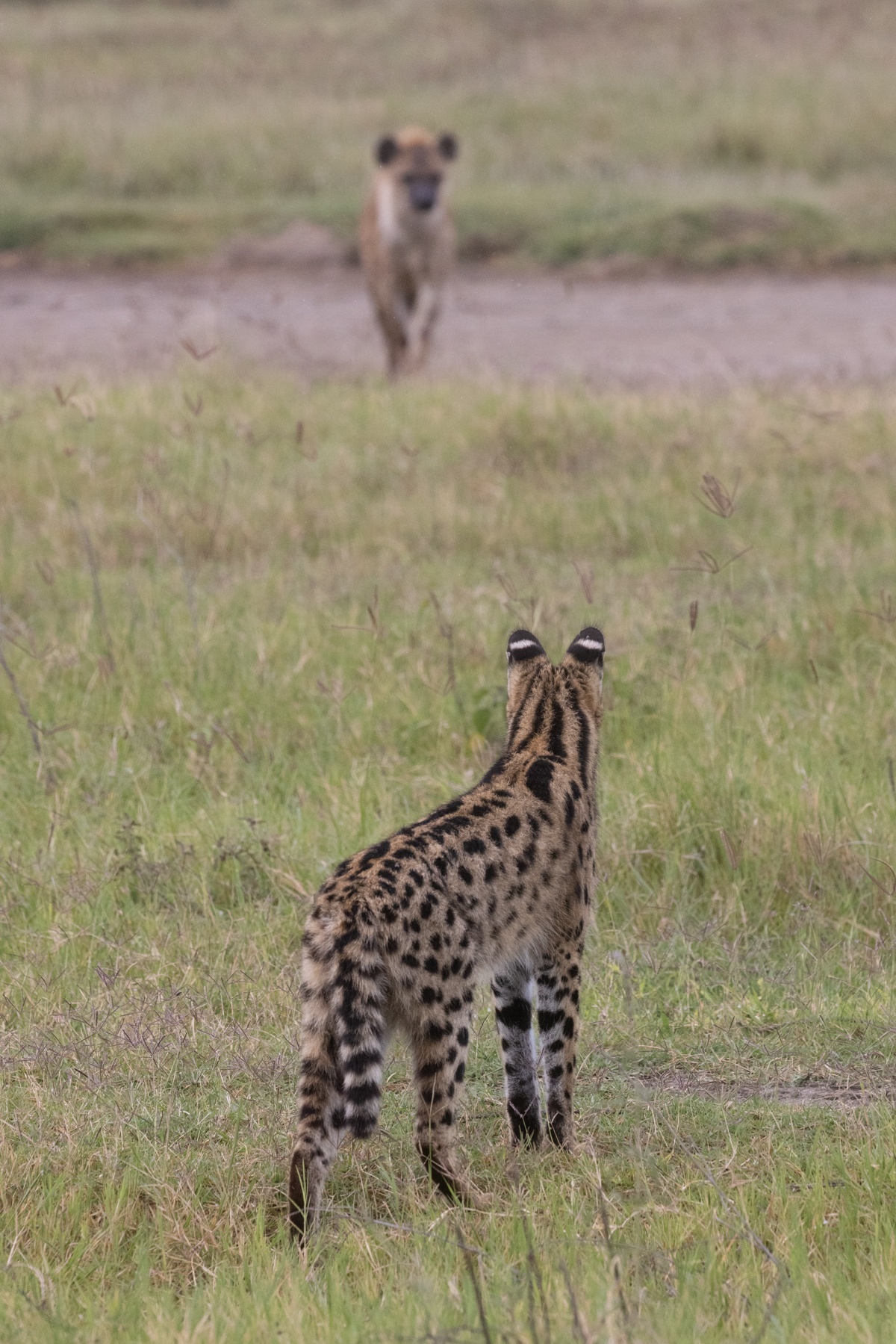
"I hate those hyenas!" Face-off between a Serval and Spotted Hyena in Ngorongoro (image by Inger Vandyke)
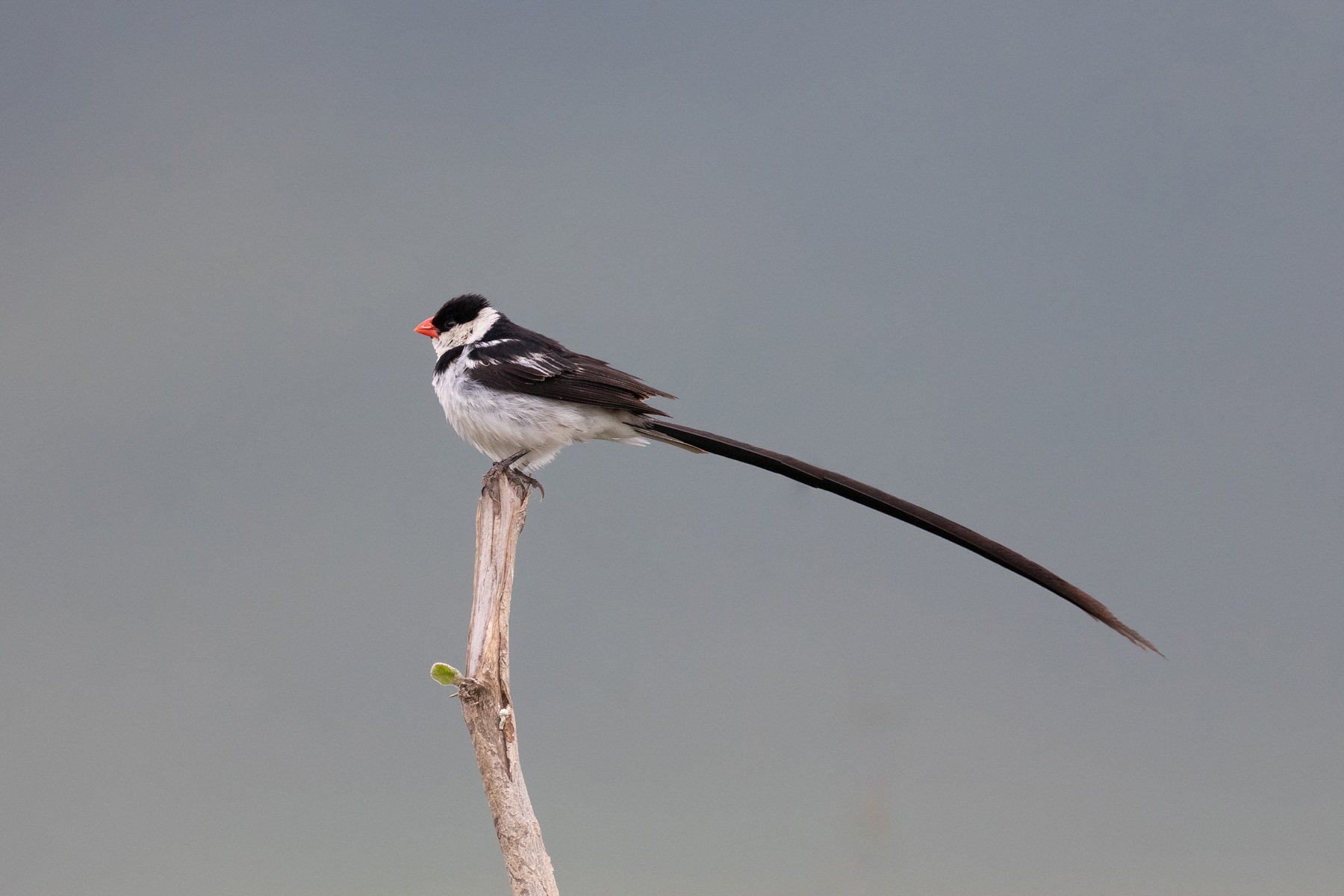
A male Pin-tailed Whydah in his breeding plumage glory (image by Inger Vandyke)
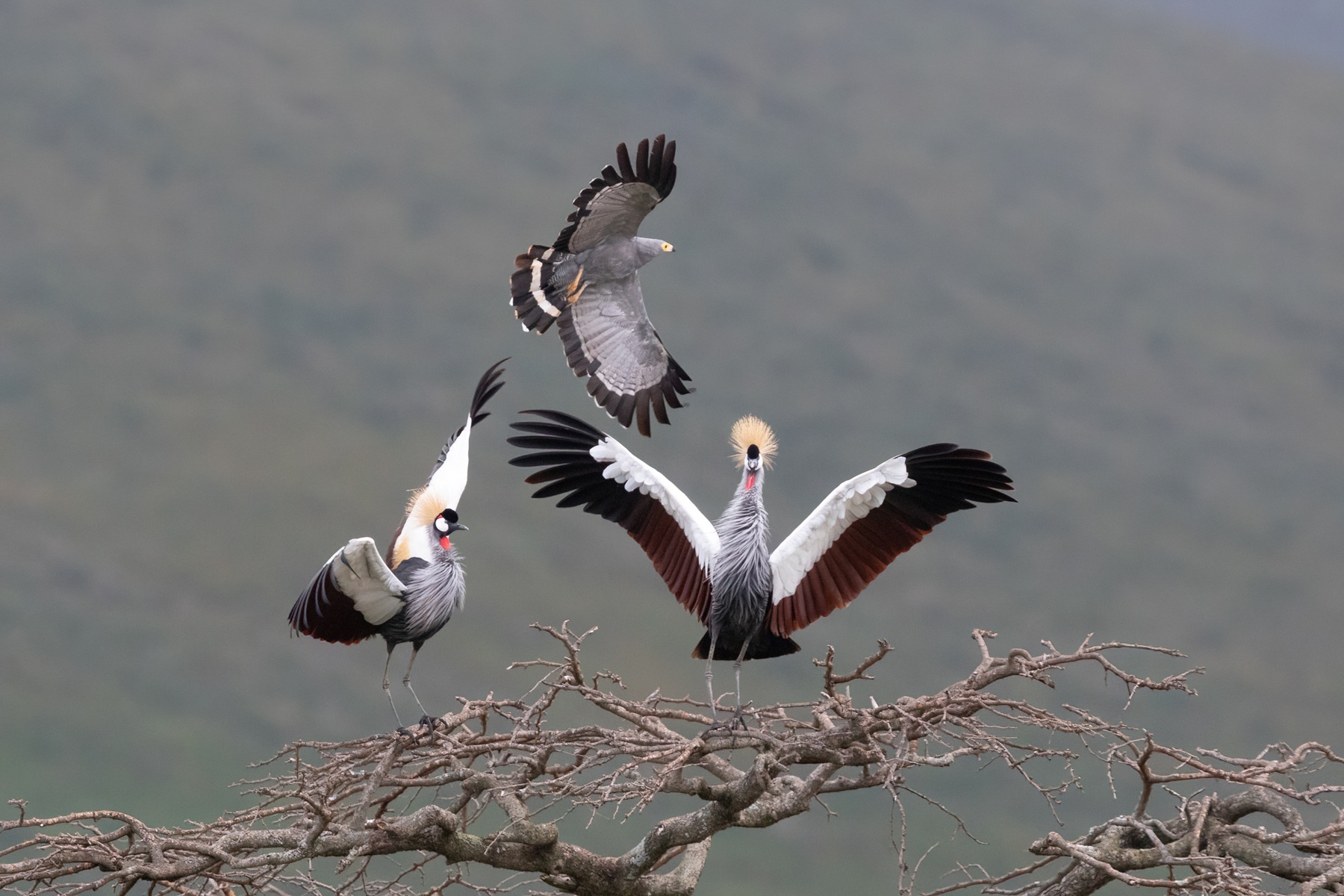
An African Harrier Hawk harrassing a pair of roosting Grey-crowned Cranes in Ngorongoro (image by Inger Vandyke)
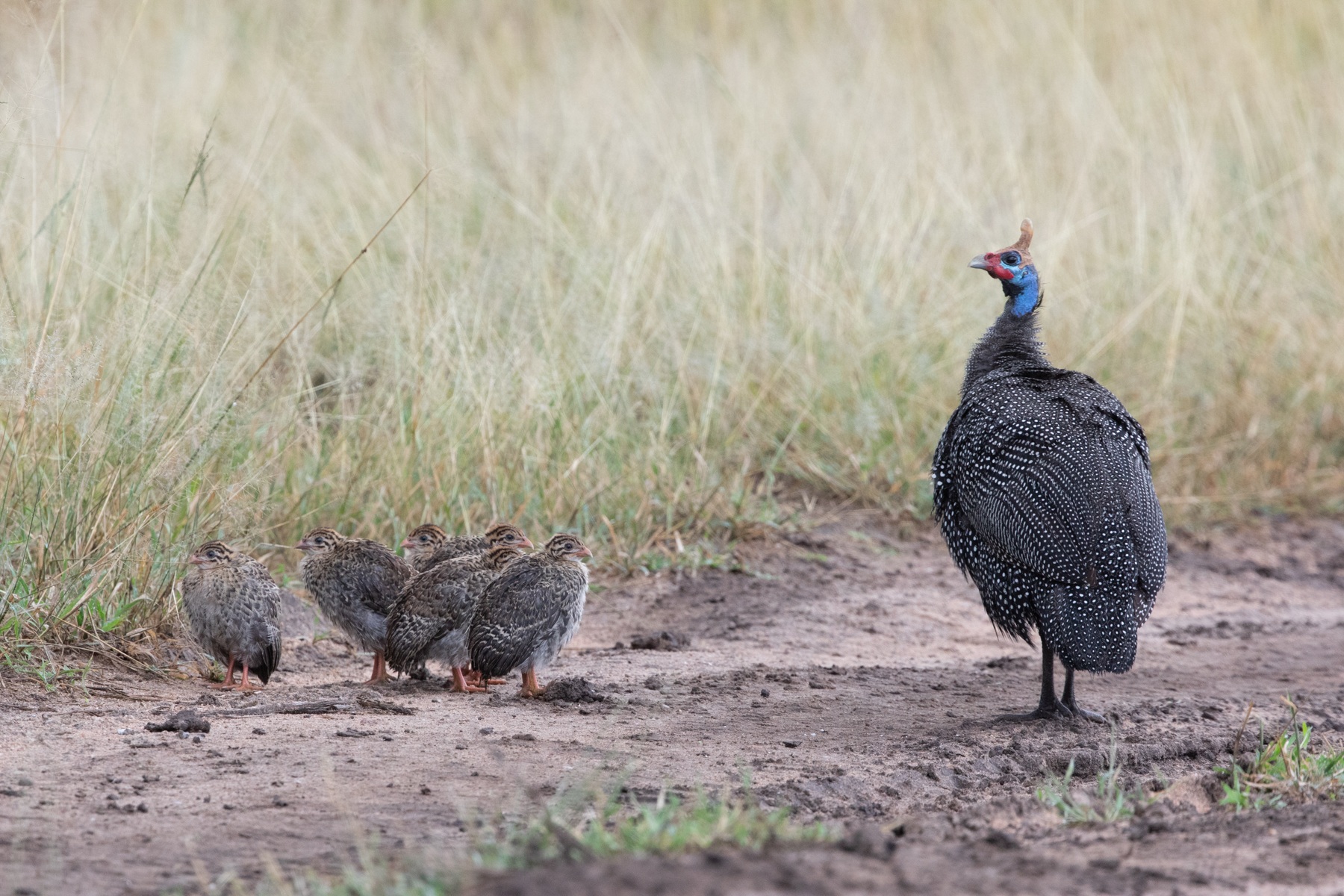
A group of Guineafowl chicks huddle near their mother in the Serengeti (image by Inger Vandyke)
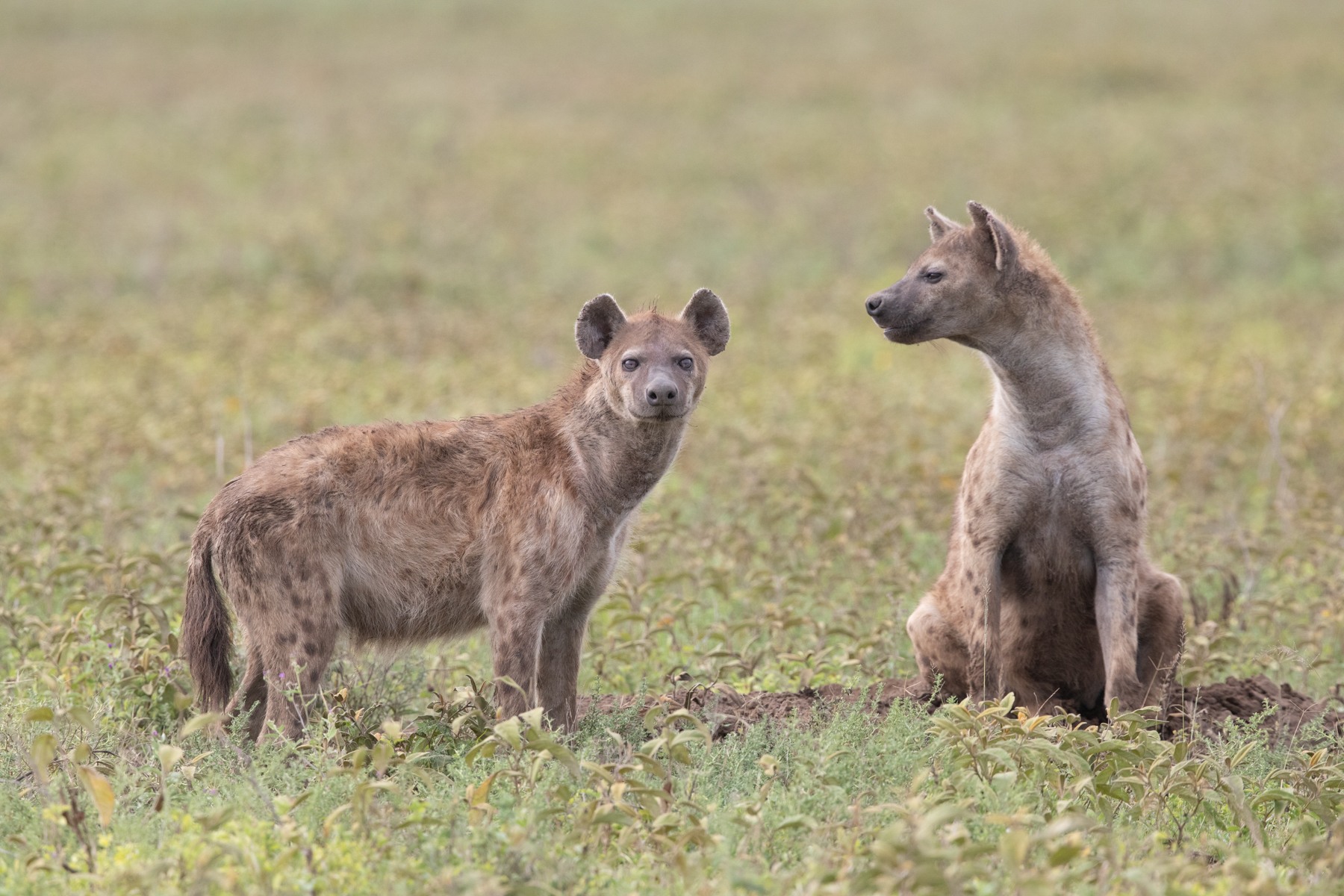
"Shall we go and try to steal someone's breakfast?" (image by Inger Vandyke)
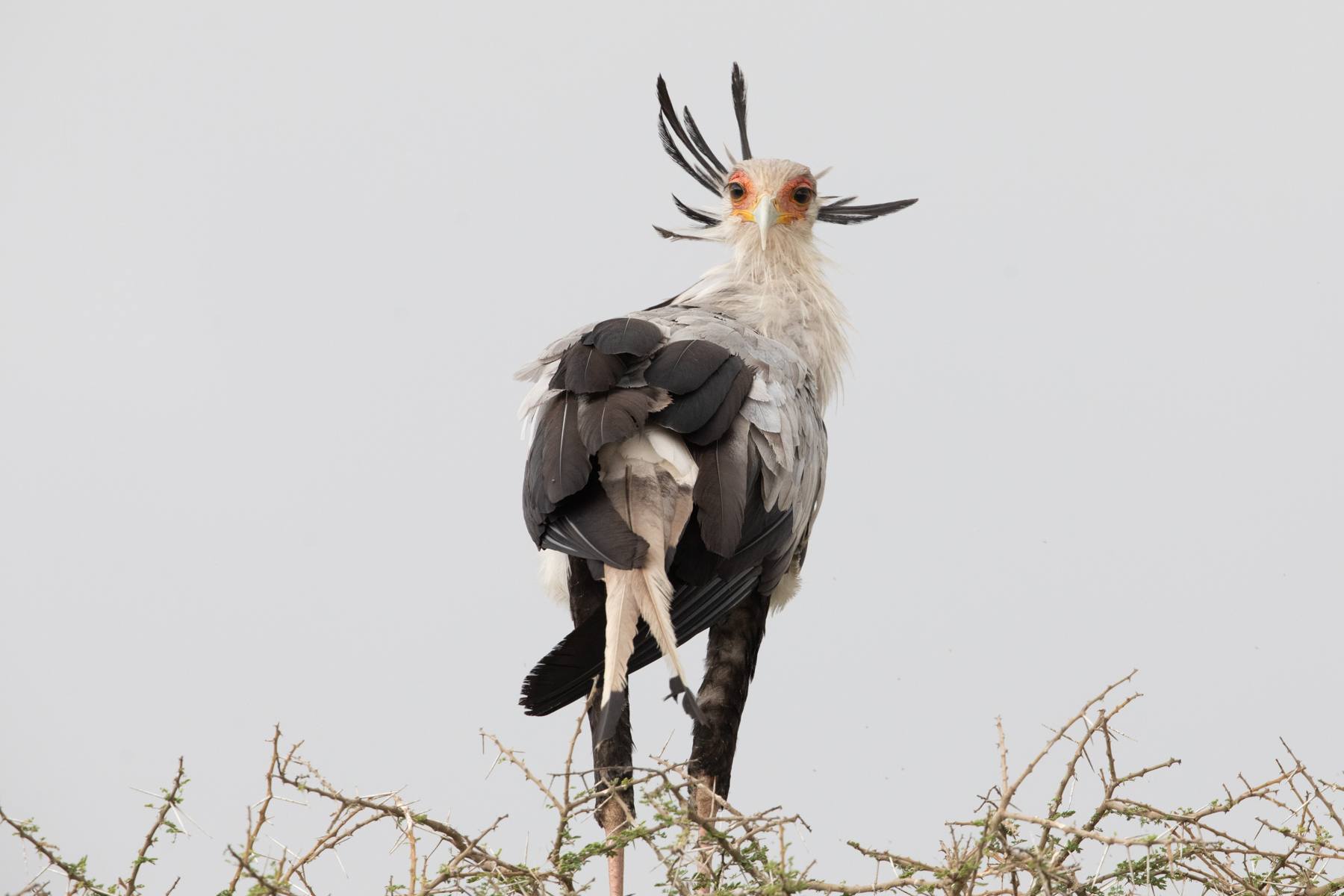
A Secretarybird takes a moment to stare at us in between preening (image by Inger Vandyke)
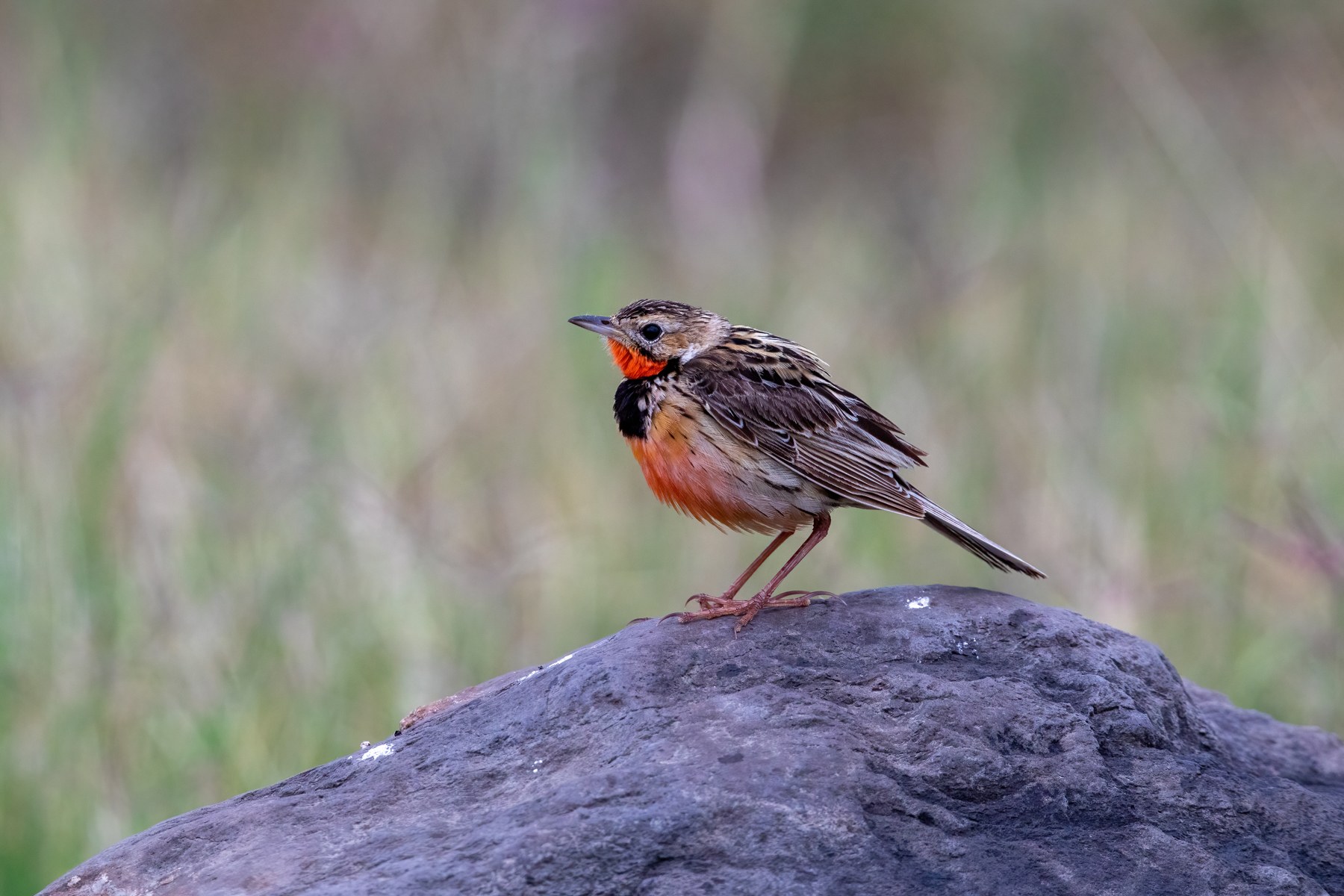
Pretty Rosy-throated Longclaws in Ngorongoro (image by Inger Vandyke)

A wonderful encounter with some extremely tiny lion cubs during our first safaris in Ngorongoro (image by Inger Vandyke)
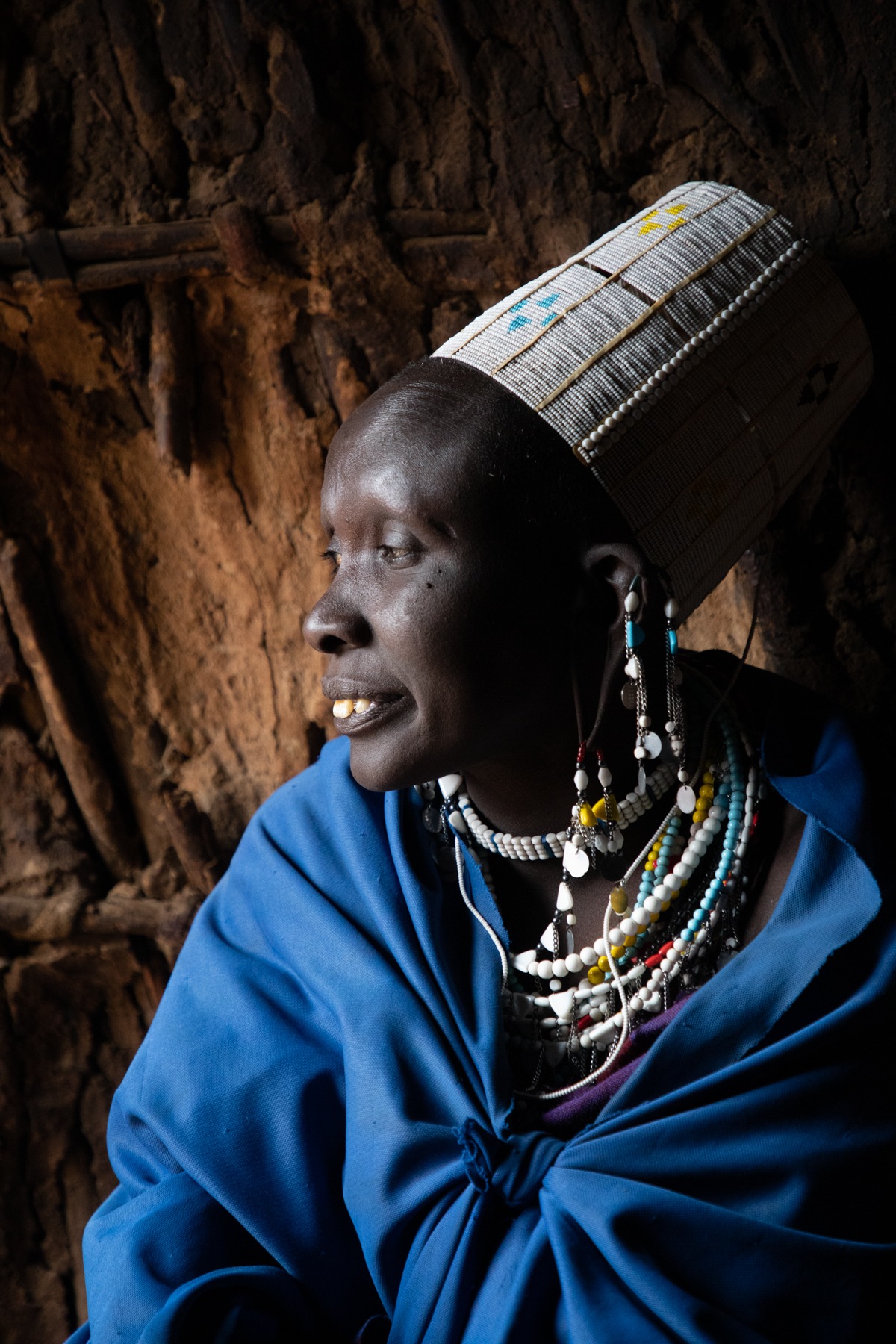
Portrait of a beautiful Maasai woman at the entrance to her home (image by Inger Vandyke)

An isolated storm washes over the Ngorongoro Crater (image by Inger Vandyke)
Of all the wildlife experiences you can have in our world, there is almost nothing that rivals doing a safari in Africa. To go on safari is a wondrous adventure filled with light, wildlife, colours, sounds and smells. This year’s Wild Images photo tour in beautiful Tanzania was the first one we’ve run there since the start of the pandemic and our group of photographers assembled in Arusha with so much enthusiasm at the start of the trip, the excitement in the air was palpable.
I had heard about a number of sightings our Birdquest trip had enjoyed just prior to the Wild Images tour and, as the leader of the trip, I held my breath and hoped that we would continue on from the success of the Birdquest tour.
I didn’t need to hope too hard. The following two weeks brought us encounters with herds on the annual migration, multiple incredible encounters with lions, leopards up trees, buffalos caked in mud, close encounters with roaming elephants, bats, chameleons, tortoises and even dung beetles. The stunning diversity of Tanzania also rewarded us with so many incredible bird encounters that towards the end, our guests struggled to pick a favourite situation from the tour.
MANYARA
Leaving Arusha, we travelled along a plain of flat country dotted with Maasai bomas, herds and shepherds. A few hours later we entered the pretty and small reserve that surrounded the flooded lake of Manyara. It was our first chance to test out our cameras and get comfortable with taking photos from our car. After checking in at the park gate we instantly encountered our first Blue Monkeys who entertained us by jumping around in the vines of the forest next to the road. We were amused to watch two youngsters play fighting on the forest floor while the older monkeys watched on from nearby. Other wildlife we spotted in Manyara included large troupes of Olive Baboons and Vervet Monkeys. We also saw our first Grey Crowned Cranes of the trip but sadly they were a bit obscured by long grasses growing close to the lake shore.
NGORONGORO CRATER
Leaving Manyara we drove up towards the crater rim and we stopped at the gate to have lunch. A troupe of baboons wandered around near to our car, eyeing off an opportunity for snatching lunch from an unwary guest. Thankfully we were all forewarned so our picnic lunches were guarded and nothing went missing through sticky-fingered baboons!
After completing the park formalities we drove up the side of the crater to the rim where we made a stop at the lookout over the entire crater. It quite literally took our breath away. Some of us had goosebumps. Others were pinching themselves that we were actually there. I looked into the crater for wildlife and I noticed a herd of African buffalos on the crater floor in between gaps in the fantastic isolated showers rushing over the crater floor. All of us were in awe.
We took some photos from the lookout and continued our journey around the crater rim. Since our trip takes place at the start of the rainy season, it was wonderful to see so many beautiful African birds in breeding plumage so our first target of the trip was the implying Jackson’s Widowbird. While we did see some widow birds jumping around and acting a bit crazy, sadly they were too far away for any decent photographs. Instead, we managed to capture some beautiful shots of displaying Malachite Sunbirds and Red-collared Widowbirds in the same area. It was remarkable to spend time on this high plateau abutting the crater. The undulating hills were home to Maasai bomas and Maasai cattle herds. To our amusement, the first zebras we saw on the trip were actually grazing in the pastures close to Maasai cows!
Since it was our first chance to meet any Maasai, we stopped to meet a young lady called Elisha who we saw standing on the side of the road. She was holding an intricately decorated calabash that she had been using to carry milk. It was our first introduction to simple Maasai words like “Tokoinye”, the Maasai word used to say hello to Maasai women and”Tsuvai” or the word for “Hello” spoken with Maasai men.
As the sun went down we checked into our stunning lodge where all of our rooms had spectacular views over Ngorongoro crater. I jokingly said that anyone who complained about the view from the rooms would be fed to the lions the following day. We were all speechless about our views and our first dinner was introduced by a traditional Maasai dance while we watched the last rays of light dance over one of Africa’s finest wilderness areas. What an incredible introduction to one of Africa’s most famous wilderness areas!
I went to bed and could barely sleep about what the next few days might bring.
When you work as a guide in safari Africa, you always hope that you can show your clients some amazing things and for me this trip was no different. I had a mental checklist that included seeing elephants, lions, zebras, buffalo and wildebeest.
What I didn’t realise was that our first day in the crater would actually tick off every single box on my guests’ wish list with perhaps only one exception. We didn’t see a lion hunt!
We all enjoyed the most stunning series of encounters including displaying Grey Crowned Cranes, lions on a kill, elephants dust bathing, a wandering hippo, a distant black rhino, large herds of buffalo and zebras, a hunting Serval and a pass-by of two large bull elephants who came so close to our car that you could almost touch them.
After an action-packed morning of seeing our first rhino, a pride of lions on a distant kill, displaying Grey-crowned cranes and even fighting zebras we stopped for a boxed breakfast at a fabulous waterhole where we could get out and walk around on foot right next to spying hippos in the water. While we did we were joined by numerous Speke’s weavers who actually flew into our car and raided it for treats! We also saw a troupe of Vervet monkeys and many lovely birds including African White Pelicans, Pied Kingfishers, Rufous-tailed Weavers, Augur Buzzards and Cattle Egrets. The myriad of flying birds around that waterhole gave us a great chance to practice our birds-in-flight shots as we tried to capture images of weavers carrying long strands of grass to build their nests in a large tree nearby. As we packed up the car to go back out on safari we noticed a hippo wandering on its own out on land so we went over to take a look at it. I think it got a little startled as it mock charged us but decided quickly against it and went off to continue grazing.
Leaving the waterhole after breakfast we passed by a lovely flock of Cattle Egrets roosting by the water’s edge. As we drove out we saw a couple of large male elephants so we decided to drive over to see them and just as we arrived, one of them began to dust bathe. Seeing elephants do this is always fantastic for photography so we stayed with them for as long as they showered dust over themselves before driving further into the crater.
Seeing herds of mammals in the distance we decided to drive towards them and found a flock of Jackson’s Widowbirds but again, none of them were close enough to photograph well which was a shame.
It was there that we began to see the large herds of wildebeest, zebras and buffalos that the crater is famous for. While slowly driving through these magical congregations of animals taking photos, we came across a Warthog family who were all taking turns to scratch themselves on a low rock which had obviously been a scratching rock for many warthogs in the past.
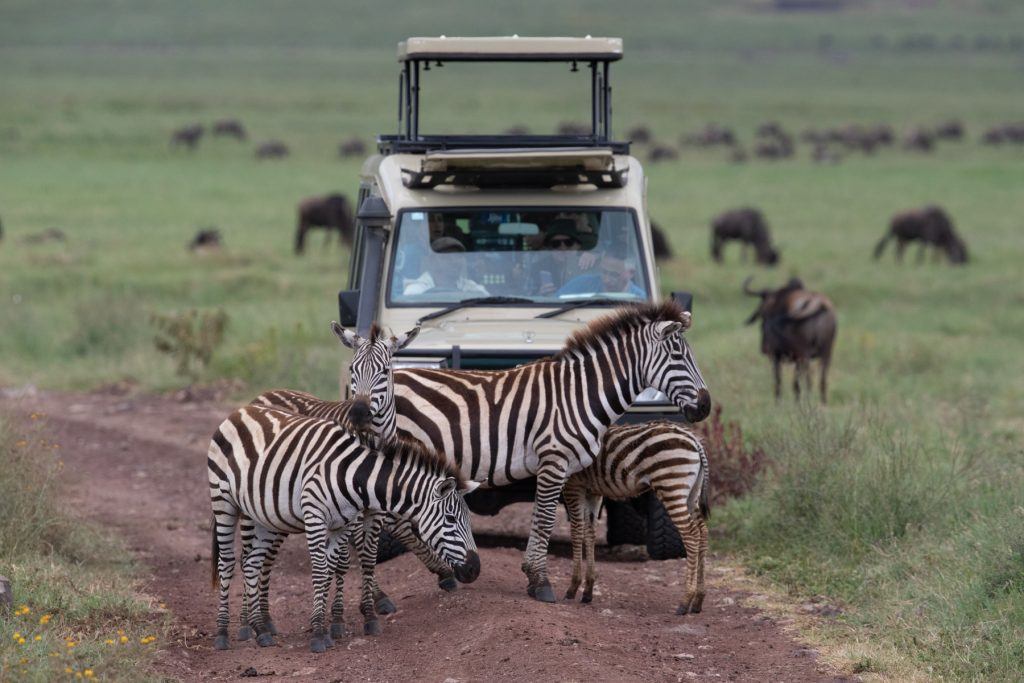
Just your typical traffic jam on safari in Ngorongoro (image by Inger Vandyke)
We also began to see quite a lot of adorable baby zebras, baby buffalos and also baby wildebeest, for the rainy season is always a time of abundance and breeding in Africa.
Driving up to a beautiful large tree we saw a beautiful Augur Buzzard roosting against a lovely backdrop of leaves.
We then drove around to the river where we found a pride of 5 lionesses with 4 cubs, all enjoying the warmth of the midday sun. Deciding to have lunch in the car, we drove away from the lions, only to find a hunting serval in the grasslands nearby. It seemed to be hunting for small rodents until one of us saw what it was having for lunch – a snake! We stayed with the serval until it decided to crouch out of sight to enjoy a post-snake siesta so we drove back to the lions, only to find that one lioness had some extremely little cubs and as we stayed with them we watched her feeding them milk and even carrying one in her mouth! As a seasoned safari guide, I was stunned to see this so out in the open. Normally lionesses will hide such tiny cubs in long grasses to keep them safe so what a tremendous blessing it was to watch all of this out in the open. She occasionally had to protect them from larger cubs that wanted to play with their tiny siblings. Just occasionally she would get up and growl at the older, more boisterous cubs who played a bit rough with the little ones. The whole scene was a bit overwhelming and we all found it hard to leave this pride but our time was running out in the crater and we still had so much to see.
Driving towards one of the main exit points we then found two male elephants play fighting in a field of wild grasses. We all got great shots of them wrapping their trunks around each other and tussling in the fight so we stayed with them until the novelty seemed to wear off.
Further around the crater floor we found two other elephants grazing in the most beautiful light so we stopped to watch them also, only to have one of them approach our car and pass by the back of us so close you could almost feel their breath on our faces. What a magical thing to see an elephant that was so unconcerned by our presence!
I watched the clock. Sensing that we were running out of time we had to go a little faster to make it out of the crater before the gates closed. En-route we saw a Kori Bustard companion hunting with a Honey Badger, an Anteater Chat doing a courtship display flight and flamingos in the lake.
Even on our way out of the crater the first day one of my guests spoke out from the back of the car “Well I guess the only thing that was missing was an African Buffalo covered in mud in a pool” and more or less as soon as we said it, we turned a corner and found an elderly buffalo doing exactly that!
It was an absolutely magical introduction to Ngorongoro and, speechless, we all sat in the restaurant trying to digest everything we saw over a cold beer. We all struggled to work out what the highlights were and I quickly realized then that if I didn’t note down as many sightings as I could that I wouldn’t be able to remember them all. We just saw so much.
It’s a rare and wonderful dilemma to have a day like that on safari. I found myself wondering what else I could show people. Therein lies the joy and wonder of safari Africa though – you just never know what lies around the corner.
On our following day we descended into the crater while it was still dark. In the gloom we actually saw a black morph of a Slender Mongoose run across the road but he was too fast and there was no light to photograph him so we kept on going with our descent. At the canyon floor we found a small herd of elephants grazing on young acacia trees but again, the light wasn’t quite good enough for photos so we continued out onto the plain where we saw African Buffalos grazing alongside cattle egrets, displaying Grey-crowned Cranes, our first White-collared Ravens, many running Wildebeest and even a Common Quail on the side of the road. We went over to check out the lion kill from the previous day but the lions had stepped back to sleep and left the remains of their kill to the hyenas. We revisited the same flock of Jackson’s Widowbirds and managed to get a few slightly better images than the day before.
Driving further into the crater again we found two fantastic old African Buffalo males sitting in a mud pool to keep themselves protected from the sun and flies. Just as we approached them really slowly one got up and looked straight at us while he was all covered in mud and he was just fantastic to photograph!!!
We decided to go and check on the lioness with her cubs we’d seen the previous day but as I suspected she had taken them into the long grasses for cover. As we searched for them we saw two pretty Grey-crowned Cranes roosting in the trees with the mist covered crater walls in the background. Thinking it was a pretty subject for photography we drove over to them and just as we approached an African Harrier Hawk flew over the cranes, buzzing and disturbing them. Awesome!
The beautiful thing about being in Tanzania at the start of the monsoon is that you see so many wonderful birds in breeding plumage and lots of fantastic behavior which makes for wonderful photos. We found displaying Black-Bellied and Kori Bustards, Pin-tailed Whydahs with their stunning streamer-like tails flying around and many sunbirds in breeding plumage. We managed to capture some beautiful images of Grey-crowned Cranes that were so close we got some great portraits of these stunning birds. I started to wonder if the real magic of this safari was going to be in all the birds we managed to see and photograph, but the extraordinary mammal sightings continued throughout the tour. After stopping at a beautiful lookout over the crater we drove down to the lake where we continued to see many beautiful birds, a hyena wandering through the water and also a sleeping hippo with a Glossy Ibis roosting on its back.
Breakfast today for us was in a grove of Fever Trees at the base of the crater and while we ate we were joined by weavers and other birds plus an unidentified mouse that took advantage of the odd dropped crumb. I decided we should explore the crater floor near this side today and as we drove out we went through a herd of Wildebeest that had some really little babies. Some of these youngsters were only a couple of days old so it was lovely to watch them trying to stay upright on their gangly legs. We also saw Zebras getting clouded by the dust of passing roadworks trucks and then, as we drove back to the lake we saw flamingos, pretty Double-banded Plovers amongst other birds and we watched a Hyena wander through the shallows, no doubt in search of bird eggs or baby birds to eat.
Since the breakfast spot was so good from the previous day we drove back in that general direction for lunch. On the way we found another hunting serval, we made a stop to practice motion blur photography on herds of Thompson Gazelles and we found several stunning Red Bishops in breeding plumage. We heard about a Caracal so we went over to check it out but all we saw was some very disturbed Grey-crowed Cranes flying around over the place it was supposed to be. We waited for the Caracal but it must have gone to ground before any of us could see it so we went over to enjoy some lunch by the pool while watching hippos yawning right in front of us and enjoying our first view of Yellow-billed Stork. As we stopped we got caught in a rain shower and we saw a very tame Side-striped Jackal wandering through the picnic site who was easily approached for photos, maybe because he’d been fed tidbits from previous visitors?
Needless to say we never fed him. We didn’t need to. He was curious enough to approach us very closely anyway.
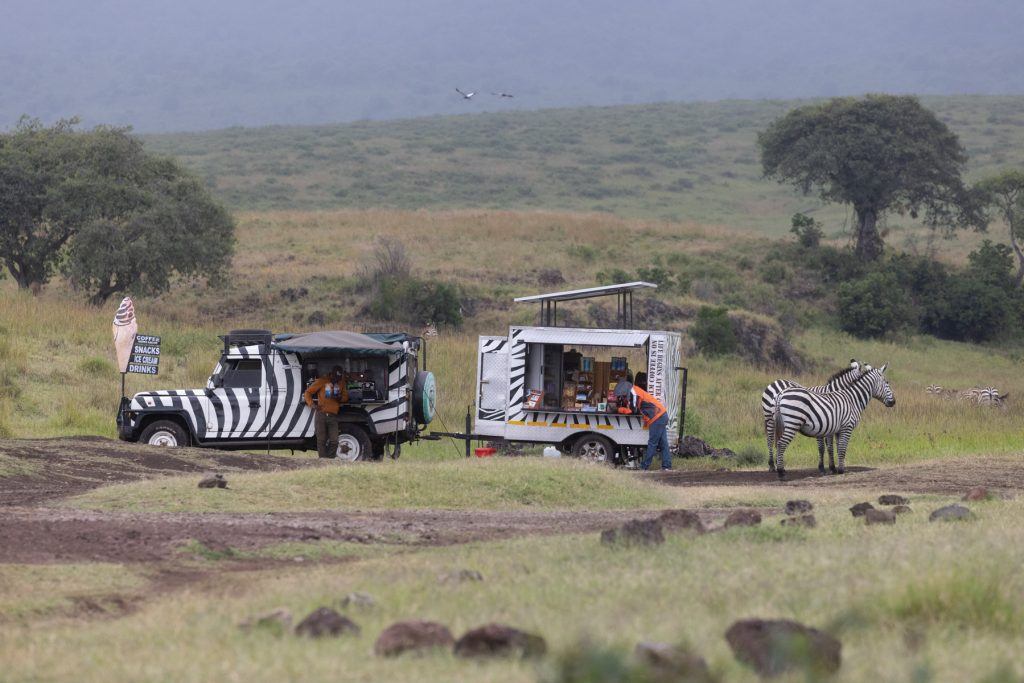
Zebras with your cappucino anyone? Only Zebras know where to get the best coffee! (image by Inger Vandyke)
After lunch we went to check the Caracal spot to see if we could find it but we couldn’t so we continued driving slowly next to the lake where we would enjoy a further THREE sightings of Servals! Astonished to see four Servals in one day our last one was particularly funny as we watched one of these beautiful cats face off with an approaching Spotted Hyena!
The hardest thing about being in Ngorongoro is actually leaving Ngorongoro and getting out before the gate closes. It is always so hard to leave! Today was no different and as we drove through the forest we were treated to a ‘raptor fest’ with sightings of Long-crested Snake Eagle and Bateleur along with several vulture species. Our parting sightings for our second day were troupes of baboons and vervet monkeys before our drive out of the canyon.
Enjoying three days in Ngorongoro really gives you a chance to ‘clean up’ with sightings in Ngorongoro and our third day produced some wonderful encounters even if our drive down in the rain left some of us feeling crest-fallen. We found an early herd of Waterbuck on the crater floor but as we drove out onto the plain our wonderful bird sightings continued with Augur Buzzards, Rosy-throated Longclaws and a male Kori Bustard displaying really close to our car!
We found a wonderful solo Black Rhino who gave us better chances for photos than the rhino we found on the first day and we also photographed some really close Yellow-billed Oxpeckers that had decided to roost on a roadside drum that was acting as a road sign. Driving over to the lovely pool we liked for breakfast we came across a displaying Black-bellied bustard and also two Saddle-billed Storks fishing for frogs in a pool. We saw our first Knob-billed Duck and watched a Grey Heron ride on the backs of the hippos at the breakfast spot.
Post breakfast we went to practice some zoom and motion blurs with the dazzles of zebras we’d seen on previous days and we enjoyed sightings of Red-billed Oxpeckers on buffalos, more elephants in fields of yellow flowers and as we approached the river where we had seen the lionesses with cubs we spotted a large male lion on the other side. Althought we drove over to see if we could get closer to him, the road didn’t allow for us to do it so we continued.
We went back to the hippo pool for lunch and a leg stretch. After lunch we stopped when we saw a pair of lions mating. Afterwards we stopped to watch some Ostriches doing a courtship display on the way back down to the lake and when we arrived at the lake we found some beautiful Grey-headed gulls in breeding plumage.
Since the forests at the bottom of the crater were so beautiful we decided to spend time there looking for more wildlife as the afternoon light got more beautiful. In doing so we found another Serval! Our sixth one for the trip!
Avian highlights of the forest included Grosbeak Weaver, Bateleur, Long-crested Serpent Eagle, several vultures and our first Hildebrandt’s starlings of the trip.
We also found a small group of Vervet Monkeys grazing on the acacias before our final ascent of the crater where we were farewelled by four White-necked Ravens swooping over our heads and flying into the crater.
What an incredible few days of photography. I think at this point some of us were starting to wonder if we would run out of memory cards we’d seen so much. Our last night at dinner saw the staff of our hotel joining us to sing our farewell from Ngorongoro. It made it so hard for us to leave!!!!
WILD HONEY AND WARM SMILES
To reach the famous Serengeti region of Tanzania, you must depart the edge of Ngorongoro crater and drive through many Maasai bomas to get there. We left early and, after making a stop at a lookout to get our last glimpses of the crater we visited a rather touristy Maasai Boma where we managed to see some of the famous Maasai dancing where men leap high into the air. We also managed some lovely portraits of Maasai women in their homes and we visited a local Maasai school to make a small donation. This was a lovely area and we made numerous stops to photograph Maasai bomas (villages) in the mist while meeting young Maasai kids either on their way to school or herding livestock.
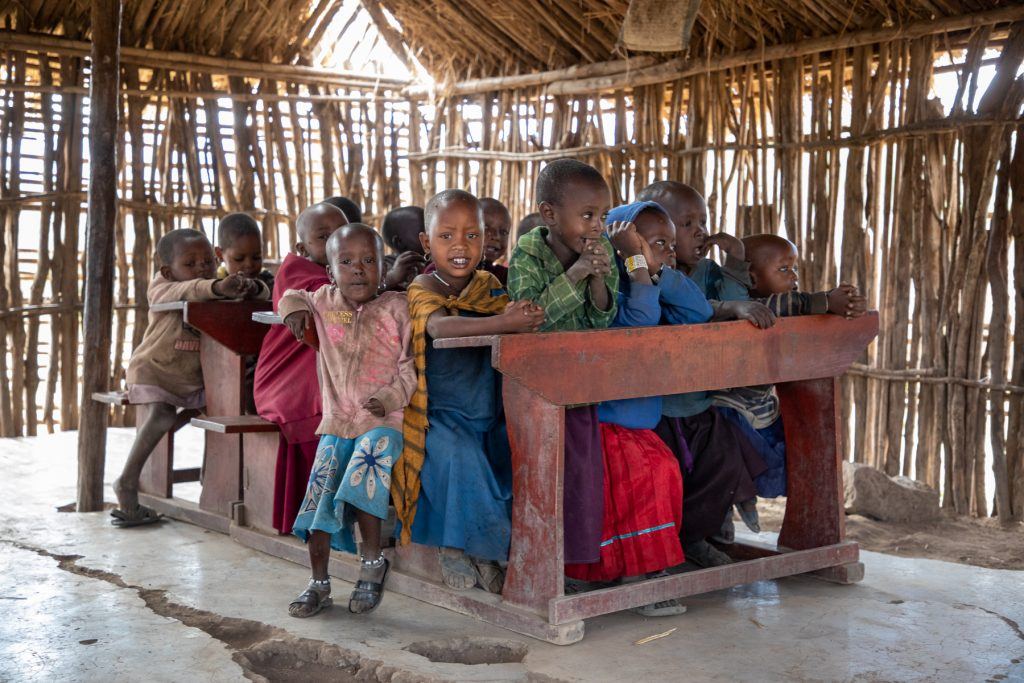
Visting a local school for Maasai children near Ngorongoro (image by Inger Vandyke)
It was a lovely, warm introduction to the Maasai people in this area. Their smiles certainly lingered with all of us long after we left.
On this day, our transit day to the Serengeti we saw our first giraffes of the trip which was very exciting for the people with me who were enjoying their first ever tour to safari Africa. Even for someone who has seen thousands of giraffes, your first sight of them wandering on the plains is always wonderful. We also saw another African Harrier Hawk along with our first D’Arnaud’s Barbets of the trip.
We drove on towards the famous Oldupai Gorge, the site of Richard Leakey’s most famous excavations of the world’s early hominids and I made us stop when I saw some Maasai women selling wild honey on the side of the road so I bought some for our group and in the end this turned out to be such a popular addition to our breakfast yoghurts that we stopped to buy some more later in the trip!
At Oldupai we took a small tour of the excavation site and museum before driving out to the curious ‘shifting sands’ – a dune that makes its way each year along a grassy plain and which few can explain. We stopped to photograph beetles on the dune and also a beautiful young Maasai woman before we finally left to drive out to the gates of the Serengeti.
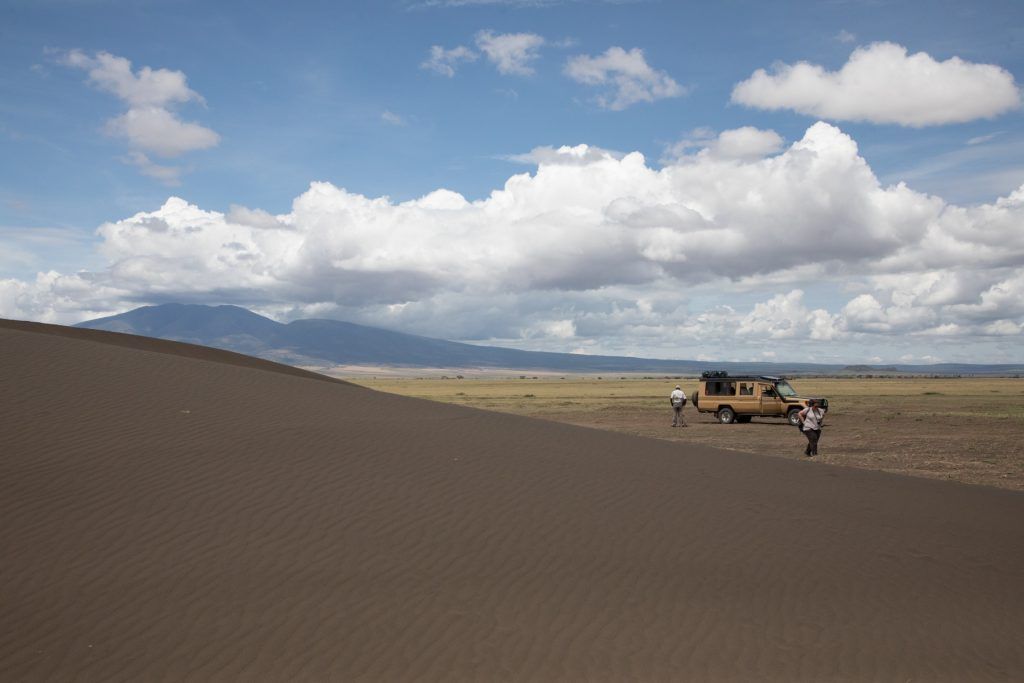
Stopping at the mysterious Shifting Sand dune near Oldupai Gorge in Tanzania (image by Inger Vandyke)
SERENGETI
Arriving at the gate, we stopped at a vulture dinner and also when we saw a single wildebeest baby which made us all wonder where its mother was. Such a tiny baby could be in great trouble on its own in a place with so many predators. Since we never found its mother we drove on to a site for lunch, just outside the gate of the park.
Our first afternoon in the magnificent Serengeti also overwhelmed us with sightings as we found another hunting Serval, two Honey Badgers crossing the road, our first young Hyena and cheetahs! We drove out around the Kopjes instead of going straight to the lodge and this was a wonderful decision as we saw some great birds here including Lappet-faced Vultures on a nest, Greater Kestrel, Spotted Eagle Owls, Tawny Eagles, Secretarybirds, Black-chested Snake Eagle, Yellow-throated Sandgrouse and Purple Roller.
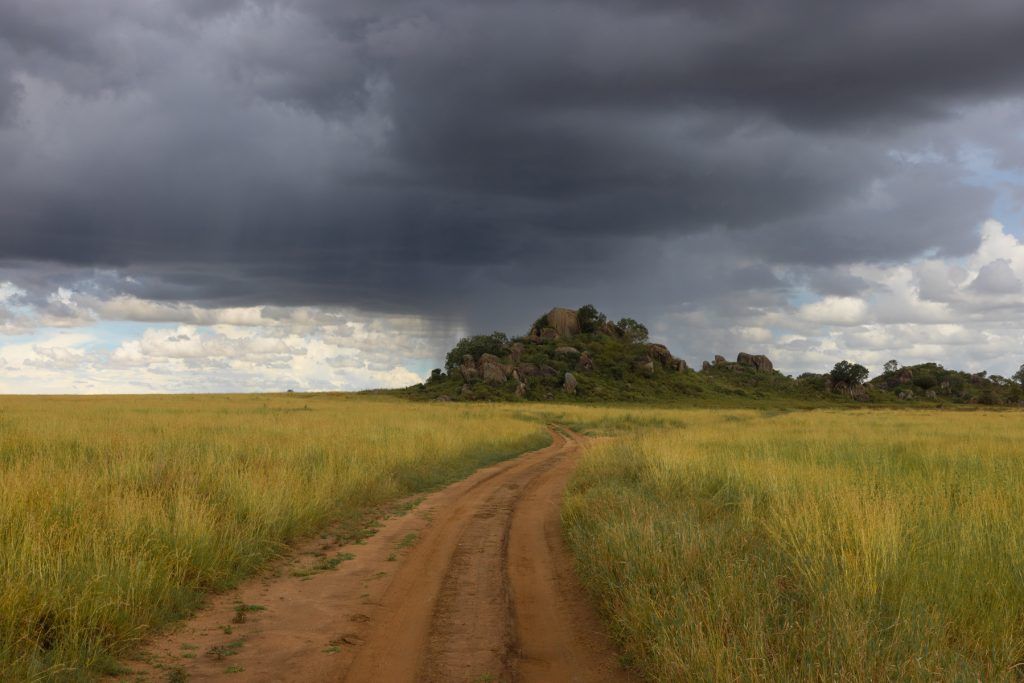
Fantastic storm skies over the kopjes of the Serengeti (image by Inger Vandyke)
We also saw our first Rock Agamas and Rock Hyraxes on the kopjes that afternoon.
As the afternoon wore on so did the rain but this made for nice photos of a Banded Mongoose group on a mound, the two cheetah brothers we met and a small pride of eight lions. Rained on birds included displaying White-bellied Bustards and also a flock of Guineafowl with tiny chicks.
The light started to fade quickly but we managed to see some hippos in a pool, our first impalas of the tour, a Verreaux’s Eagle Owl and our first night Scrub Hare.
Arriving at the lodge we were all a bit exhausted after such a long day so we enjoyed our first Serengeti dinner as quickly as possible ahead of our full day on safari the next day in the Serengeti.
The following morning we left in the dark in order to enjoy our first day in Serengeti in the finest light. On the way out we saw another Scrub Hare in the dark and a Plain Nightjar. Through some great fortune we found out that the migration herds were in the Serengeti during our visit and our first morning found us in one of these massive herds which beguiled all of us by its size, sounds and activity, including zebras evading hyenas in the middle of the road!
On our slow drive towards one of the most active hippo pools in Tanzania for breakfast we found our first White-bellied Goaway birds, Pygmy Falcon and also a mixed flock of vultures on a dead tree that were warming themselves after a cool night. We stopped to photograph these beautiful birds in wonderful light before driving on to the hippos. En-route we saw our first Dwarf Mongoose of the trip.
Arriving at the hippo pool we were all stunned to watch a frenzy of hippos at this pool from very close range. We saw quite a few babies with them and even had crashes of hippos while we stood literally right at the edge of the pool! Fantastic. We found a Nile Crocodile there during our stop and the birds at breakfast included African Grey Hornbills and Greater Blue-eared Starlings. What an amazing place to have breakfast of pancakes with yoghurt, wild Maasai honey and hot coffee.
Driving into the Serengeti after breakfast we stopped for our first Kirk’s Dikdiks of the trip and we also photographed some beautiful Ipomoea flowers in the morning sun.
Further into the Serengeti we saw our first ‘almost tower’ of giraffes and we had a fantastic encounter with two Lilac-breasted Rollers displaying which was beautiful to watch and photograph. Other avian highlights that morning included White-headed Buffalo Weaver, Long-crested Snake Eagle and our first Fischer’s Lovebirds of the tour.
We heard about a pride of lions so we went over to check out a spot where we’d heard there were two mating but sadly they were quite difficult to see. We then drove a little further only to find a beautiful female lion lying in a fantastic umbrella acacia tree with a rather longing male sitting underneath her, hoping she would come down. As this was our first lion in a tree of the tour we stayed with her until she came down and finally met up with the male. Sadly by that point she was in the long grass and difficult to photograph so we left when we heard about a leopard in the tree but when we got there we realized it was too hidden for photography so we took off to a beautiful lookout point where we enjoyed a picnic lunch surrounded by weavers and Superb Starlings while we looked out over the plains.
That afternoon the rains returned as we drove out to Maasai Kopjes in search of wildlife. We found two mating lions in the grasses there who were easier to photograph than the pair we saw earlier that day. The kopjes of the Serengeti are beautiful in those stormy skies and that afternoon we visited both Maasai and Swai Kopjes looking for wildlife. We found more giraffes, guineafowl with chicks and our first two Pygmy Falcons of the tour before we were forced to visit the research station of the Serengeti to fill our car up with fuel. After that we drove slowly towards the lodge stopping for a singing Lesser Coucal, Verreaux’s Eagle Owl and as the sun was setting I stopped to show my guests how best to photograph the sunset with the best colours. By the time we were driving back to the lodge it was dark and we drove through a group of hyenas that were running along the road in the night.
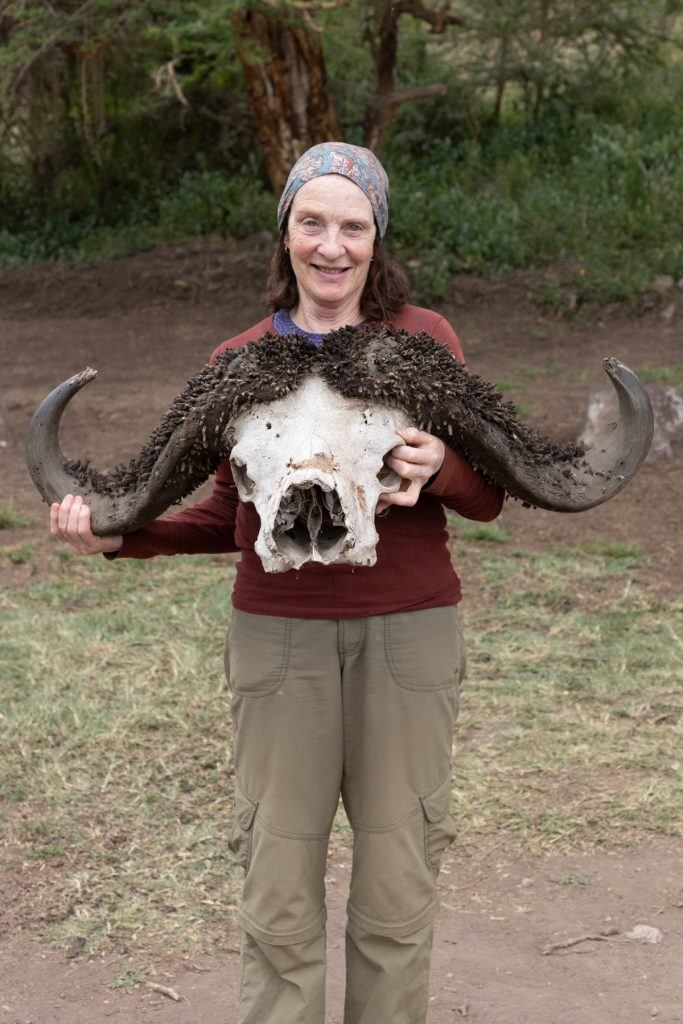
Linda holding the gigantic (and heavy!) skull of an African Buffalo at one of our picnic stops in the Ngorongoro Crater Conservation Area (image by Inger Vandyke)
On our next full day in the Serengeti we left before sunrise again. The distances in the Serengeti are very large which makes for some very long days on safari but I think we were all so charged with adrenaline and keen to be in the right place at the right light, I never had anyone turn up late for safari. We were all just too excited.
Driving out in the gloom we again saw herds of impalas and zebras but as the light got better we encountered a pride of 17 lions who had taken down a young wildebeest in the night. It was difficult to know how many there were at first as a lot of the pride were cubs and they were hiding in the long grass. As we sat there watching this scene and taking photos it was fascinating to watch the dynamics of a kill unfold. Scavengers like jackals and hyena were prowling about and the kill even attracted Tawny Eagles that were being mobbed by Fork-tailed Drongos. We watched in great amusement as one of the lionesses guarding her kill was approached by a hyena which she proceeded to chase off in a super fast pursuit! Obviously she had a real thing about hyenas and we all thought her chase was hilarious!
We drove off for breakfast at a remote campsite in the Serengeti and as we arrived we encountered a uniquely safari issue – we had to move a herd of impala out of our breakfast spot before we could eat! As we enjoyed this lovely spot we had to ourselves we were joined by weavers and even a Martial Eagle flying overhead nearby.
Our next stop was a popular visitor’s centre in the Serengeti and I wanted to stop here as it sits at the base of a kopje that is adorned with candlestick euphorbias. It was here we went for a short walk to see if we could find some of the resident hyraxes and birds. In the end we found Slate-coloured Bubu and Yellow-breasted Apalis in the euphorbias. At the end of the walk we found (with the help of rest stop staff) rock hyraxes living in the rafters of the visitor centre building. Running around nearby we saw families of Dwarf Mongoose and Banded Mongoose. We watched in awe as a Dwarf Mongoose actually carried her young off in her mouth right in front of us which was so very sweet! It was here we saw our first Brown-headed Parrots for the trip in the trees that provided shade for the building.
Safari was calling though and we had to go. As we drove out exploring we found a fantastic dead tree that seemed to be playground for a variety of birds including nesting Grey Woodpeckers, roosting Fischer’s Lovebirds, a Yellow-billed Stork and Greater Blue-eared Starlings. The dead wood obviously provided a lovely backdrop for photos.
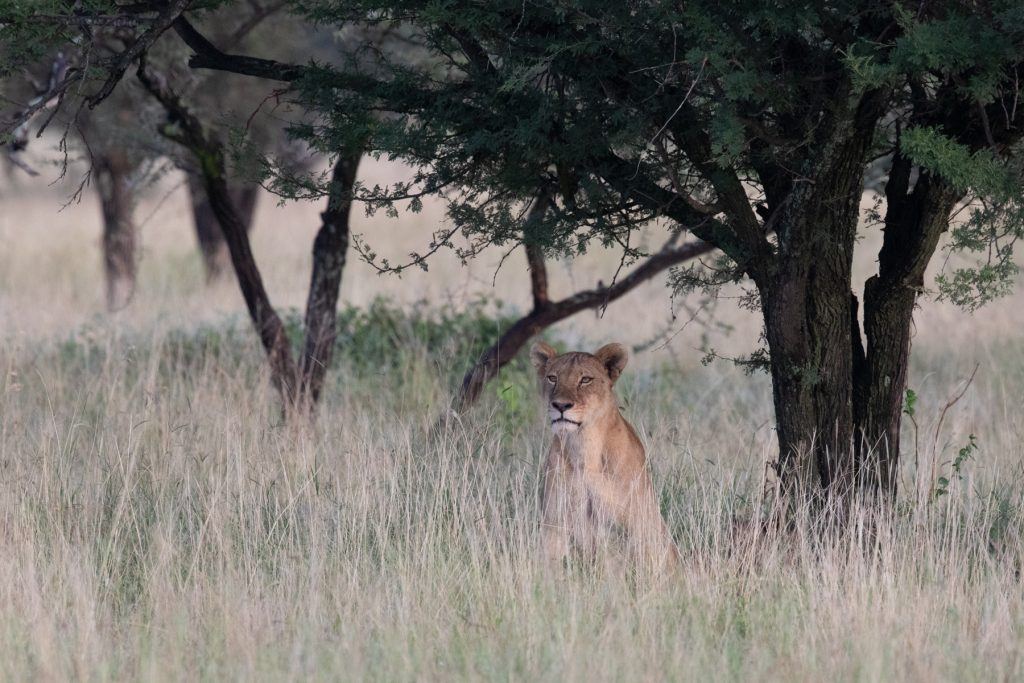
Why you should never just ‘find a tree to go behind’ looking for a toilet on safari! (image by Inger Vandyke)
From there we found a pool which had a hilarious hippo rolling around on its back in the mud and as we ventured on through giraffes and wildebeest we heard about a female leopard who had appeared on the road not far from where we were. We went over and found ourselves in our first ‘leopard jam’ of the trip as a number of vehicles all vied for better views of this stunning cat. She seemed very unperturbed by it all as we walked around and watched her scenting her territory on the side of the road. She finally ended up in a tree where she could take some cover and we sat with her for a while watching to see what she might do. She finally descended and decided to head to a distant Kigelia tree. Hoping that she might come back, we realized she had disappeared into the bush so we moved on also.
That afternoon we visited the beautiful and remote Moro Kopjes near Lake Magadi. It had been raining a lot out there so we couldn’t access the roads around the Kopjes themselves but we did enjoy some views of Double-banded Coursers, waterbirds, giraffes, zebras, a group of very curious rock climbing Olive Baboons and some fabulous stormy skies. Later that day we drove up to our lunch lookout spot from the previous day for a break. The storm skies were intensifying so we stopped to practice the theory of sunset photos before we started our drive back to the lodge. On the way back to the lodge we chanced upon another migration herd, this one filled with hundreds of zebras which was really spectacular so we drove around trying to find great angles to photograph it with. Of course by the time we edged closer to the lodge the skies just got more and more dramatic so we stopped to capture some amazing moody sky and cloud formations before the light became too dim to do any more.
FROM SERENGETI TO NDUTU
On our last Serengeti morning we packed up our vehicle and safari’d our way out of the Serengeti. Our first sighting of the day was herds of zebras on a nearby hill which we stopped for a brief moment to watch before we noticed a lovely Hammerkop hunting for frogs in the rain filled pools on the roadside.
We decided to drive out to Gul Kopjes again looking for cats and the long drive out there via Maasai Kopjes afforded us sightings of four Bat-eared Foxes, Marabou Storks, Rock Hyraxes and Banded Mongoose. We stopped for breakfast under a beautiful umbrella acacia where we were joined by Superb Starlings. On our drive we also found a couple of very over-filled female lion cubs who were so stuffed with recently devoured prey they could barely walk. At a remote pool we found a group of six hyenas all sleeping next to the water but each with their bottoms in the water! I’m not sure what was going on in their heads (or in their butts for that matter!) but it was quite funny to see all of them lounging around and keeping their rear ends cool.
It was also on this drive that we saw our first and only White-headed Vulture flying around with a mixed flock of vultures who seemed to be circling over an inaccessible carcass.
We finally made it to Gul Kopjes and it was here we drove around slowly in search of any cats that might be in the rocks. We first found a beautiful Barn Owl pair that were nesting in a rock crevasse and we also stopped to photograph a cute Leopard Tortoise on the track. It was in the last kopje, however, that we found them. I spotted two lions, a male and a female, sunning themselves on the granite rocks in a large kopje. What an incredible sighting! We watched these two interact, occasionally wander off and then return to these amazing rocks. For a while we followed the male as it looked like he was going to move off to another kopje but he just went for a short stroll and returned to the original one. Meanwhile the female also took a short walk out on to the plains and we laughed as we watched a Black-backed Jackal howling as it followed her back to the kopje. It might have been trying to alert other jackals to the fact that lions were around?
What a tremendous way to finish our time in the Serengeti. Time was ticking on and we had to make it out of the gate on time. Since the lions were so incredible this meant we had to rush a little to make it to the gate. We even had to rush past another hunting Serval without stopping so we could make it in time to check out and have lunch. With a hair in it we got there just in time and we stopped at a lovely picnic spot near the gate to have some lunch and a short walk up the kopje at the back. From the summit of the walk we got beautiful views over the ‘grass sea’ in the Serengeti just as it was being washed with a sudden downpour of rain. It was so very beautiful and a fitting farewell to our time in this magnificent, gigantic park.
NDUTU
Our final stop of the tour, Ndutu, was waiting for us so we took a slow safari drive around the edge of the Serengeti to yet another incredible location.
On this leg of our trip we got stuck in traffic jams of both wildebeest and zebras and as we turned off to Ndutu we found our first endemic Grey-breasted Francolins of the trip. On the drive in to the lodge we found our first Kirk’s Dikdiks, giraffes and our first sightings of Green Wood Hoopoes flying around the acacias.
We decided to have an early finish to the day when we arrived at Ndutu, not only because we were tired but the lodge is so beautiful that we all just wanted to relax.
I had hoped to have our first dinner there under the stars but the rain set in so we enjoyed a wonderful meal inside instead. The resident genets never appeared that night but we did dine with flying bats and even a resident sunbird who had decided to nest in one of the lightshades in the dining room. Although Ndutu lodge is a little more simple we all instantly fell in love with it due to the super friendly staff and the homelike feel of this wild bush camp that is unfenced and on the frontier of stunning Lake Ndutu.
The next morning we woke up extremely early to enjoy a coffee and snack with the resident Spotted Genets who live in the roof of the lodge at Ndutu, before we went off on safari to capture the birdlife on Lake Ndutu in the most extraordinarily beautiful sunrise light. We enjoyed some magnificent photography of waterbirds that morning and for a while we also followed a large black-maned lion wandering along the edge of the lake. We found a lovely peninsula to enjoy our picnic breakfast that had beautiful lake views and our first Purple Grenadiers of the trip.
Our morning safari included visiting a vulture dinner, large groups of Wattled Starlings in the acacias, fantastic encounter with two very close Bat-eared Foxes, displaying Pin-tailed Whydahs, a male and female lion under a tree, African Hoopoe, towers of giraffes, running herds of Eland, Steinbok and some lovely giraffes wandering around the shores of Lake Ndutu with flamingos in the background.
It was Ndutu where we could finally enjoy a midday break so we returned to the lodge for lunch and some photography of chameleons, sunbirds and other birdlife in the lodge grounds.
After lunch we went back out on safari and were stunned when we chanced upon an African Wild Cat! I think we must have flushed him because he ran off so quickly it was impossible to take photographs but what a great sighting!!!!
It ended up being a rather quiet safari that afternoon. Our drive on the plains didn’t really produce any exciting sightings so we drove back to the pans area where we found a solo lioness in the marshes. Driving up onto a nearby hill we tried to search for her but without luck. We found a lovely old Eland trying to put up with marauding oxpeckers on its neck and head. After hearing some threat calls from Guinea fowls we also found a young Martial Eagle roosting in a tree. The highlight of our afternoon came at the hands of a solo wandering female hippo who we jokingly named “Minty”. We found her chewing on vegetation that smelled a lot like bush peppermint and as she wandered around we slowly followed her in our vehicle. It was lovely to listen to her eat and the smell of the crushed vegetation was wonderful but the real highlight came when she stopped eating to come over to us and she got so close to our car that none of us could take photos! She stopped to look at all of us and then proceeded to go and scent our bumper bar! What a fantastic encounter! I don’t think any of us had ever been around such a tame hippo in our lives.
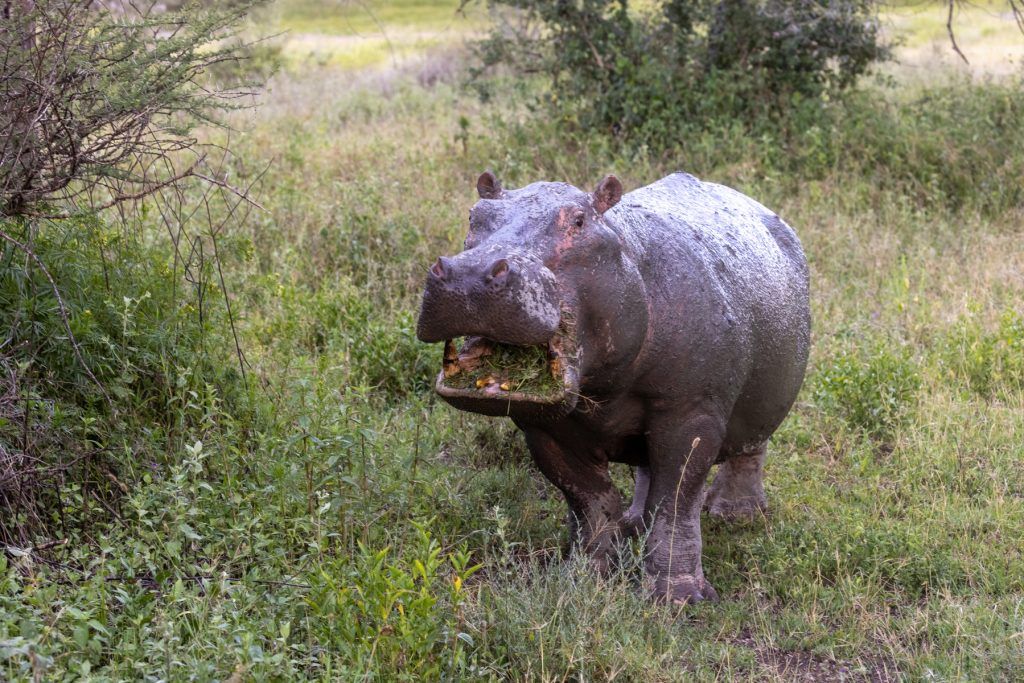
Everyone’s favourite hippo “Minty” on her grazing walk at Ndutu (image by Inger Vandyke)
Other sightings that day included baby giraffes and both Diedrich’s and Great Spotted Cuckoos. We took a short drive looking for nocturnal animals before we returned to the lodge but we had no success so we went back and had the most stunning dinner under the stars at the lodge.
The next morning we were greeted with the most incredible red sunrise so we stopped to photograph both the skies and also some beautifully silhouetted flamingo groups on Lake Ndutu. Our morning sightings included lovely encounters with waterbirds, Little Bee Eaters, Pearl-spotted Owlets, Martial Eagle and Yellow-billed Stork. We also saw a group of Banded Mongoose who were surprisingly curious until one of my guests actually dropped his phone out of the car and the noise of that sent them all scurrying while we all laughed hard, trying to work out who would be able to retrieve the phone since we were in the territory of lions. Our fearless driver, Exaud, was the one to collect it and we drove off on safari still giggling at the shocked mongoose and phone incident! We saw a nearby Leopard Tortoise but he was impossible to photograph so we drove to the pans where we saw three lions sleeping out in the open. From there we went out on to the plains and enjoyed a wonderful encounter with a Cheetah mother and her two cubs! It was our first active cheetah sighting of the trip and we were all beguiled by the cubs especially, even if the light was harsh. We stayed with them for quite sometime before lunch and a siesta called us back to the lodge. As we dined we also got a chance to do some more photography in the grounds, especially of the resident chameleons who were adorable. We also found a resident Yellow-winged Bat roosting which just added to our growing photography portfolios.
We left for the afternoon safari in the pouring rain and initially I was worried about the tracks being impassable but we were OK. Our first sighting was that of a tiny Steinbok trying to pin its ears back to stop them from getting too wet! Our next sighting was a mother lion with her two fully grown male cubs.
We went back out to the cheetah family we’d met earlier that day and the mother had shifted her cubs a little to shelter them from the rain but we ended up having a full-on Cheetah afternoon as we spent time photographing this adorable family again. In the distance we saw a wandering herd of wildebeest that started to run. Sensing that something might be chasing them we drove off to look, only to find a male cheetah was in pursuit of a young wildebeest trailing the herd! We deliberately stayed back so as to not interfere with its hunt and in the distance we watched him capture that young wildebeest right in front of our eyes! Again we let him take the animal down and start eating as we worried he might get chased off his prey by us so when he settled we went over to watch.
It was astonishing to realise how quickly the Spotted Hyenas appeared on the scene so we took it in turns with another vehicle trying to chase off the hyenas from stealing the cheetah prey. In the end we had to let them take it off the cheetah as it was getting dark and we needed to get back to the lodge but at least the cheetah managed to eat something before this happened.
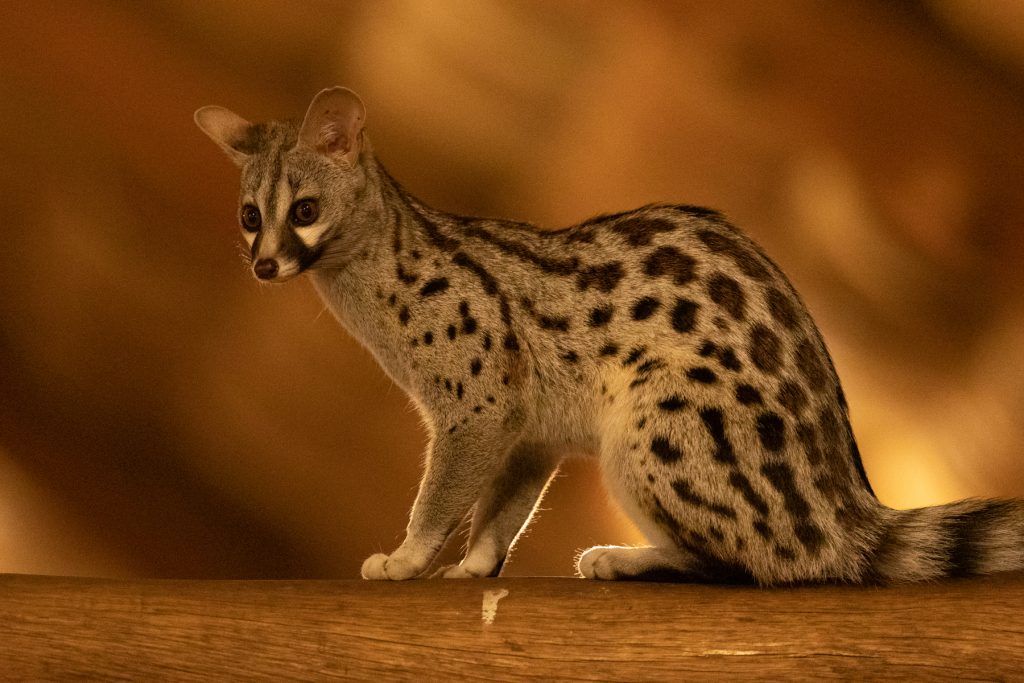
One of the gorgeous Spotted Genets living in the ceiling of the main lodge at Ndutu (image by Inger Vandyke)
The next day we went off for sunrise again and our first encounter was with a bunch of lions who had cubs on a hill near to Lake Ndutu. When we drove over to look at them we actually got hemmed in by a lion who decided to lie down and rest behind our car. Just when I thought it might be a good idea to drive off and leave them, two of the cubs started to play fight and it turned out that these photos ended up being some of the most wonderful of the trip. Watching these cubs fight and play with sticks was amazing. It was hard to leave them in the end!
Driving further on safari our avian encounters continued to enthrall us with sightings of a Grey-breasted Francolin in a beautiful tree, Blue Whydah and Bateleur.
We stopped for breakfast on a hill with lovely acacias and views over the pans. It was there we had a lovely close encounter with Von Der Decken’s Hornbills while we ate.
After breakfast we drove out to Hidden Valley, in a remote patch of Ndutu’s reserve and we found hunting Secretarybirds, many waterbirds and a dark Tawny Eagle. On the way back to the lodge we found Little Bee Eaters and also a European Roller.
Lunch was the last real chance to do a photo editing session as we’d been so busy with safari sightings that we were all either overwhelmed or tired from being out in the bush each day so we learned a little about editing sharpness, lighting, cloning etc and also experimented with the new ‘Select Sky’ and ‘Select Subject’ masks in Adobe Lightroom.
On our final afternoon safari in Ndutu we drove out of the lodge only to find the most amazing male leopard sleeping in a tall acacia not far from the lodge. We drove around him to a couple of different places trying to get the best angles for photos as he was absolutely magnificent! At one of the places we angled ourselves into we had both a leopard sleeping above our heads and stunning Variable Sunbirds in the bushes around our car. It all felt like an earthly paradise, particularly since we were the only people at this stunning sighting! We stayed with the leopard until he descended from the tree and then we drove off in search of other things to photograph.
We did see some fighting giraffes but they were in bushes so it was hard to really get a full image of them so we moved off to visit the distant Lake Masek.
Driving over there we actually got caught in a funny ‘giraffe jam’ with a solo giraffe trying to hide in a tree but while standing on a road. Naturally on safari giraffes and other wildlife always have the right of way so we had to wait for this guy to move off which he eventually did.
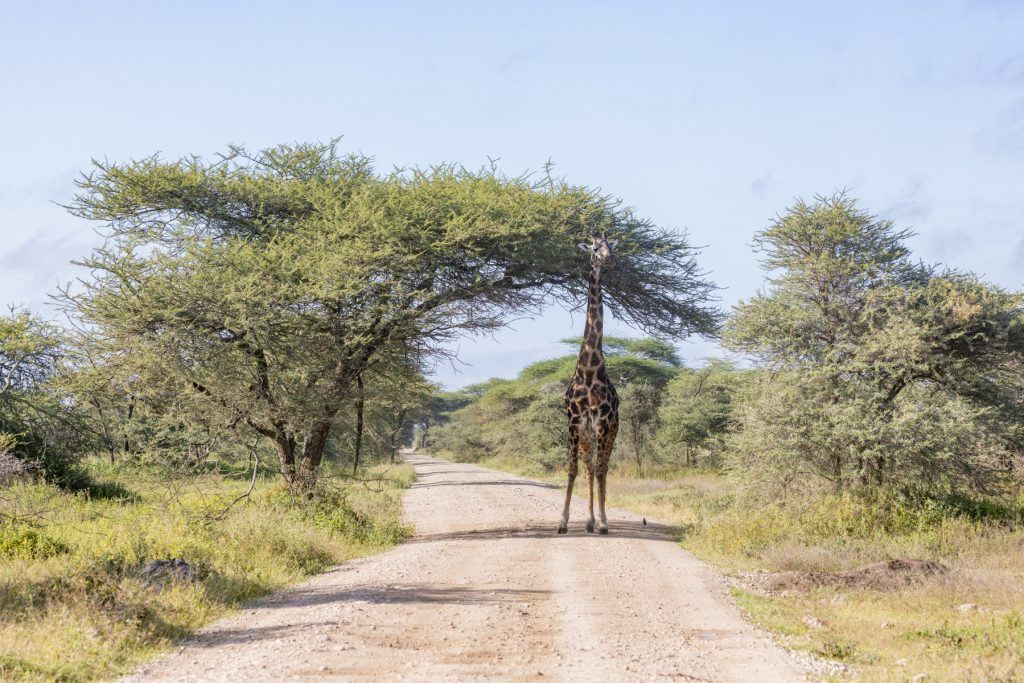
Giraffes always have the right of way! (image by Inger Vandyke)
Over at Lake Masek we found many more waterbirds, giraffes with oxpeckers, lovely breeding-plumaged bishops and a young Augur Buzzard begging for food from its parents. We also encountered more dikdiks and the lake had some distant hippos.
It was a lovely, quiet way to end our afternoon safari before we returned to the lodge for our final spectacular dinner under the stars.
As has been the case with our numerous safaris at Ndutu over the years it was hard to get everyone to leave.
Our final sunrise photography safari actually saw us getting bogged in the mud near the lake so we almost didn’t! I jest. We got out of the bog and returned to the lodge for a final breakfast and group photos before we left Ndutu to finish the tour.
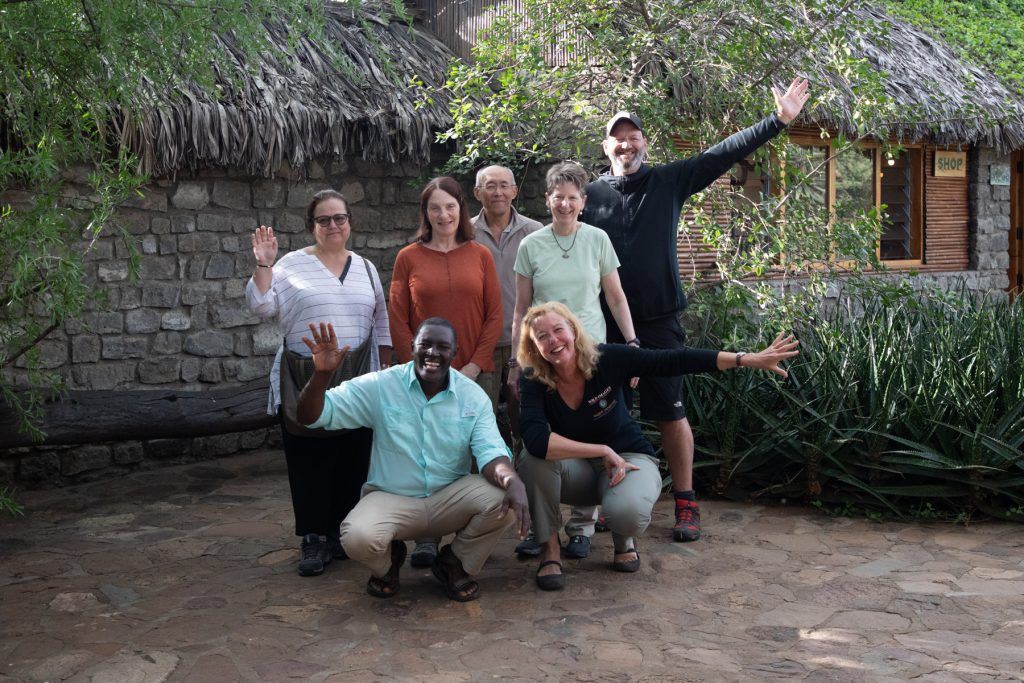
One fantastic group of happy photographers at our final morning in Ndutu (image by Inger Vandyke)
On our last drive out towards Ngorongoro and then on to Arusha we found two cheetahs on a kill with a Golden Wolf approaching them. We saw more hyenas and game before we drove past Oldupai and up towards the Maasai bomas in the hills. The wild honey I bought for my guests at the start of the trip left an indelible mark on them so we stopped to buy more on the way back to Arusha and I think all of us felt a great sadness to be leaving such an incredible safari trip with so many sightings.
What a fantastic journey through Tanzania! I think we all ended up shooting more than we ever expected to do on a safari tour due to the extreme variety and outstanding sightings but what more can a safari guide ask for?
I think the only complaints were that the editing workload from the trip would be huge with so many images and memories to process.
Our next tour to Tanzania will be in 2024 and I can hardly wait to go back!































































































































